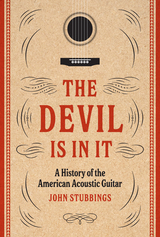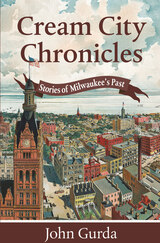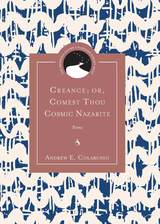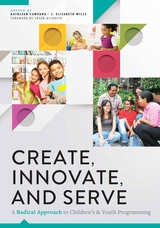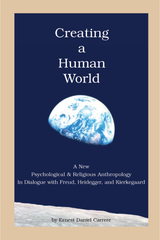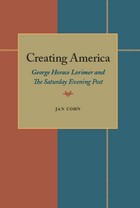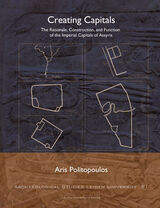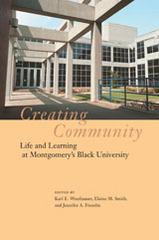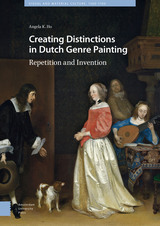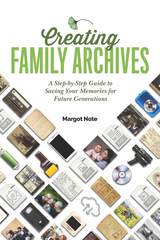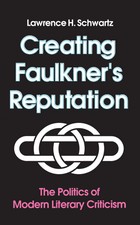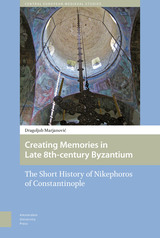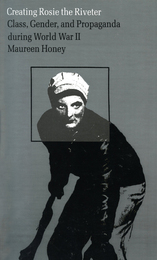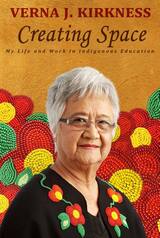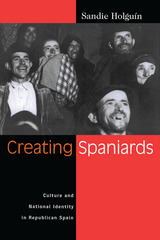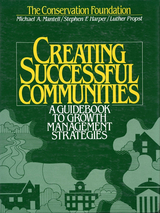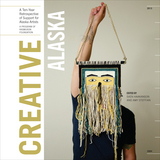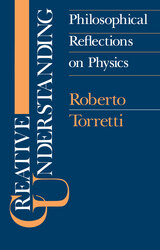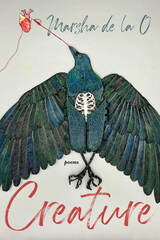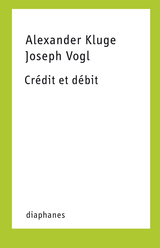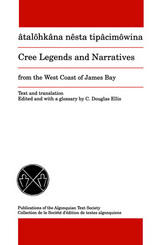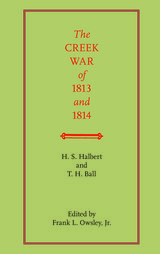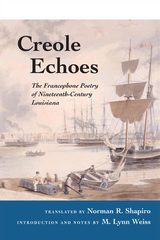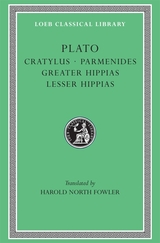 Cratylus. Parmenides. Greater Hippias. Lesser Hippias
Plato
Harvard University Press On names, forms, beauty, and lies.
Plato, the great philosopher of Athens, was born in 427 BC. In early manhood an admirer of Socrates, he later founded the famous school of philosophy in the grove Academus. Much else recorded of his life is uncertain; that he left Athens for a time after Socrates’ execution is probable; that later he went to Cyrene, Egypt, and Sicily is possible; that he was wealthy is likely; that he was critical of “advanced” democracy is obvious. He lived to be 80 years old. Linguistic tests including those of computer science still try to establish the order of his extant philosophical dialogues, written in splendid prose and revealing Socrates’ mind fused with Plato’s thought.
In Laches, Charmides, and Lysis, Socrates and others discuss separate ethical conceptions. Protagoras, Ion, and Meno discuss whether righteousness can be taught. In Gorgias, Socrates is estranged from his city’s thought, and his fate is impending. The Apology (not a dialogue), Crito, Euthyphro, and the unforgettable Phaedo relate the trial and death of Socrates and propound the immortality of the soul. In the famous Symposium and Phaedrus, written when Socrates was still alive, we find the origin and meaning of love. Cratylus discusses the nature of language. The great masterpiece in ten books, the Republic, concerns righteousness (and involves education, equality of the sexes, the structure of society, and abolition of slavery). Of the six so-called dialectical dialogues Euthydemus deals with philosophy; metaphysical Parmenides is about general concepts and absolute being; Theaetetus reasons about the theory of knowledge. Of its sequels, Sophist deals with not-being; Politicus with good and bad statesmanship and governments; Philebus with what is good. The Timaeus seeks the origin of the visible universe out of abstract geometrical elements. The unfinished Critias treats of lost Atlantis. Unfinished also is Plato’s last work, Laws, a critical discussion of principles of law which Plato thought the Greeks might accept.
The Loeb Classical Library edition of Plato is in twelve volumes.
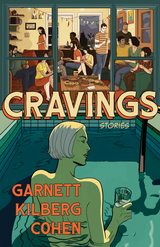 Cravings
Garnett Kilberg Cohen
University of Wisconsin Press, 2023 Opening with “Hors d’oeuvres” and closing with a “Feast,” the stories in Cravings pulse with longing, missed opportunities, recriminations, and joy. Garnett Kilberg Cohen leads readers through acutely crafted explorations of the way events shape and change our lives, sometimes for the better and sometimes in ways that haunt us forever. Love, friendship, childhood, parenthood, and leaving home—all these experiences of desire, driven by the unrelenting passage of time—form the heart of this charismatic collection.
Kilberg Cohen’s captivating and vulnerable characters often recognize their shortcomings and past mistakes, but cannot always rise above them. One woman learns to forgive her husband’s ex; another fears her love of salty snacks caused a family tragedy. A stoic rural community drives a newcomer out of town; a young man’s entire life is colored by a traumatic childhood event at a zoo. Focusing on the specific, unforgettable moments that reveal our connections to one another, Cravings offers an expansive vision of humanity that lingers long after the final page is turned.
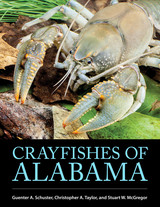 Crayfishes of Alabama
Guenter A. Schuster, Christopher A. Taylor, and Stuart W. McGregor
University of Alabama Press, 2022 A comprehensive assessment of the 99 known species of crayfishes inhabiting the state of Alabama
Crayfishes are common organisms in many freshwater habitats. They are usually the largest invertebrates and often represent the greatest amount of invertebrate biomass in their environments. Identified as a keystone species in many ecological communities, aquatic biologists are fond of saying “they eat everything, and everything eats them.”
Crayfishes—sometimes called crawfishes, crawdads, mudbugs, ditchbugs, yabbies, and flusskrebs—are taxonomically and ecologically a diverse group of aquatic crustaceans. There are more than 600 known species worldwide and North America alone is home to more than 400. As home to 99 documented species, Alabama is a global hotspot for crayfish diversity.
Crayfishes of Alabama is the first comprehensive reference work on the subject and provides the most up-to-date information on the vast range of crayfishes known to reside in Alabama. The authors have collected specimens and data from the state’s major and minor waterways and lakes, as well as specialized habitats such as burrows, caves, roadside ditches, marshes, swamps, and temporary autumnal ponds. This volume represents the most in-depth treatment of crayfishes found in the southeastern United States and offers detailed species accounts including descriptions of morphological characters, color, maximum size, comparative species, distribution and habitat, biology, crayfish associates, and conservation status. The species accounts are accentuated with color photographs, photographic morphological plates, and dot maps showing state and national distributions. A photographic key is provided to guide the identification of all 99 species.
Crazy Ji: Chinese Religion and Popular Literature
Meir Shahar
Harvard University Press, 1998 Crazy Ji is the one of the most colorful deities in the pantheon of late imperial and modern China. The author uses the evolution of his cult to address central questions regarding the Chinese religious tradition, its relation to social structure, and the role of vernacular fiction and popular media in shaping religious beliefs. Shahar demonstrates that vernacular novels and oral literature played a major role in the dissemination of knowledge about deities and the growth of cults and argues that the body of religious beliefs and practices we call "Chinese religion" is inseparable from the works of fiction and drama that have served as vehicles for its transmission.
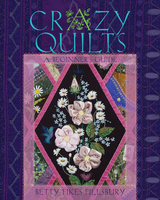 Crazy Quilts: A Beginner’s Guide
Betty Fikes Pillsbury
Ohio University Press, 2016 Textile artist and instructor Betty Fikes Pillsbury has won hundreds of awards for her homages to the elegance of Victorian crazy quilting. Grounded in traditional methods but crafted with elements of whimsy, each piece stands on its own as a work of art. In this definitive guide, Pillsbury shares her methods for piecing, embroidering, and embellishing. Her instructions equip readers at any level of quilting skill to use those techniques to express their own visions. Encouraging her readers to see functional and artistic possibilities beyond quilts (wall hangings, purses, and pillowcases are just some of the options), Pillsbury shows them how to make each work by hand, the slow cloth way. An inspiring primer for beginning and experienced quilters alike, this meticulously illustrated how-to book is far more expansive than previous guides. Pillsbury—a master of the form—shows us why crazy quilting belongs firmly in the twenty-first century.
Cream City Chronicles: Stories of Milwaukee’s Past
John Gurda
Wisconsin Historical Society Press, 2016 Cream City Chronicles is a collection of lively stories about the people, the events, the landmarks, and the institutions that have made Milwaukee a unique American community. These stories represent the best of historian John Gurda’s popular Sunday columns that have appeared in the Milwaukee Journal Sentinel since 1994. Find yourself transported back to another time, when the village of Milwaukee was home to fur trappers and traders. Follow the development of Milwaukee’s distinctive neighborhoods, its rise as a port city and industrial center, and its changing political climate. From singing mayors to summer festivals, from blueblood weddings to bloody labor disturbances, the collection offers a generous sampling of tales that express the true character of a hometown metropolis.
Cream of Kohlrabi
Floyd Skloot
Tupelo Press, 2011 Floyd Skloot’s new book gathers sixteen stories that combine unsentimental comedy and forceful emotion. As in his award- winning poetry and memoirs, Skloot’s fiction shows how individual people, families, and communities face the starkest of challenges, including bodily maladies, the most harrowing of which often come with aging. Yet alienating experience can lead to moments of powerful intimacy, as dark times are lit by sudden incursions of love and hope, and a yearning for community summons poignant expression.
Creance; or, Comest Thou Cosmic Nazarite: Poems
Andrew E. Colarusso
Northwestern University Press, 2019 In Creance; or, Comest Thou Cosmic Nazarite, Andrew Colarusso hybridizes lost and unknown spaces, taking his title from a falconry term for the cord used to restrain a bird. The word derives from the late fifteenth century, from the French créance (“faith”), also denoting a cord to retain a bird of peu de créance (“of little faith,” i.e., which cannot yet be relied upon). Poems of personal narrative and metaphorical depth speak for the voices searching—in a world that lashes out or looks right past what remains tethered to the past—the parts that occupy the whispers of wanting, the dreams of finally being seen.
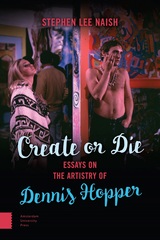 Create or Die: Essays on the Artistry of Dennis Hopper
Stephen Lee Naish
Amsterdam University Press, 2016 Dennis Hopper (1936-2010) was one of most charismatic and protean figures to emerge from the American independent film movement of the 1960s and '70s, an incredibly compelling screen presence who helped give cult classics like Easy Rider and Blue Velvet their off-kilter appeal. But his artistic interests went far beyond acting, and this collection of essays is the first major work to take in Hopper as a creative artist in all his fields of endeavour, from acting and directing to photography, sculpture, and expressionist painting. Stephen Naish doesn't skimp on covering Hopper's best-known work, but he breaks new ground in putting it in context with his other creative enterprises, showing how one medium informs another, and how they offer a portrait of an artist who was restless, even flawed at times, but always aiming to live up to his motto: create or die. Follow the podcasts by Steve Naish here
 Created Unequal: The Crisis in American Pay
James K. Galbraith
University of Chicago Press, 2000 The boom of the U.S. economy in the late 1990s suggests that Americans are better off than they were a decade ago, but this is not true across the board and the reason, as James Galbraith explains, is wage inequality. He contends that inequality is not the result of impersonal market forces but of specific government decisions and the poor economic performance they created. Featuring a new afterword on wage shifts since 1994, Created Unequal is a rousing book that reminds us we can reclaim our country through economic understanding, commonsense policy, and political action.
"Created Unequal is not light reading, but Galbraith's elegant arguments, passionate exposition, and profound conclusions make it worth the trouble. . . . [Galbraith] remind[s] us that the economy is and ought to be run by humans, not humans by the economy."—Joanna Ciulla, Los Angeles Times Book Review
"Created Unequal is a lucid and wise explanation of why America seems to be prospering while most Americans aren't. James Galbraith takes steady aim at a variety of widely accepted economic myths and hits most of them dead center. This book will tell you a lot about the way your economic world really works."—Jeff Faux, President of the Economic Policy Institute
"[A] brilliant and iconoclastic examination of the major social trend of our time."—Michael Lind, Washington Monthly
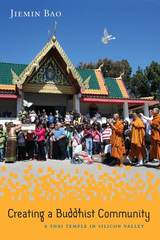 Creating a Buddhist Community: A Thai Temple in Silicon Valley
Jiemin Bao
Temple University Press, 2015 The Wat Thai Buddhist Temple in Silicon Valley was founded in 1983 by a group of predominantly middle-class men and women with different ethnic and racial identities. The temple, which functions as a religious, social, economic, educational, and cultural hub, has become a place for the community members to engage in spiritual and cultural practices.
In Creating a Buddhist Community, Jiemin Bao shows how the Wat Thai participants practice Buddhism and rework gender relationships in the course of organizing temple space, teaching meditation, schooling children in Thai language and culture, merit making, fundraising, and celebrating festivals.
Bao’s detailed account of the process of creating an inclusive temple community with Thai immigrants as the majority helps to deconstruct the exoticized view of Buddhism in American culture. Creating a Buddhist Community also explores Wat Thai’s identification with both the United States and Thailand and how this transnational perspective reimagines and reterritorializes what is called American Buddhism.
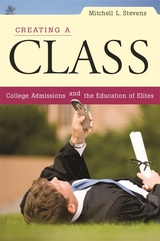 Creating a Class: College Admissions and the Education of Elites
Mitchell L. Stevens
Harvard University Press, 2009 In real life, Mitchell Stevens is a professor in bustling New York. But for a year and a half, he worked in the admissions office of a bucolic New England college that is known for its high academic standards, beautiful campus, and social conscience. Ambitious high schoolers and savvy guidance counselors know that admission here is highly competitive. But creating classes, Stevens finds, is a lot more complicated than most people imagine.
Admissions officers love students but they work for the good of the school. They must bring each class in "on budget," burnish the statistics so crucial to institutional prestige, and take care of their colleagues in the athletic department and the development office. Stevens shows that the job cannot be done without "systematic preferencing," and racial affirmative action is the least of it. Kids have an edge if their parents can pay full tuition, if they attend high schools with exotic zip codes, if they are athletes--especially football players--and even if they are popular.
With novelistic flair, sensitivity to history, and a keen eye for telling detail, Stevens explains how elite colleges and universities have assumed their central role in the production of the nation's most privileged classes. Creating a Class makes clear that, for better or worse, these schools now define the standards of youthful accomplishment in American culture more generally.
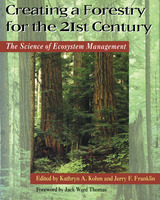 Creating a Forestry for the 21st Century: The Science Of Ecosytem Management
Edited by Kathryn A. Kohm and Jerry F. Franklin; Foreword by Jack Ward Thomas
Island Press, 1997 Over the past decade, a sea change has occurred in the field of forestry. A vastly increased understanding of how ecological systems function has transformed the science from one focused on simplifying systems, producing wood, and managing at the stand-level to one concerned with understanding and managing complexity, providing a wide range of ecological goods and services, and managing across broad landscapes. Creating a Forestry for the 21st Century is an authoritative and multidisciplinary examination of the current state of forestry and its relation to the emergent field of ecosystem management. Drawing upon the expertise of top professionals in the field, it provides an up-to-date synthesis of principles of ecosystem management and their implications for forest policy. Leading scientists, including Malcolm Hunter, Jr., Bruce G. Marcot, James K. Agee, Thomas R. Crow, Robert J. Naiman, John C. Gordon, R.W. Behan, Steven L. Yaffee, and many others examine topics that are central to the future of forestry: - new understandings of ecological processes and principles, from stand structure and function to disturbance processes and the movement of organisms across landscapes
- challenges to long-held assumptions: the rationale for clearcutting, the wisdom of short rotations, the exclusion of fire
- traditional tools in light of expanded goals for forest landscapes
- managing at larger spatial scales, including practical information and ideas for managing large landscapes over long time periods
- the economic, organizational, and political issues that are critical to implementing successful ecosystem management and developing institutions to transform knowledge into action
Featuring a 16-page center section with color photographs that illustrate some of the best on-the-ground examples of ecosystem management from around the world, Creating a Forestry for the 21st Century is the definitive text on managing ecosystems. It provides a compelling case for thinking creatively beyond the bounds of traditional forest resource management, and will be essential reading for students; scientists working in state, federal, and private research institutions; public and private forest managers; staff members of environmental/conservation organizations; and policymakers.
Creating a Human World: A New Psychological and Religious Anthropology In Dialogue with Freud, Heidegger, and Kierkegaard
Ernest Daniel Carrere
University of Scranton Press, 2006 In Creating a Human World, Trappist monk and scholar Ernest Daniel Carrere explores what it means to be fully human, to live in a shared world, and to resist the easy tendency to flee reality and seek pleasure in material pursuits. To do so he examines the writings of three great modern thinkers—Sigmund Freud, Martin Heidegger, and Søren Kierkegaard—and proposes a new reading of their work in light of his own understanding of New Testament teachings.
Carrere elucidates the paradoxical spiritual truth that salvation lies not in an escape from humanity, but in embracing it. An interdisciplinary tour de force, this book will appeal to anyone interested in philosophy, psychology, religion, or cultural anthropology.
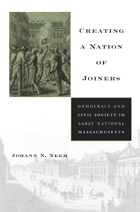 Creating a Nation of Joiners: Democracy and Civil Society in Early National Massachusetts
Johann N. Neem
Harvard University Press, 2008 The United States is a nation of joiners. Ever since Alexis de Tocqueville published his observations in Democracy in America, Americans have recognized the distinctiveness of their voluntary tradition. In a work of political, legal, social, and intellectual history, focusing on the grassroots actions of ordinary people, Neem traces the origins of this venerable tradition to the vexed beginnings of American democracy in Massachusetts.
Neem explores the multiple conflicts that produced a vibrant pluralistic civil society following the American Revolution. The result was an astounding release of civic energy as ordinary people, long denied a voice in public debates, organized to advocate temperance, to protect the Sabbath, and to abolish slavery; elite Americans formed private institutions to promote education and their stewardship of culture and knowledge. But skeptics remained. Followers of Jefferson and Jackson worried that the new civil society would allow the organized few to trump the will of the unorganized majority. When Tocqueville returned to France, the relationship between American democracy and its new civil society was far from settled.
The story Neem tells is more pertinent than ever—for Americans concerned about their own civil society, and for those seeking to build civil societies in emerging democracies around the world.
 Creating a National Home: Building the Veterans’ Welfare State, 1860–1900
Patrick J. Kelly
Harvard University Press, 1997 For tens of thousands of Union veterans, Patrick Kelly argues, the Civil War never ended. Many Federal soldiers returned to civilian life battling the lifelong effects of combat wounds or wartime disease. Looking to the federal government for shelter and medical assistance, war-disabled Union veterans found help at the National Home for Disabled Volunteer Soldiers. Established by Congress only weeks prior to the Confederate surrender, this network of federal institutions had assisted nearly 100,000 Union veterans by 1900. The National Home is the direct forebear of the Veterans Administration hospital system, today the largest provider of health care in the United States.
Kelly places the origins of the National Home within the political culture of U.S. state formation. Creating a National Home examines Congress's decision to build a federal network of soldiers' homes. Kelly explores the efforts of the Home's managers to glean support for this institution by drawing upon the reassuring language of domesticity and "home." He also describes the manner in which the creators of the National Homes used building design, landscaping, and tourism to integrate each branch into the cultural and economic life of surrounding communities, and to promote a positive image of the U.S. state.
Drawing upon several fields of American history--political, cultural, welfare, gender--Creating a National Home illustrates the lasting impact of war on U.S. state and society. The building of the National Home marks the permanent expansion of social benefits offered to citizen-veterans. The creation of the National Home at once defined an entitled group and prepared the way for the later expansion of both the welfare and the warfare states.
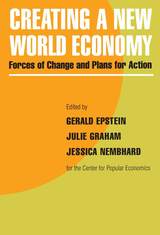 Creating a New World Economy: Forces of Change and Plans for Action
edited by Gerald Epstein, Julie Graham and Jessica Nembhard, foreword by Samuel Bowles
Temple University Press, 1993 How is the global economy affected by increased militarization, inequality between nations and classes, environmental degradation, and U.S. economic decline? What are the current debates and issues? Can free enterprise and government deregulation solve global economic problems?
As the world's attention is focused on the global economy, 25 activist economists address these and many other questions. Essays in Creating a New World Economy describe in accessible language such complex topics as the international debt, Keynesianism, trade policy, immigration, and drug trade.
In addition to analyzing current topics and debates, contributors also offer alternative strategies on topics frequently neglected in traditional economics curricula. Essays explain development strategies and markets in Latin America, Eastern Europe, Africa, and Japan. For students, activists, and general readers, this timely collection explains national and international economic dilemmas that will increasingly challenge us in the next century.
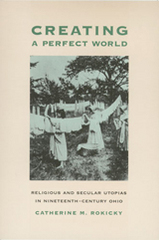 Creating a Perfect World: Religious and Secular Utopias in Nineteenth-Century Ohio
Catherine M. Rokicky
Ohio University Press, 2002 Powerful currents of religious revival and political and social reform swept nineteenth-century America. Many people expressed their radical religious and social ideals by creating or joining self-contained utopian communities. These utopianists challenged the existing social and economic order with alternative notions about religion, marriage, family, sexuality, property ownership, and wage labor.
Between 1787 and 1919, approximately 270 utopian communities existed in the United States. Due to its unique location on the young nation’s frontier, the state of Ohio was the site of much of this activity.
Creating a Perfect World examines Ohio’s utopian movements, both religious and secular. These include the United Society of Believers in Christ’s Second Coming, or Shakers; the Society of Separatists at Zoar; the Mormons, who stopped in the state for several years on their way west; and several societies based on the philosophies of European social reformers Robert Owen and Charles Fourier.
In this detailed account of a unique and fascinating chapter in Ohio’s history, Catherine M. Rokicky profiles these communities and explores their ideals, how and why they were established, their leaders, and their members’ reasons for joining and sometimes leaving. She also examines the roles men and women played, their approaches to communal living and community property, their economic activities, their relations with surrounding communities and the state, and the various reasons for their success or failure.
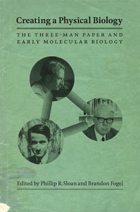 Creating a Physical Biology: The Three-Man Paper and Early Molecular Biology
Edited by Phillip R. Sloan and Brandon Fogel
University of Chicago Press, 2011 In 1935 geneticist Nikolai Timoféeff-Ressovsky, radiation physicist Karl G. Zimmer, and quantum physicist Max Delbrück published “On the Nature of Gene Mutation and Gene Structure,” known subsequently as the “Three-Man Paper.” This seminal paper advanced work on the physical exploration of the structure of the gene through radiation physics and suggested ways in which physics could reveal definite information about gene structure, mutation, and action. Representing a new level of collaboration between physics and biology, it played an important role in the birth of the new field of molecular biology. The paper’s results were popularized for a wide audience in the What is Life? lectures of physicist Erwin Schrödinger in 1944. Despite its historical impact on the biological sciences, the paper has remained largely inaccessible because it was only published in a short-lived German periodical. Creating a Physical Biology makes the Three Man Paper available in English for the first time. Brandon Fogel’s translation is accompanied by an introductory essay by Fogel and Phillip Sloan and a set of essays by leading historians and philosophers of biology that explore the context, contents, and subsequent influence of the paper, as well as its importance for the wider philosophical analysis of biological reductionism.
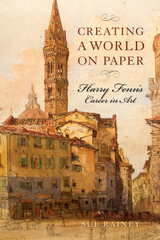 Creating a World on Paper: Harry Fenn's Career in Art
Sue Rainey
University of Massachusetts Press, 2013 Harry Fenn was one of the most skilled and successful illustrators in the United States in the latter half of the nineteenth century, a time when illustrated periodicals and books were the primary means of sharing visual images. Fenn's work fostered pride in America's scenic landscapes and urban centers, informed a curious public about foreign lands, and promoted appreciation of printed pictures as artworks for a growing middle class.
Arriving in New York from London in 1857 as a young wood engraver, Fenn soon forged a career in illustration. His tiny black-and-white wood engravings for Whittier's Snow-Bound (1868) surprised critics with their power, and his bold, innovative compositions for Picturesque America (1872–74) were enormously popular and expanded the field for illustrators and publishers. In the 1880s and '90s, his illustrations appeared in many of the finest magazines and newspapers, depicting the places and events that interested the public—from post–Civil War national reconciliation to the World's Columbian Exposition in 1893 to the beginnings of imperialism in the Spanish-American War.
This handsomely designed volume documents Fenn's prolific career from the 1860s until his death in 1911. Sue Rainey also recounts his adventurous sketching trips in the western United States, Europe, and the Middle East, which enhanced his reputation for depicting far-flung places at a time when the nation was taking a more prominent role on the world stage.
Creating America: George Horace Lorimer and The Saturday Evening Post
Jan Cohn
University of Pittsburgh Press, 1990 Before movies, radio, and television challenged the hegemony of the printed word, the Saturday Evening Post was the preeminent vehicle of mass culture in the United States. And to the extent that a mass medium can be the expression of a single individual, this magazine, with a peak circulation of almost three million copies a week, was the expression of its editor, George Horace Lorimer. Cohn shows how Lorimer made the <I>Post</I> into a uniquely powerful magazine that both celebrated and helped form the values of the time.
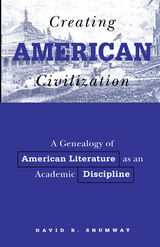 Creating American Civilization: A Genealogy of American Literature as an Academic Discipline
David Shumway
University of Minnesota Press, 1994 “Shumway has written a penetrating and provocative account of the making of American civilization as an academic field.” Gerald GraffUniversity of ChicagoDavid R. Shumway contends that American literature is the product of study - the deliberate invention of a discipline seeking to define the character and legitimate the existence of a specifically American civilization. He traces the various reconstitutions of American literature by examining the discipline’s practices and techniques, discourses and structures, paradigms and unstated assumptions.This genealogy begins around 1890, when American literature as defined by institutions outside the academy, such as magazines and publishing houses, acquired much of the ideology it would display in later phases, including sexism, racism, and class bias. Singular in its treatment of American literary study as a discipline rather than as criticism and in its insistence on the cultural and political work carried on by this discipline, Creating American Civilization will engage literary theorists and historians as well as individuals with an interest in American literature.
 Creating an Inclusive Library: Approaches for Increasing Engagement and Use with Students of Color
Ngoc-Yen Tran
Association of College & Research Libraries, 2024 The critical work of being more inclusive and anti-racist in academic library teaching, collections, and community is even more important in today’s social and political climate. Creating an Inclusive Library: Approaches for Increasing Engagement and Use with Students of Color explores the various methods used by librarians, archivists, and library workers to increase or enhance engagement with and use of library spaces, resources, services, and materials by students of color. Six themed sections provide an opportunity to further engage with issues affecting students of color and to take action to provide more just and equitable teaching and learning environments. - Welcoming and Sense of Belonging
- Culturally Relevant Practices
- Building Representation and Inclusion
- Collaborations and Co-Creation
- Community Building and Engagement
- Fostering Diverse Student Employees
The resources, strategies, and approaches in Creating an Inclusive Library can help all library workers engage with this vital work and build a community of support. As the nature of diversity, equity, inclusion, and anti-racism work in higher education and academic libraries continues to evolve, it is ever more critical to continue this work, to be allies for those engaged in it, and to share how you are creating more inclusive and anti-racist spaces, materials, and services at your library.
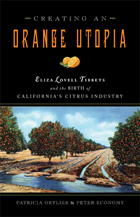 Creating an Orange Utopia: Eliza Lovell Tibbetts and the Birth of California's Citrus Industry
Patricia Ortlieb
Swedenborg Foundation Publishers, 2011 California’s citrus industry owes a huge debt to the introduction of the navel orange tree—in fact, to two trees in particular, the parent trees of the vast groves of navel oranges that exist in California today. Those trees were planted by a woman named Eliza Lovell Tibbets.
Born in Cincinnati in1823, Eliza’s Swedenborgian faith informed her ideals. Surrounded by artists and free thinkers, her personal journey took her first to New York City, then south to create a better environment for newly freed slaves in racially divided Virginia, and onward to Washington, DC, where she campaigned for women’s rights. But it was in California where she left her true mark, launching an agricultural boom that changed the course of California’s history.
Eliza’s story of faith and idealism will appeal to anyone who is curious about US history, women’s rights, abolitionism, Spiritualism, and California’s early pioneer days. Follow Eliza through loves and fortunes lost and found until she finally finds her paradise in a little town called Riverside.
Creating and Maintaining an Ethical Corporate Climate
Woodstock Theological Center
Georgetown University Press, 1990 A report from the Woodstock Theological Center that distills conversations among the business, government, and academic communities to offer an evaluation and recommendations for creating and maintaining an ethical climate in a business corporation.
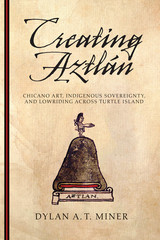 Creating Aztlán: Chicano Art, Indigenous Sovereignty, and Lowriding Across Turtle Island
Dylan A. T. Miner
University of Arizona Press, 2014 In lowriding culture, the ride is many things—both physical and intellectual. Embraced by both Xicano and other Indigenous youth, lowriding takes something very ordinary—a car or bike—and transforms it and claims it.
Using the idea that lowriding is an Indigenous way of being in the world, artist and historian Dylan A. T. Miner discusses the multiple roles that Aztlán has played at various moments in time, from the pre-Cuauhtemoc codices through both Spanish and American colonial regimes, past the Chicano Movement and into the present day. Across this “migration story,” Miner challenges notions of mestizaje and asserts Aztlán, as visualized by Xicano artists, as a form of Indigenous sovereignty.
Throughout this book, Miner employs Indigenous and Native American methodologies to show that Chicano art needs to be understood in the context of Indigenous history, anticolonial struggle, and Native American studies. Miner pays particular attention to art outside the U.S. Southwest and includes discussions of work by Nora Chapa Mendoza, Gilbert “Magú” Luján, Santa Barraza, Malaquías Montoya, Carlos Cortéz Koyokuikatl, Favianna Rodríguez, and Dignidad Rebelde, which includes Melanie Cervantes and Jesús Barraza.
With sixteen pages of color images, this book will be crucial to those interested in art history, anthropology, philosophy, and Chicano and Native American studies. Creating Aztlán interrogates the historic and important role that Aztlán plays in Chicano and Indigenous art and culture.
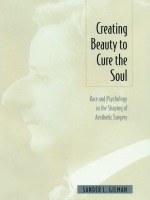 Creating Beauty To Cure the Soul: Race and Psychology in the Shaping of Aesthetic Surgery
Sander L. Gilman
Duke University Press, 1998 Why do physicians who’ve taken the Hippocratic Oath willingly cut into seemingly healthy patients? How do you measure the success of surgery aimed at making someone happier by altering his or her body? Sander L. Gilman explores such questions in Creating Beauty to Cure the Soul, a cultural history of the connections between beauty of body and happiness of mind. Following these themes through an impressive range of historical moments and players, Gilman traces how aesthetic alterations of the body have been used to “cure” dissatisfied states of mind. In his exploration of the striking parallels between the development of cosmetic surgery and the field of psychiatry, Gilman entertains an array of philosophical and psychological questions that underlie the more practical decisions rountinely made by doctors and potential patients considering these types of surgery. While surveying and incorporating the relevant theories of Sigmund Freud, Alfred Adler, Karl Menninger, Paul Schilder, contemporary feminist critics, and others, Gilman considers the highly unstable nature of cultural notions of health, happiness, and beauty. He reveals how ideas of race and gender structured early understandings of aesthetic surgery in discussions of both the “abnormality” of the Jewish nose and the historical requirement that healthy and virtuous females look “normal,” thereby enabling them to achieve invisibility. Reflecting upon historically widespread prejudices, Gilman describes the persecutions, harrassment, attacks, and even murders that continue to result from bodily difference and he encourages readers to question the cultural assumptions that underlie the increasing acceptability of this surgical form of psychotherapy. Synthesizing a vast body of related literature and containing a comprehensive bibliography, Creating Beauty to Cure the Soul will appeal to a broad audience, including those interested in the histories of medicine and psychiatry, and in philosophy, cultural studies, Jewish cultural studies, and race and ethnicity.
Creating Born Criminals
Nicole Hahn Rafter
University of Illinois Press, 1997 Genetic screening, new reproductive technologies, gene therapies, and the reality of cloning all make biological solutions to human social problems seem possible. Creating Born Criminals shows how history can guide us in our response to the reemergence of eugenics. The first social history origins and content, showing their undue influence on crime control in the United States.
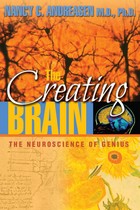 The Creating Brain: The Neuroscience of Genius
Nancy C. Andreasen
Dana Press, 2005 Michelangelo was raised in a rustic village by a family of modest means. Shakespeare's father was a middle-class businessman. Abraham Lincoln came from a family of itinerant farmers. Yet all these men broke free from their limited circumstances and achieved brilliant careers as creative artists and leaders. How such extraordinary creativity develops in the human brain is the subject of renowned psychiatrist Nancy Andreasen's The Creating Brain.
Andreasen explains here how the brain produces creative breakthroughs in art, literature, and science, revealing that creativity is not the same thing as intelligence. She scrutinizes the complex factors involved in the development of creativity, including the role of patrons and mentors, "non-standard" educations, and the possession of an "omnivorous" vision. A fascinating interview with acclaimed playwright Neil Simon sheds further light on the creative process.The relationship between genius and insanity also plays an important role in Andreasen's examination. Drawing on her studies of writers in the Iowa Writers' Workshop and other scientific evidence, Andreasen asserts that while creativity may sometimes be linked to mental disorders and may be partially due to familial/genetic factors, neither is inevitable nor needed for creativity to flourish.
Scientist's increasing understanding of the brain's plasticity suggests even more possibilities for nurturing the creative drive, and Andreasen looks ahead to exciting implications for child-rearing and education. The Creating Brain presents an inspiring vision for a future where everyone—not just artists or writers—can fulfill their creative capacity.
 Creating Capabilities: The Human Development Approach
Martha C. Nussbaum
Harvard University Press, 2011 If a country’s Gross Domestic Product increases each year, but so does the percentage of its people deprived of basic education, health care, and other opportunities, is that country really making progress? If we rely on conventional economic indicators, can we ever grasp how the world’s billions of individuals are really managing?
In this powerful critique, Martha Nussbaum argues that our dominant theories of development have given us policies that ignore our most basic human needs for dignity and self-respect. For the past twenty-five years, Nussbaum has been working on an alternate model to assess human development: the Capabilities Approach. She and her colleagues begin with the simplest of questions: What is each person actually able to do and to be? What real opportunities are available to them?
The Capabilities Approach to human progress has until now been expounded only in specialized works. Creating Capabilities, however, affords anyone interested in issues of human development a wonderfully lucid account of the structure and practical implications of an alternate model. It demonstrates a path to justice for both humans and nonhumans, weighs its relevance against other philosophical stances, and reveals the value of its universal guidelines even as it acknowledges cultural difference. In our era of unjustifiable inequity, Nussbaum shows how—by attending to the narratives of individuals and grasping the daily impact of policy—we can enable people everywhere to live full and creative lives.
Creating Capitals: The Rationale, Construction, and Function of the Imperial Capitals of Assyria
Aris Politopoulos
Leiden University Press, 2020 An archaeological history of the Assyrian Empire’s four capitals.
The Assyrian Empire moved and rebuilt its capital city three times—at Kar-Tukulti-Ninurta, Kalhu, Dur-Šarruken, and Nineveh. Creating Capitals explores why and how Assyria constructed these capitals as well as how they functioned within the empire. Drawing on extensive research, Aris Politopoulos offers a sweeping comparative analysis of these four ancient cities and proposes a new framework for understanding the construction of capitals in human history.
 Creating Carmen Miranda: Race, Camp, and Transnational Stardom
Kathryn Bishop-Sanchez
Vanderbilt University Press, 2016 Carmen Miranda got knocked down and kept going. Filming an appearance on The Jimmy Durante Show on August 4, 1955, the "ambassadress of samba" suddenly took a knee during a dance number, clearly in distress. Durante covered without missing a beat, and Miranda was back on her feet in a matter of moments to continue with what she did best: performing. By the next morning, she was dead from heart failure at age 46.
This final performance in many ways exemplified the power of Carmen Miranda. The actress, singer, and dancer pursued a relentless mission to demonstrate the provocative theatrical force of her cultural roots in Brazil. Armed with bare-midriff dresses, platform shoes, and her iconic fruit-basket headdresses, Miranda stole the show in films like That Night in Rio and The Gang's All Here. For American film audiences, her life was an example of the exoticism of a mysterious, sensual South America. For Brazilian and Latin American audiences, she was an icon. For the gay community, she became a work of art personified and a symbol of courage and charisma.
In Creating Carmen Miranda, Kathryn Bishop-Sanchez takes the reader through the myriad methods Miranda consciously used to shape her performance of race, gender, and camp culture, all to further her journey down the road to becoming a legend.
 Creating Catholics: Catechism and Primary Education in Early Modern France
Karen E. Carter
University of Notre Dame Press, 2011
The religious education of children represents a critical component of the Catholic Reformation that has often been overlooked by historians of early modern Europe. In Creating Catholics: Catechism and Primary Education in Early Modern France, Karen E. Carter examines rural schooling in France in the seventeenth and eighteenth centuries--the period when community-supported primary education began--and brings to light a significant element of the early modern period.
Carter scrutinizes Catholic religious education in rural parishes in France through its two leading forms: the explosion of Catholic catechisms for children and their use in village schools. She concentrates on educational opportunities for rural peasants in three French dioceses: Auxerre (in Burgundy) and Chalons-sur-Marne and Reims (in Champagne). Carter argues that the study of catechism in village schools was an integral part of a comprehensive program, implemented by both clerical and lay leaders, for the religious, ethical, and moral education of children. Her research demonstrates that the clergy and a majority of the lay population believed in the efficacy of this program; for this reason, parish priests taught catechism in their parishes on a weekly basis, and small village communities established and paid for a surprisingly large number of local schools so that their sons and daughters could receive an education both in basic literacy skills and, through memorization of catechism, in Catholic faith and practice.
"Karen E. Carter's Creating Catholics: Catechism and Primary Education in Early Modern France is a well-written, informative, and original piece of scholarship that helps to fill a large gap in our understanding of French religious life in the latter part of the early modern period. Carter shows how church and Bourbon state interests in promoting a devoutly Catholic and obedient populace intersected in the religious education of its children. Using a rich body of sources, she provides a much more textured understanding of the everyday functioning of primary school education than has so far been undertaken." --Megan Armstrong, McMaster University
"Karen Carter's book delivers a great deal more than its title promises. It rescues the history of French catechetical ambitions during the Catholic Reformation from serious neglect, and firmly anchors it in the practice of primary education within a regional context. Above all, she restores the agency of lay Catholics in an age of increased clericalisation by showing why they wanted schooling for their children and paid for it from their own pockets. This astute and economical combination of hitherto discrete subjects fills an important gap and offers historians new ways of approaching familiar questions." --Joseph Bergin, University of Manchester
"This book makes an excellent contribution to early modern history in general, and particularly to the fields of religious history and French history. The central argument that the teaching of catechism by parish priests and the broad instruction available at the petites ecoles found in most villages had a broad impact on the lives, particularly the religious lives, of townspeople and villagers, should interest historians, people in religious studies, and students of education." --Marc R. Forster, Connecticut College
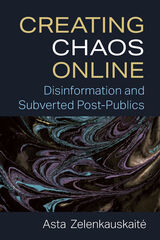 Creating Chaos Online: Disinformation and Subverted Post-Publics
Asta Zelenkauskaite
University of Michigan Press, 2022 With the prevalence of disinformation geared to instill doubt rather than clarity, Creating Chaos Online unmasks disinformation when it attempts to pass as deliberation in the public sphere and distorts the democratic processes. Asta Zelenkauskaitė finds that repeated tropes justifying Russian trolling were found to circulate across not only all analyzed media platforms’ comments but also across two analyzed sociopolitical contexts suggesting the orchestrated efforts behind messaging. Through a dystopian vision of publics that are expected to navigate in the sea of uncertain both authentic and orchestrated content, pushed by human and nonhuman actors, Creating Chaos Online offers a concept of post-publics. The idea of post-publics is reflected within the continuum of treatment of public, counter public, and anti-public. This book argues that affect-instilled arguments used in public deliberation in times of uncertainty, along with whataboutism constitute a playbook for chaos online.
Creating Chicago's North Shore: A Suburban History
Michael H. Ebner
University of Chicago Press, 1988 They are the suburban jewels that crown one of the world's premier cities. Evanston, Wilmette, Kenilworth, Winnetka, Glencoe, Highland Park, Lake Forest, Lake Bluff: together, they comprise the North Shore of Chicago, a social registry of eight communities that serve as a genteel enclave of affluence, culture, and high society. Historian Michael H. Ebner explains the origins and evolution of the North Shore as a distinctive region. At the same time, he tells the paradoxical story of how these suburbs, with their common heritage, mutual values, and shared aspirations, still preserve their distinctly separate identities. Embedded in this history are important lessons about the uneasy development of the American metropolis.
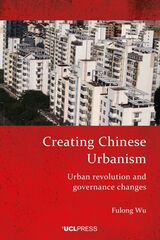 Creating Chinese Urbanism: Urban Revolution and Governance Changes
Fulong Wu
University College London, 2022 A detailed account of the Chinese urbanization boom and its implications.
While the imperial and socialist periods of Chinese history were marked by a union of society and state, the rapid urbanization of China has dismantled the territorial foundation of an “earth-bound” or rural society. Through this urban revolution, the Chinese state has become a visible factor in the construction of urban life, with State-led rebuilding of residential communities hastening the demise of traditionalism and giving birth to a new China with greater urbanism and state-centered governance. In Creating Chinese Urbanism, Fulong Wu describes the landscape of urbanization in China, revealing the profound impacts of marketization on Chinese society and the consequential governance changes at the grassroots level. Taking the vantage point of concrete residential neighborhoods, this book offers a cutting-edge analysis of how China is becoming urban and conceptualizes the changes in state governance through the process of urbanization.
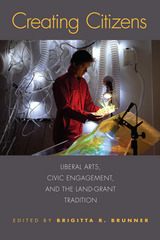 Creating Citizens: Liberal Arts, Civic Engagement, and the Land-Grant Tradition
Edited by Brigitta R. Brunner
University of Alabama Press, 2016 Creating Citizens is a collection of essays about Community and Civic Engagement (CCE) learning at land-grant universities. In Creating Citizens, professors and administrators at Auburn University’s College of Liberal Arts recount valuable, first-hand experiences teaching Community and Civic Engagement (CCE). They demonstrate that, contrary to many expectations, CCE instruction both complements the mission of liberal arts curricula and powerfully advances the fundamental mission of American land-grand institutions. The nine essays in Creating Citizens offer structures for incorporating CCE initiatives into university programs, instructional methods and techniques, and numerous case studies and examples undertaken at Auburn University but applicable at any university. Many contributors describe their own rewarding experiences with CCE and emphasize the ways outreach efforts reinvigorate their teaching or research. Creating Citizens recounts the foundation of land-grant institutions by the Morrill Act of 1862. Their mission is to instruct in agriculture, military science, and mechanics, but these goals augmented rather than replaced an education in the classics, or liberal arts. Land-grant institutions, therefore, have a special calling to provide a broad spectrum of society with an education that not only enriched the personal lives of their students, but the communities they are a part of. Creating Citizens demonstrates the important opportunities CCE instruction represents to any university but are especially close to the heart of the mission of land-grant colleges. In open societies, the role and mission of public institutions of higher learning that are supported by public subsidies are perennial subjects of interest and debate. Creating Citizens provides valuable insights of interest to educators, education administrators, students, and policy makers involved in the field of higher education.
Creating Community: Life and Learning at Alabama State University
Edited by Karl E. Westhauser, Elaine M. Smith, and Jennifer A. Fremlin
University of Alabama Press, 2008 Creating Community explores how faculty members at Alabama State University, a historically black university in Montgomery, have been inspired by the legacy of African American culture and the civil rights movement and how they seek to interpret and extend that legacy through teaching, scholarship, and service. Authors describe a wide range of experiences from the era of segregation to the present day. These include accounts of growing up and going to college in Alabama, arriving in the South for the first time to teach at ASU, and the development of programs such as the National Center for the Study of Civil Rights and African American Culture. Together, the essays present viewpoints that reflect the diverse ethnic, cultural, and academic backgrounds of the contributors and of the university.
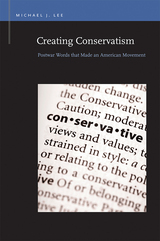 Creating Conservatism: Postwar Words that Made an American Movement
Michael J. Lee
Michigan State University Press, 2014 Creating Conservatism charts the vital role of canonical post–World War II (1945–1964) books in generating, guiding, and sustaining conservatism as a political force in the United States. Dedicated conservatives have argued for decades that the conservative movement was a product of print, rather than a march, a protest, or a pivotal moment of persecution. The Road to Serfdom, Ideas Have Consequences, Witness, The Conservative Mind, God and Man at Yale, The Conscience of a Conservative, and other mid-century texts became influential not only among conservative office-holders, office-seekers, and well-heeled donors but also at dinner tables, school board meetings, and neighborhood reading groups. These books are remarkable both because they enumerated conservative political positions and because their memorable language demonstrated how to take those positions—functioning, in essence, as debate handbooks. Taking an expansive approach, the author documents the wide influence of the conservative canon on traditionalist and libertarian conservatives. By exploring the varied uses to which each founding text has been put from the Cold War to the culture wars, Creating Conservatism generates original insights about the struggle over what it means to think and speak conservatively in America.
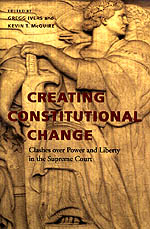 Creating Constitutional Change: Clashes over Power and Liberty in the Supreme Court
Gregg Ivers
University of Virginia Press, 2004 Because the justices of the U.S. Supreme Court tell us what the Constitution means, they can create constitutional change. For quite some time, general readers who have been interested in understanding those changes have not had a concise volume that explores major decisions in which those changes occur. Traditional casebooks used in law schools typically pay scant attention to the historical and political context in which cases are decided, as well as the motives of litigants, the involvement of interest groups, and the justices' concerns with policy outcomes, even though all these factors are critical to understanding the Court's decisions. Other books do address these concerns, but they almost always focus on a single policy issue rather than on a broader range of constitutional conflicts that populate the Court's docket.
In order to make a wide range of decisions more accessible, Gregg Ivers and Kevin T. McGuire commissioned twenty-two outstanding scholars to write essays on a selected series of Supreme Court cases. Chosen for their contemporary relevance, most of the cases addressed in this informative reader are from the last half-century, extending right up through Bush v. Gore and the 2003 Michigan affirmative action cases.
In each of these roughly two dozen cases, the authors address a number of questions that provide readers with a deeper understanding of the Court and its policies: How did the conflict originate? What role did organized interests have in the case? What did the litigants, personally and professionally, have at stake? What was the practical result of the Court's decision? Did the Court respond to lobbying or public opinion? These detailed historical and personal accounts in this all-new collection of essays offer engaging and illuminating perspectives on law and politics.
--------------------------------------------------------------------------------
Gregg Ivers, Professor of Government at American University, is the author of American Constitutional Law: Power and Politics and To Build a Wall: American Jews and the Separation of Church and State (Virginia). Kevin T. McGuire, Associate Professor of Political Science at the University of North Carolina, Chapel Hill, is the author of Understanding the U.S. Supreme Court and The Supreme Court Bar: Legal Elites in the Washington Community (Virginia).
 Creating Contexts for Learning and Self-Authorship: Constructive-Developmental Pedagogy
Marcia B. Baxter Magolda
Vanderbilt University Press, 2000 In her thoughtful and innovative new book, Marcia B. Baxter Magolda writes of "bridging the worlds between educator and students." There is perhaps no task more fundamental to effective teaching and learning. All too often a distinct gap develops or cannot be overcome between instructor and student, one that leaves each struggling to understand the other's position. The professional quest for principles of structure and process that can help close this divide is both evolving and unending. This book is intended to help college faculty create conditions in which students learn to construct knowledge in their disciplines and achieve self-authorship. A significant, and often overlooked, dimension mediating learning and self-authorship centers on learners' ways of knowing, or their assumptions about the nature, limits, and certainty of knowledge. A learner who assumes that all knowledge is certain expects to hear answers from an authority figure; in contrast, a learner who views knowledge as relative expects to explore multiple viewpoints. By taking a constructive-developmental approach, Baxter Magolda demonstrates how students' ability to construct knowledge is intertwined with the development of their assumptions about knowledge itself and their role in creating it. She shows how the structure of constructive-developmental teaching hinges on three principles: validating students' ability to know, situating learning in students' experience, and defining learning as teachers and students mutually constructing meaning. Unlike most of the literature on the subject, this book takes abstract pedagogical principles and translates them into practical methods. By observing four semester-length college courses in mathematics, zoology, human development, and education and intensively interviewing students and their instructors, Baxter Magolda provides much-needed, concrete principles that will lead to valuable improvements in the classroom environment. With an enhanced level of understanding of the teaching-learning relationship, professors will be able to teach better, and students will be able to learn better, thus preparing them to meet the demands inherent in adulthood and preparing them to take an active role in creating a better society. Those actively involved in higher education, whether college faculty or students in graduate programs, as well as anyone focused on education in general will find much of interest in this book.
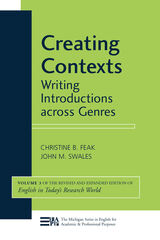 Creating Contexts: Writing Introductions across Genres
Christine B. Feak & John M. Swales
University of Michigan Press, 2011 Research article introductions are central to Creating Contexts: Writing across Genres with the CaRS (creating a research space) model used as a starting point. This volume focuses on introductions for other kinds of texts that are also part of the graduate student writing experience such as course papers and critiques, proposals, and dissertations. This volume represents a revision and expansion of the material on introductions that appeared in English in Today's Research World. The material presented in this volume is appropriate for graduate students and others already working in their chosen academic fields. The material has, in fact, been used with each of these groups in both writing courses and writing workshops. We believe that the material would also be suitable for those wishing to pursue a course of self-study. To target these different possible uses, we have included a variety of topics and tasks that we hope will deepen users’ understanding of how to create a writing context for their work. Tasks range from evaluating text commentaries to open-ended questions and have been designed to generate lively classroom or workshop discussion as well as thoughtful consideration by an individual user.
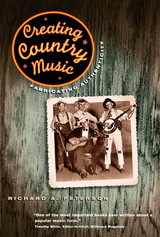 Creating Country Music: Fabricating Authenticity
Richard A. Peterson
University of Chicago Press, 1997 In Creating Country Music, Richard Peterson traces the development of country music and its institutionalization from Fiddlin' John Carson's pioneering recordings in Atlanta in 1923 to the posthumous success of Hank Williams. Peterson captures the free-wheeling entrepreneurial spirit of the era, detailing the activities of the key promoters who sculpted the emerging country music scene. More than just a history of the music and its performers, this book is the first to explore what it means to be authentic within popular culture.
"[Peterson] restores to the music a sense of fun and diversity and possibility that more naive fans (and performers) miss. Like Buck Owens, Peterson knows there is no greater adventure or challenge than to 'act naturally.'"—Ken Emerson, Los Angeles Times Book Review
"A triumphal history and theory of the country music industry between 1920 and 1953."—Robert Crowley, International Journal of Comparative Sociology
"One of the most important books ever written about a popular music form."—Timothy White, Billboard Magazine
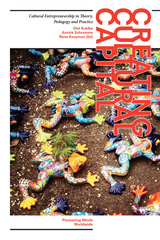 Creating Cultural Capital: Cultural Entrepreneurship in Theory, Pedagogy and Practice
Edited by Olaf Kuhlke, Annick Schramme, and René Kooyman
Eburon Academic Publishers, 2015 In recent years, the global creative economy has experienced unprecedented growth. In tandem with that, considerable research has been conducted to determine what exactly the creative economy is, what occupations are grouped under that name, and how it is to be measured. Organizations on various scales, from the United Nations to local governments, have released “creative” or “cultural” economy reports, developed policies for creative urban renewal, and directed attention to creative place making—the purposeful infusion of creative activity into specific urban environments.
Parallel to these research and policy interests, academic institutions and professional organizations have begun to develop training programs for future professionals in the creative and cultural industries. In this book, more than fifty scholars from across the globe shed light on this phenomenon of cultural entrepreneurship. Readers will find conceptual frameworks for building new programs for the creative industries, examples of pedagogical approaches and skills-based training, and concrete examples of program and course implementation.
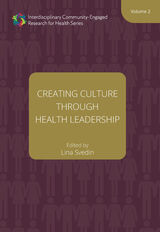 Creating Culture through Health Leadership
Edited by Lina Svedin
University of Minnesota Press, 2020 The challenges to health, wellness, and health equity in the United States are massive. No matter what side of the discussion health care leaders are on, insufficient mental health care, adverse childhood experiences, substance use disorders, high infant mortality rate, and declining life expectancy for women are issues that leadership can rally around. The second volume in the Interdisciplinary Community-Engaged Research for Health series explores hands-on approaches that leaders can take in their community. Creating Culture through Health Leadership focuses on the practitioner’s view of community engagement and how health care leaders can build a culture of health through community-grown solutions. Volume editor Lina Svedin invites contributors from the Robert Wood Johnson Foundation’s Culture of Health Leaders program to share transformative leadership skills that advance health and equity for all. Svedin’s contributors span the fields of business, technology, architecture, education, urban farming, and the arts, and represent subject matter experts, mentors, and coaches in the private, public, nonprofit, and social sectors. The volume is a collection of innovative, engaging case studies that illuminate how health care administrators and managers can collaborate to lead change within their organization, in their regional system, and throughout the nation.
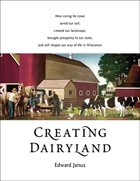 Creating Dairyland: How caring for cows saved our soil, created our landscape, brought prosperity to our state, and still shapes our way of life in Wisconsin
Edward Janus
Wisconsin Historical Society Press, 2011 The story of dairying in Wisconsin is the story of how our very landscape and way of life were created. By making cows the center of our farm life and learning how to care for them, our ancestors launched a revolution that changed much more than the way farmers earned their living — it changed us. In Creating Dairyland, journalist, oral historian, and former dairyman Ed Janus opens the pages of the fascinating story of Wisconsin dairy farming. He explores the profound idea that led to the remarkable "big bang" of dairying here a century and a half ago. He helps us understand why there are cows in Wisconsin, how farmers became responsible stewards of our resources, and how cows have paid them back for their efforts. And he introduces us to dairy farmers and cheesemakers of today: men and women who want to tell us why they love what they do. Ed Janus offers a sort of field guide to Dairyland, showing us how to "read" our landscape with fresh eyes, explaining what we see today by describing how and why it came to be. Creating Dairyland pays tribute to the many thousands of Wisconsin farmers who have found a way to stay on their land with their cows. Their remarkable effort of labor, intelligence, and faith is one of the great stories of Wisconsin.
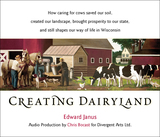 Creating Dairyland: How caring for cows saved our soil, created our landscape, brought prosperity to our state, and still shapes our way of life in Wisconsin
Edward Janus
Wisconsin Historical Society Press, 2011 The story of dairying in Wisconsin is the story of how our very landscape and way of life were created. By making cows the center of our farm life and learning how to care for them, our ancestors launched a revolution that changed much more than the way farmers earned their living — it changed us. In Creating Dairyland, journalist, oral historian, and former dairyman Ed Janus opens the pages of the fascinating story of Wisconsin dairy farming. He explores the profound idea that led to the remarkable "big bang" of dairying here a century and a half ago. He helps us understand why there are cows in Wisconsin, how farmers became responsible stewards of our resources, and how cows have paid them back for their efforts. And he introduces us to dairy farmers and cheesemakers of today: men and women who want to tell us why they love what they do. Ed Janus offers a sort of field guide to Dairyland, showing us how to "read" our landscape with fresh eyes, explaining what we see today by describing how and why it came to be. Creating Dairyland pays tribute to the many thousands of Wisconsin farmers who have found a way to stay on their land with their cows. Their remarkable effort of labor, intelligence, and faith is one of the great stories of Wisconsin.
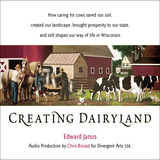 Creating Dairyland: How caring for cows saved our soil, created our landscape, brought prosperity to our state, and still shapes our way of life in Wisconsin
Edward Janus
Wisconsin Historical Society Press, 2012 The story of dairying in Wisconsin is the story of how our very landscape and way of life were created. By making cows the center of our farm life and learning how to care for them, our ancestors launched a revolution that changed much more than the way farmers earned their living — it changed us. In Creating Dairyland, journalist, oral historian, and former dairyman Ed Janus opens the pages of the fascinating story of Wisconsin dairy farming. He explores the profound idea that led to the remarkable "big bang" of dairying here a century and a half ago. He helps us understand why there are cows in Wisconsin, how farmers became responsible stewards of our resources, and how cows have paid them back for their efforts. And he introduces us to dairy farmers and cheesemakers of today: men and women who want to tell us why they love what they do. Ed Janus offers a sort of field guide to Dairyland, showing us how to "read" our landscape with fresh eyes, explaining what we see today by describing how and why it came to be. Creating Dairyland pays tribute to the many thousands of Wisconsin farmers who have found a way to stay on their land with their cows. Their remarkable effort of labor, intelligence, and faith is one of the great stories of Wisconsin.
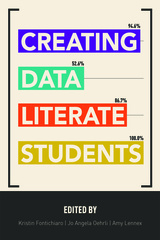 Creating Data Literate Students
Kristin Fontichiaro, Jo Angela Oehrli, Amy Lennex, editors
Michigan Publishing, 2017 Creating Data Literate Students provides high school librarians and educators
with foundational domain knowledge to teach a new subset of information
literacy skills — data and statistical literacy, including: statistics and data comprehension; data as argument; and data visualization.
Data — both raw and displayed in visualizations — can clarify or confuse,
confirm or deny, persuade or deter. Students often learn that numbers are
objective, though data in the real world is rarely so. In fact, visualized data —
even from authoritative sources — can sometimes be anything but objective.
Librarians and classroom educators need to be as fluent with quantitative
data as they are with text in order to support high schoolers as they engage
with data in formal and informal settings. We asked contributors to this
volume — experts in high school curriculum, information literacy and/or
data literacy — to explore the intersections between data and curriculum
and identify high-impact strategies for demystifying data for educators and
students alike.
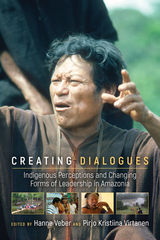 Creating Dialogues: Indigenous Perceptions and Changing Forms of Leadership in Amazonia
Hanne Veber
University Press of Colorado, 2017 Creating Dialogues discusses contemporary forms of leadership in a variety of Amazonian indigenous groups. Examining the creation of indigenous leaders as political subjects in the context of contemporary state policies of democratization and exploitation of natural resources, the book addresses issues of resilience and adaptation at the level of local community politics in lowland South America. Contributors investigate how indigenous peoples perceive themselves as incorporated into the structures of states and how they tend to see the states as accomplices of the private companies and non-indigenous settlers who colonize or devastate indigenous lands. Adapting to the impacts of changing political and economic environments, leaders adopt new organizational forms, participate in electoral processes, become adept in the use of social media, experiment with cultural revitalization and new forms of performance designed to reach non-indigenous publics, and find allies in support of indigenous and human rights claims to secure indigenous territories and conditions for survival. Through these multiple transformations, the new styles and manners of leadership are embedded in indigenous notions of power and authority whose shifting trajectories predate contemporary political conjunctures. Despite the democratization of many Latin American countries and international attention to human rights efforts, indigenous participation in political arenas is still peripheral. Creating Dialogues sheds light on dramatic, ongoing social and political changes within Amazonian indigenous groups. The volume will be of interest to students and scholars of anthropology, ethnology, Latin American studies, and indigenous studies, as well as governmental and nongovernmental organizations working with Amazonian groups. Contributors: Jean-Pierre Chaumeil, Gérard Collomb, Luiz Costa, Oscar Espinosa, Esther López, Valéria Macedo, José Pimenta, Juan Pablo Sarmiento Barletti, Terence Turner, Hanne Veber, Pirjo Kristiina Virtanen
Creating Distinctions in Dutch Genre Painting: Repetition and Invention
Angela K. Ho
Amsterdam University Press, 2017 In the mid- to late seventeenth century, a number of Dutch painters created a new type of refined genre painting that was much admired by elite collectors. In this book, Angela Ho uses the examples of Gerrit Dou, Gerard ter Borch, and Frans van Mieris to show how this group of artists made creative use of repetition-such as crafting virtuosic, self-referential compositions around signature motifs, or engaging esteemed predecessors in a competitive dialogue through emulation-to project a distinctive artistic personality. The resulting paintings enabled purchasers and viewers to exercise their connoisseurial eye and claim membership in an exclusive circle of sophisticated enthusiasts-making creative repetition a successful strategy for both artists and viewers.
 Creating Effective Rules in Public Sector Organizations
Leisha DeHart-Davis
Georgetown University Press, 2017 The creation of rules that govern processes or behavior is essential to any organization, but these rules are often maligned for creating inefficiencies. This book provides the first comprehensive portrait of rules in public organizations and seeks to find the balance between rules that create red tape and rules that help public organizations function effectively, what the author calls “green tape.” Drawing on a decade of original research and interdisciplinary scholarship, Leisha DeHart-Davis builds a framework of three perspectives on rules: the organizational perspective, which sees rules as a tool for achieving managerial goals and organizational functions; the individual perspective, which examines how rule design and implementation affect employees; and the behavioral perspective, which explores human responses to the intersection of the first two perspectives. The book then considers the effectiveness of rules, applying these perspectives to a case study of employee grievance policies in North Carolina local government. Finally, the book concludes by outlining five attributes of effective rules—green tape—to guide future rule creation in public organizations. It applies green tape principles to the Five-Second Rule, a crowd control policy Missouri police implemented in the wake of protests following the Michael Brown shooting. Government managers and scholars of public administration will benefit from DeHart-Davis’s investigation and guidance.
Creating Family Archives: A Step-by-Step Guide to Saving Your Memories for Future Generations
Margot Note
Society of American Archivists, 2019 Not just a gift. It's history in the making. Family history is important. Photos, videos, aged documents, and cherished papers--these are the memories that you want to save. And they need a better home than a cardboard box. Creating Family Archives is a book written by an archivist for you, your family, and friends, taking you step-by-step through the process of arranging and preserving your own family archives. It’s the first book of its kind offered to the public by the Society of American Archivists. Gathering up the boxes of photos and years of video is a big job. But this fascinating and instructional book will make it easier and, in the end, much better.
Creating Faulkner's Reputation: The Politics of Modern Literary Criticism
Lawrence H. Schwartz
University of Tennessee Press, 1990 In the 1920s, William Faulkner was an unread and unappreciated author. All his books were out of print. Yet by 1950, he was revered by critics and winner of the Nobel Prize. Author Lawrence H. Schwartz traces how the development of New Criticism, a re-evaluation of his work (the difficulty of his style and depraved subject matter, once considered a negative, were now praised), and the publication of The Portable Faulkner combined to make him the most respected writer of the twentieth century. In the first half of the book, Schwartz explores Faulkner, his writing, and his reputation, while the second half discusses the politics of the new criticism and the intellectual stand of the critics in the 1940s. Readers interested in Faulkner's literary career will find this book invaluable.
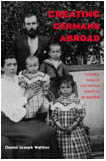 Creating Germans Abroad: Cultural Policies and National Identity in Namibia
Daniel Joseph Walther
Ohio University Press, 2002 When World War I brought an end to German colonial rule in Namibia, much of the German population stayed on. The German community, which had managed to deal with colonial administration, faced new challenges when the region became a South African mandate under the League of Nations in 1919. One of these was the issue of Germanness, which ultimately resulted in public conversations and expressions of identity. In Creating Germans Abroad, Daniel Walther examines this discourse and provides striking new insights into the character of the German populace in both Germany and its former colony, Southwest Africa, known today as Namibia. In addition to German colonialism, Walther considers issues of race, class, and gender and the activities of minority groups. He offers new perspectives on German cultural and national identity during the Empire, the Weimar Republic, and the Third Reich. In a larger context, Creating Germans Abroad acts as a model for investigating the strategies and motivations of groups and individuals engaged in national or ethnic engineering and demonstrates how unforeseen circumstances can affect the nature and outcome of these endeavors.
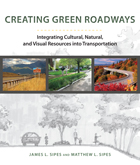 Creating Green Roadways: Integrating Cultural, Natural, and Visual Resources into Transportation
James L. Sipes and Matthew L. Sipes
Island Press, 2012 Roads and parking lots in the United States cover more ground than the entire state of Georgia. And while proponents of sustainable transit often focus on getting people off the roads, they will remain at the heart of our transportation systems for the foreseeable future. In Creating Green Roadways, James and Matthew Sipes demonstrate that roads don’t have to be the enemy of sustainability: they can be designed to minimally impact the environment while improving quality of life.
The authors examine traditional, utilitarian methods of transportation planning that have resulted in a host of negative impacts: from urban sprawl and congestion to loss of community identity and excess air and water pollution. They offer a better approach—one that blends form and function. Creating Green Roadways covers topics including transportation policy, the basics of green road design, including an examination of complete streets, public involvement, road ecology, and the economics of sustainable roads. Case studies from metropolitan, suburban, and rural transportation projects around the country, along with numerous photographs, illustrate what makes a project successful.
The need for this information has never been greater, as more than thirty percent of America’s major roads are in poor or mediocre condition, more than a quarter of the nation’s bridges are structurally deficient or functionally obsolete, and congestion in communities of all sizes has never been worse. Creating Green Roadways offers a practical strategy for rethinking how we design, plan, and maintain our transportation infrastructure.
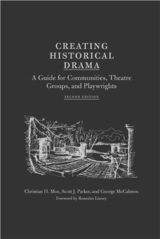 Creating Historical Drama: A Guide for Communities, Theatre Groups, and Playwrights
Christian H. Moe, Scott J. Parker, and George McCalmon. Foreword by Romulus Linney
Southern Illinois University Press, 2005 This guidebook for transforming actual American figures and events into dramatic form has aided many communities and groups in writing, planning, and producing first-rate historical dramas. The new edition of Creating Historical Drama: A Guide for Communities, Theatre Groups, and Playwrights features updated examples of drama and dramatic activities from short indoor productions to large-scale, outdoor historical dramas; new material about funding, economic impact on communities, budgeting, and marketing; and current information on physical theatre development.
Responding to a national interest in dramatizing historical material in a variety of community settings, the volume begins with a discussion on the scope and sources of historical drama, as well as the reasons for historicizing drama. From there, it details the features of biography, pageant, and epic dramas, and takes on important issues such as historical accuracy and dealing with expository material. The handbook then provides assistance in composing drama, leading and organizing the theatre group, organizing the community’s resources, and evaluating the audience and the production site. Twenty-nine illustrations, with sketches by Darwin Payne and Ronald Naverson, augment the discussion.
Written for the nonspecialist and particularly useful to novice playwrights and directors, the volume is equally important for professional historians, educators, and theatre artists. More than a guidebook, Creating Historical Drama convincingly demonstrates that the genre is a beneficial and significant cultural phenomenon that not only educates and entertains, but also has the power to revitalize civic economy and morale.
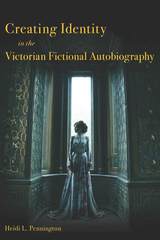 Creating Identity in the Victorian Fictional Autobiography
Heidi L. Pennington
University of Missouri Press, 2018 This is the first book-length study of the fictional autobiography, a subgenre that is at once widely recognizable and rarely examined as a literary form with its own history and dynamics of interpretation. Heidi L. Pennington shows that the narrative form and genre expectations associated with the fictional autobiography in the Victorian period engages readers in a sustained meditation on the fictional processes that construct selfhood both in and beyond the text. Through close readings of Jane Eyre, David Copperfield, and other well-known examples of the subgenre, Pennington shows how the Victorian fictional autobiography subtly but persistently illustrates that all identities are fictions.
Despite the subgenre’s radical implications regarding the nature of personal identity, fictional autobiographies were popular in their own time and continue to inspire devotion in readers. This study sheds new light on what makes this subgenre so compelling, up to and including in the present historical moment of precipitous social and technological change. As we continue to grapple with the existential question of what determines “who we really are,” this book explores the risks and rewards of embracing conscious acts of fictional self-production in an unstable world.
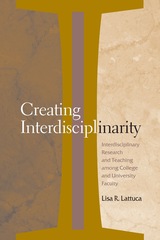 Creating Interdisciplinarity: Interdisciplinary Research and Teaching among College and University Faculty
Lisa R. Lattuca
Vanderbilt University Press, 2001 Interdisciplinarity, a favorite buzzword of faculty and administrators, has been appropriated to describe so many academic pursuits that it is virtually meaningless. With a writing style that is accessible, fluid, and engaging, Lisa Lattuca remedies this confusion with an original conceptualization of interdisciplinarity based on interviews with faculty who are engaged in its practice. Whether exploring the connections between apparently related disciplines, such as English and women's studies, or such seemingly disparate fields as economics and theology, Lattuca moves away from previous definitions based on the degrees of integration across disciplines and instead focuses on the nature of the inquiry behind the work. She organizes her findings around the processes through which faculty pursue interdisciplinarity, the contexts (institutional, departmental, and disciplinary) in which faculty are working, and the ways in which those contexts relate to and affect the interdisciplinary work. Her findings result in useful suggestions for individuals concerned with the meaning of faculty work, the role and impact of disciplines in academe today, and the kinds of issues that should guide the evaluation of faculty scholarship.
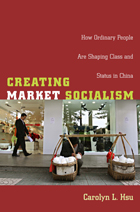 Creating Market Socialism: How Ordinary People Are Shaping Class and Status in China
Carolyn L. Hsu
Duke University Press, 2007 In the midst of China’s post-Mao market reforms, the old status hierarchy is collapsing. Who will determine what will take its place? In Creating Market Socialism, the sociologist Carolyn L. Hsu demonstrates the central role of ordinary people—rather than state or market elites—in creating new institutions for determining status in China. Hsu explores the emerging hierarchy, which is based on the concept of suzhi, or quality. In suzhi ideology, human capital and educational credentials are the most important measures of status and class position. Hsu reveals how, through their words and actions, ordinary citizens decide what jobs or roles within society mark individuals with suzhi, designating them “quality people.” Hsu’s ethnographic research, conducted in the city of Harbin in northwestern China, included participant observation at twenty workplaces and interviews with working adults from a range of professions. By analyzing the shared stories about status and class, jobs and careers, and aspirations and hopes that circulate among Harbiners from all walks of life, Hsu reveals the logic underlying the emerging stratification system. In the post-socialist era, Harbiners must confront a fast-changing and bewildering institutional landscape. Their collective narratives serve to create meaning and order in the midst of this confusion. Harbiners collectively agree that “intellectuals” (scientists, educators, and professionals) are the most respected within the new social order, because they contribute the most to Chinese society, whether that contribution is understood in terms of traditional morality, socialist service, or technological and economic progress. Harbiners understand human capital as an accurate measure of a person’s status. Their collective narratives about suzhi shape their career choices, judgments, and child-rearing practices, and therefore the new practices and institutions developing in post-socialist China.
Creating Memories in Late 8th-century Byzantium: The Short History of Nikephoros of Constantinople
Dragoljub Marjanovic
Amsterdam University Press, 2018 The Short History of Nikephoros of Constantinople is one of the key sources for our understanding of Byzantine history in the eighth century. This book offers a close look at that volume and its manner of representing the historical role of Byzantine emperors and ecclesiology, with particular attention to the use of images, an issue of central importance amid the period's first outburst of iconoclasm. When seen through this lens, the Short History is revealed to be more engaged with and burdened by contemporary political and ecclesiastical strife than has previously been thought.
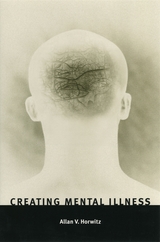 Creating Mental Illness
Allan V. Horwitz
University of Chicago Press, 2001 In this surprising book, Allan V. Horwitz argues that our current conceptions of mental illness as a disease fit only a small number of serious psychological conditions and that most conditions currently regarded as mental illness are cultural constructions, normal reactions to stressful social circumstances, or simply forms of deviant behavior.
"Thought-provoking and important. . .Drawing on and consolidating the ideas of a range of authors, Horwitz challenges the existing use of the term mental illness and the psychiatric ideas and practices on which this usage is based. . . . Horwitz enters this controversial territory with confidence, conviction, and clarity."—Joan Busfield, American Journal of Sociology
"Horwitz properly identifies the financial incentives that urge therapists and drug companies to proliferate psychiatric diagnostic categories. He correctly identifies the stranglehold that psychiatric diagnosis has on research funding in mental health. Above all, he provides a sorely needed counterpoint to the most strident advocates of disease-model psychiatry."—Mark Sullivan, Journal of the American Medical Association
"Horwitz makes at least two major contributions to our understanding of mental disorders. First, he eloquently draws on evidence from the biological and social sciences to create a balanced, integrative approach to the study of mental disorders. Second, in accomplishing the first contribution, he provides a fascinating history of the study and treatment of mental disorders. . . from early asylum work to the rise of modern biological psychiatry."—Debra Umberson, Quarterly Review of Biology
 Creating Modern Capitalism: How Entrepreneurs, Companies, and Countries Triumphed in Three Industrial Revolutions
Thomas K. McCraw
Harvard University Press, 1997 What explains the national economic success of the United States, Britain, Germany, and Japan? What can be learned from the long-term championship performances of leading business firms in each country? How important were specific innovations by individual entrepreneurs? And in the end, what is the true nature of capitalist development?The Pulitzer Prize–winning historian Thomas K. McCraw and his coauthors present penetrating answers to these questions. Creating Modern Capitalism is the first book to explain for a broad audience the interconnections among technological innovation, management science, the power of entrepreneurship, and national economic growth. The authors approach each question from a comparative framework and with a unique triple focus on national economic systems, particular companies, and individual business leaders.Above all, the book focuses on how specific entrepreneurs influenced the economic success of their countries: Josiah Wedgwood and Henry Royce in Britain; August Thyssen and Georg von Siemens in Germany; Henry Ford, Alfred Sloan, and the two Thomas J. Watsons in the United States; Sakichi Toyoda, Masatoshi Ito, and Toshifumi Suzuki in Japan.The product of a three-year collaborative effort at the Harvard Business School, the book combines cutting-edge scholarship with a finely tuned sense of the art of management. It will engage general readers as well as those with a special interest in entrepreneurship and the evolution of national business systems.
 Creating New Educational Communities
Edited by Jeannie Oakes and Karen Hunter Quartz
University of Chicago Press, 1995 Creating New Educational Communities brings together fourteen essays on reforming elementary and secondary school education in the United States. The essays focus on measures designed to fully exploit all students’ capacity to learn—even those who perform poorly on conventional intelligence tests or in traditional classroom settings.
The contributors feature reports on innovative projects implemented in schools across the United States. Goals of these projects include accommodating different styles of learning among students, encouraging greater participation in educational activities by parents from minority or economically disadvantaged backgrounds, and increasing cooperation among teachers, administrators, parents, students, and community members.
The introduction presents an overview of the guiding principles, technical measures, and political concerns critical to the success of educational reform movements and individual chapters include assessments of the impact specific reforms are having on the quality of education, evaluations of their sustainability, and discussions of relevant theory, recent research, and current practices and policies.
 Creating New England, Defending the Northeast: Contested Algonquian and English Spatial Worlds, 1500–1700
Nathan Braccio
University of Massachusetts Press, 2026 Examining maps and placemaking during negotiations between Indigenous people and colonial settlers
Between 1500 and 1700, Indigenous and English mapmakers across the North Atlantic depicted present-day New England in markedly distinct ways, highlighting how differently their communities understood the landscape. While English cartographers relied on new mathematics and other developing scientific knowledge from Europe, as well as an overhead perspective of the world, Algonquian mapmakers drew on deep knowledge of the landscape, derived from their communities’ long history upon it. Nathan Braccio refers to this phenomenon as “parallel landscapes.”
Creating New England, Defending the Northeast asserts that Algonquian knowledge of the landscape represented a powerful and persistent alternative to English surveying and mapmaking in the Northeast. When English colonists and explorers recognized the unsuitability of their techniques for understanding New England’s unfamiliar landscape, they attempted to appropriate Indigenous knowledge and maps. Algonquian sachems used this as an opportunity to control and benefit from their new English neighbors. Later, as the English became insecure in their dependence on Indigenous people, they began to remake and mark the landscape. Algonquians adapted, maintaining control of important spatial knowledge, even in a place no longer entirely of their making. This story complicates narratives of conquest and highlights the Indigenous spatial knowledge too often overlooked.
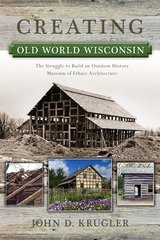 Creating Old World Wisconsin: The Struggle to Build an Outdoor History Museum of Ethnic Architecture
John D. Krugler
University of Wisconsin Press, 2013 With its charming heirloom gardens, historic livestock breeds, and faithfully recreated farmsteads and villages that span nearly 600 acres, Old World Wisconsin is the largest outdoor museum of rural life in the United States. But this seemingly time-frozen landscape of rustic outbuildings and rolling wooded hills did not effortlessly spring into existence, as John D. Krugler shows in Creating Old World Wisconsin.
Visionaries, researchers, curators, and volunteers launched a massive preservation initiative to salvage fast-disappearing immigrant and migrant architecture. Dozens of historic buildings in the 1970s were transported from locations throughout the state to the Kettle Moraine State Forest. These buildings created a backdrop against which twenty-first-century interpreters demonstrate nineteenth- and early twentieth-century agricultural techniques and artisanal craftsmanship. The site, created and maintained by the Wisconsin Historical Society, offers visitors a unique opportunity to learn about the state’s rich and ethnically diverse past through depictions of the everyday lives of its Norwegian, Danish, Finnish, German, Polish, African American, and Yankee inhabitants.
Creating Old World Wisconsin chronicles the fascinating and complex origins of this outdoor museum, highlighting the struggles that faced its creators as they worked to achieve their vision. Even as Milwaukee architect and preservationist Richard W. E. Perrin, the Society's staff, and enthusiastic volunteers opened the museum in time for the national bicentennial in 1976, the site was plagued by limited funds, bureaucratic tangles, and problems associated with gaining public support. By documenting the engaging story of the challenges, roadblocks, false starts, and achievements of the site's founders, Krugler brings to life the history of the dedicated corps who collected and preserved Wisconsin's diverse social history and heritage.
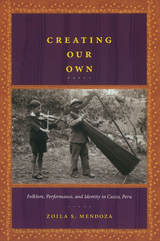 Creating Our Own: Folklore, Performance, and Identity in Cuzco, Peru
Zoila S. Mendoza
Duke University Press, 2007 In Creating Our Own, anthropologist Zoila S. Mendoza explores the early-twentieth-century development of the “folkloric arts”—particularly music, dance, and drama—in Cuzco, Peru, revealing the central role that these expressive practices played in shaping ethnic and regional identities. Mendoza argues that the folkloric productions emerging in Cuzco in the early twentieth century were integral to, rather than only a reflection of, the social and political processes underlying the development of the indigenismo movement. By demonstrating how Cuzco’s folklore emerged from complex interactions between artists and intellectuals of different social classes, she challenges the idea that indigenismo was a project of the elites. Mendoza draws on early-twentieth-century newspapers and other archival documents as well as interviews with key artistic and intellectual figures and their descendants. She offers vivid descriptions of the Peruvian Mission of Incaic Art, a tour undertaken by a group of artists from Cuzco, at their own expense, to represent Peru to Bolivia, Argentina, and Uruguay in 1923–24, as well as of the origins in the 1920s of the Qosqo Center of Native Art, the first cultural institution dedicated to regional and national folkloric art. She highlights other landmarks, including both The Charango Hour, a radio show that contributed to the broad acceptance of rural Andean music from its debut in 1937, and the rise in that same year of another major cultural institution, the American Art Institute of Cuzco. Throughout, she emphasizes the intricate local, regional, national, and international pressures that combined to produce folkloric art, especially the growing importance of national and international tourism in Cuzco. Please visit the Web site http://nas.ucdavis.edu/creatingbook for samples of the images and music discussed in this book.
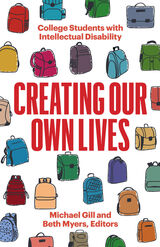 Creating Our Own Lives: College Students with Intellectual Disability
Michael Gill
University of Minnesota Press, 2023 Young adults with intellectual disability tell the story of their own experience of higher education
How do students with intellectual disability experience higher education? Creating Our Own Lives addresses this question through the eyes of participants themselves. In relating their experiences and aspirations, these student perspectives mount a powerful challenge to assumptions that intellectual disability is best met with protection or segregation. Taken together, the essays expose and contradict the inherently ableist claim that individuals with intellectual disability cannot be reliable storytellers. Instead, their deeply informative stories serve as a corrective narrative. The first of the four sections, “Laying the Foundation: Why Everyone Belongs in College,” focuses on belonging and inclusion; the second, “Opening Up Possibilities: Overcoming Doubt and Uncertainty,” conveys the optimism of this generation of advocates through stories of personal hardship, hopeful perseverance, and triumph over adversity; the third, “Inclusion as Action: Diversifying Student Experiences,” supports the understanding of diverse student experiences in inclusive higher education; and the fourth, “Supporting Growth: Peer Mentoring and Advice,” offers guidance to those reimagining and creating educational spaces. Students with disabilities belong in higher education. Not only does this book serve as an important record of students enrolled in inclusive higher education programs, it is also an unprecedented resource, packed with information and inspiration both for parents seeking opportunities for their children and for individuals with intellectual disability who aspire to attend college. Contributors: Makayla Adkins, Olivia Baist, Brandon Baldwin, George Barham, Marquavious Barnes, Katie Bartlett, Steven Brief, De'Onte Brown, Meghan Brozaitis, Mary Bryant, Gracie Carrol, Taylor Cathey, Maia Chamberlain, Antonio E. Contreras, Kim Dean, Elizabeth Droessler, Katie Ducett, Keiron Dyck, Rachel Gomez, Deriq Graves, Micah Gray, Maggie Guillaume, Cleo Hamilton, Nathan Heald, Joshua R. Hourigan, Hannah Lenae Humes, Courtney Jorgensen, Eilish Kelderman, Kailin Kelderman, Kenneth Kelty, Kaelan Knowles, Karlee Lambert, Kate Lisotta, Rachel Mast, Elise McDaniel, Emma Miller, Jake Miller, Lydia Newnum, Brenna Mantz Nielsen, Carly O’Connell, Nadia Osbey, Stirling Peebles, Breyan Pettaway, Amanda Pilkenton, True Rafferty, Taylor Ruppe, Lawrence Sapp, Tyler Shore, Brianna Silva, Alex Smith, Elliott Smith, Phillandra Smith, Payton Storms, Allen Thomas, Kylie Walter, Stephen Wanser, Sayid Webb, Breana Whittlesey, Luke Wilcox, Adam Wolfond.
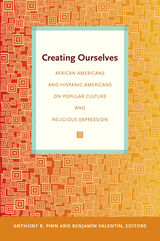 Creating Ourselves: African Americans and Hispanic Americans on Popular Culture and Religious Expression
Anthony B. Pinn and Benjamín Valentín, eds.
Duke University Press, 2009 Creating Ourselves is a unique effort to lay the cultural and theological groundwork for cross-cultural collaboration between the African and Latino/a American communities. In the introduction, the editors contend that given overlapping histories and interests of the two communities, they should work together to challenge social injustices. Acknowledging that dialogue is a necessary precursor to collaboration, they maintain that African and Latino/a Americans need to cultivate the habit of engaging “the other” in substantive conversation. Toward that end, they have brought together theologians and scholars of religion from both communities. The contributors offer broadly comparative exchanges about the religious and theological significance of various forms of African American and Latino/a popular culture, including representations of the body, literature, music, television, visual arts, and cooking. Corresponding to a particular form of popular culture, each section features two essays, one by an African American scholar and one by a Latino/a scholar, as well as a short response by each scholar to the other’s essay. The essays and responses are lively, varied, and often personal. One contributor puts forth a “brown” theology of hip hop that celebrates hybridity, contradiction, and cultural miscegenation. Another analyzes the content of the message transmitted by African American evangelical preachers who have become popular sensations through television broadcasts, video distribution, and Internet promotions. The other essays include a theological reading of the Latina body, a consideration of the “authenticity” of representations of Jesus as white, a theological account of the popularity of telenovelas, and a reading of African American ideas of paradise in one of Toni Morrison’s novels. Creating Ourselves helps to make popular culture available as a resource for theology and religious studies and for facilitating meaningful discussions across racial and ethnic boundaries. Contributors. Teresa Delgado, James H. Evans Jr., Joseph De León, Cheryl Kirk-Duggan, Angel F. Méndez Montoya, Alexander Nava, Anthony B. Pinn, Mayra Rivera, Suzanne E. Hoeferkamp Segovia, Benjamín Valentín, Jonathan L. Walton, Traci C. West, Nancy Lynne Westfield, Sheila F. Winborne
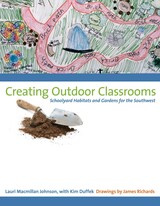 Creating Outdoor Classrooms: Schoolyard Habitats and Gardens for the Southwest
By Lauri Macmillan Johnson, with Kim Duffek
University of Texas Press, 2008 Schoolyards have come a long way from the barren playgrounds that many people remember. Today's school campuses often feature gardens in which students can learn about native plants and wildlife, grow vegetables and fruit, explore cultural traditions, practice reading and math skills, and use their imaginations to create fun play spaces. And for a growing number of urban students, these schoolyard gardens offer the best, if not the only, opportunity to experience the natural world firsthand and enjoy its many benefits. This book is a practical, hands-on guide for creating a variety of learning environments in the arid Southwest. Filled with clear, easy-to-use information and illustrated with photographs, drawings, and plans, the book covers everything necessary to create schoolyard gardens: - An introduction to schoolyards as outdoor classrooms and several types of habitats, including art gardens, cultural history gardens, ecological gardens, literacy gardens, and vegetable gardens
- Design theory, including a history of garden styles, and design principles and design elements
- Beginning the design process, including identifying participants and writing a design program that sets out goals and requirements
- Conducting site research and synthesizing design elements to arrive at a final design
- Design essentials, including project funding and design features, maintenance, accessibility, safety, and project evaluation and revision
- Wildlife ecology, including elements needed for survival such as food and shelter
- Creating gardens for pollinators and other wildlife, including hummingbirds, butterflies, bees, moths, bats, and flies, as well as pest control
- Lists of native plants for various kinds of habitats and nurseries that sell native plants, as well as books, web sites, and other resources for learning more about native plants and wildlife
This guide will be essential for landscape architects, school personnel, parents, and students. Indeed, its principles can be used in designing schoolyard habitats across the country, while its information on gardening with native plants and wildlife will be useful to homeowners across the Southwest.
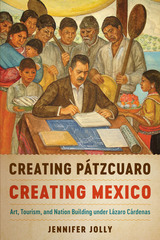 Creating Pátzcuaro, Creating Mexico: Art, Tourism, and Nation Building under Lázaro Cárdenas
By Jennifer Jolly
University of Texas Press, 2018 LASA Visual Culture Studies Section Book Prize, Latin American Studies Association (LASA) Winner, Arthur P. Whitaker Prize, Middle Atlantic Council of Latin American Studies, 2019 In the 1930s, the artistic and cultural patronage of celebrated Mexican president Lázaro Cárdenas transformed a small Michoacán city, Pátzcuaro, into a popular center for national tourism. Cárdenas commissioned public monuments and archeological excavations; supported new schools, libraries, and a public theater; developed tourism sites and infrastructure, including the Museo de Artes e Industrias Populares; and hired artists to paint murals celebrating regional history, traditions, and culture. The creation of Pátzcuaro was formative for Mexico; not only did it provide an early model for regional economic and cultural development, but it also helped establish some of Mexico’s most enduring national myths, rituals, and institutions. In Creating Pátzcuaro, Creating Mexico, Jennifer Jolly argues that Pátzcuaro became a microcosm of cultural power during the 1930s and that we find the foundations of modern Mexico in its creation. Her extensive historical and archival research reveals how Cárdenas and the artists and intellectuals who worked with him used cultural patronage as a guise for radical modernization in the region. Jolly demonstrates that the Pátzcuaro project helped define a new modern body politic for Mexico, in which the population was asked to emulate Cárdenas by touring the country and seeing and embracing its land, history, and people. Ultimately, by offering Mexicans a means to identify and engage with power and privilege, the creation of Pátzcuaro placed art and tourism at the center of Mexico’s postrevolutionary nation building project.
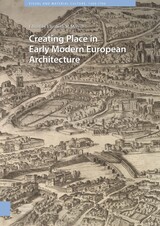 Creating Place in Early Modern European Architecture
Elizabeth Merrill
Amsterdam University Press, 2022 The importance of place – as a unique spatial identity – has been recognized since antiquity. Ancient references to the 'genius loci', or spirit of place, evoked not only the location of a distinct atmosphere or environment, but also the protection of this location, and implicitly, its making and construction. This volume examines the concept of place as it relates to architectural production and building knowledge in early modern Europe (1400-1800). The places explored in the book's ten essays take various forms, from an individual dwelling to a cohesive urban development to an extensive political territory. Within the scope of each study, the authors draw on primary source documents and original research to demonstrate the distinctive features of a given architectural place, and how these are related to a geographic location, social circumstances, and the contributions of individual practitioners. The essays underscore the distinct techniques, practices and organizational structures by which physical places were made in the early modern period.
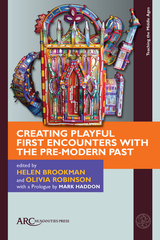 Creating Playful First Encounters with the Pre-Modern Past
Helen Brookman
Arc Humanities Press, 2023
This collection explores playful ways of fostering creative engagements with the medieval and early modern past and its own literary and artistic products, especially among those new to their study.
As scholars and teachers of early English, the contributors cover literary and cultural material from a range of genres within the Old English, Middle English, Tudor, and Stuart periods and collectively delve into a shared interest in facilitating what we might loosely define as “newcomer” or “non-specialist” encounters with the past: initial, exploratory contact in which prior knowledge cannot be assumed, whether involving creative professionals, experts from other disciplines, undergraduate and school students, or members of the public. Considering artworks and installation, theatre and performance and curation practices, case studies offer practice-based examples of learning and engagement which proceed primarily through creative and playful approaches. The case studies are arranged into two broad groups: those which work through performance and theatrical play of various kinds, and those which work through playful practices of production and making. All share a perspective of irreverence, of vivid immersion, and of the possibilities of conjuring with the past.
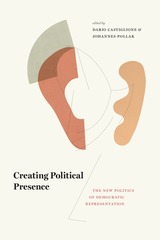 Creating Political Presence: The New Politics of Democratic Representation
Edited by Dario Castiglione and Johannes Pollak
University of Chicago Press, 2018 For at least two centuries, democratic representation has been at the center of debate. Should elected representatives express the views of the majority, or do they have the discretion to interpret their constituents’ interests? How can representatives balance the desires of their parties and their electors? What should be done to strengthen the representation of groups that have been excluded from the political system? Representative democracy itself remains frequently contested, regarded as incapable of reflecting the will of the masses, or inadequate for today’s global governance. Recently, however, this view of democratic representation has been under attack for its failure to capture the performative and constructive elements of the process of representation, and a new literature more attentive to these aspects of the relationship between representatives and the represented has arisen.
In Creating Political Presence, a diverse and international group of scholars explores the implications of such a turn. Two broad, overlapping perspectives emerge. In the first section, the contributions investigate how political representation relates to empowerment, either facilitating or interfering with the capacity of citizens to develop autonomous judgment in collective decision making. Contributions in the second section look at representation from the perspective of inclusion, focusing on how representative relationships and claims articulate the demands of those who are excluded or have no voice. The final section examines political representation from a more systemic perspective, exploring its broader environmental conditions and the way it acquires democratic legitimacy.
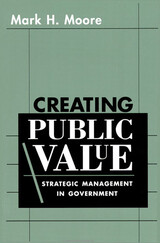 Creating Public Value: Strategic Management in Government
Mark H. Moore
Harvard University Press, 1997 A seminal figure in the field of public management, Mark H. Moore presents his summation of fifteen years of research, observation, and teaching about what public sector executives should do to improve the performance of public enterprises. Useful for both practicing public executives and those who teach them, this book explicates some of the richest of several hundred cases used at Harvard’s Kennedy School of Government and illuminates their broader lessons for government managers. Moore addresses four questions that have long bedeviled public administration: What should citizens and their representatives expect and demand from public executives? What sources can public managers consult to learn what is valuable for them to produce? How should public managers cope with inconsistent and fickle political mandates? How can public managers find room to innovate?
Moore’s answers respond to the well-understood difficulties of managing public enterprises in modern society by recommending specific, concrete changes in the practices of individual public managers: how they envision what is valuable to produce, how they engage their political overseers, and how they deliver services and fulfill obligations to clients. Following Moore’s cases, we witness dilemmas faced by a cross-section of public managers: William Ruckelshaus and the Environmental Protection Agency; Jerome Miller and the Department of Youth Services; Miles Mahoney and the Park Plaza Redevelopment Project; David Sencer and the swine flu scare; Lee Brown and the Houston Police Department; Harry Spence and the Boston Housing Authority. Their work, together with Moore’s analysis, reveals how public managers can achieve their true goal of producing public value.
Creating Smart and Safe Manufacturing Environments: The role of innovation and safety management
Wai Yie Leong
The Institution of Engineering and Technology, 2025 Creating Smart and Safe Manufacturing Environments: The role of innovation and safety management is a comprehensive volume that bridges engineering, data science, occupational safety, and industrial automation to provide a structured blueprint for transforming conventional production systems into intelligent, resilient, and human-centric manufacturing ecosystems.
Creating Spaniards: Culture and National Identity in Republican Spain
Sandie Holguin
University of Wisconsin Press, 2002
Creating Spaniards is a cultural and intellectual history that explains the intersection of politics and culture, and the formation of a national identity, during Spain’s Second Republic and Civil War. It counters recent scholarship claiming that leaders of the Second Republic had no programs for "inventing traditions" to encourage a Spanish national identity.
Focusing on the Second Republic, 1931–1936, Sandie Holguín illustrates how various intellectuals and politicians of the Republican–Socialist coalition used theater, literature, and film to aid the construction of a unified Spanish culture and history. She uses memoirs, journals, newspapers, parliamentary debates, and archival sources in her examination of the impact that cultural reforms had on the transformation of one of Europe’s oldest states.
Creating Successful Communities: A Guidebook To Growth Management Strategies
Michael A. Mantell, Luther Propst, and Stephen F. Harper; Conservation Foundation
Island Press, 1990 Creating Successful Communities is a practical compendium of techniques for effective land use and growth management. It offers a framework for land-use decisionmaking and growth management: techniques for protecting key resources such as agricultural land, open space, historic and cultural structure, aesthetics, and rivers and wetlands as well as ways to organize effectively. The companion Resource Guide provides detailed information on topics covered in I>Creating Successful Communities.
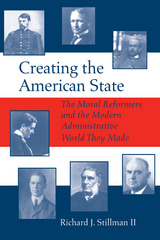 Creating the American State: The Moral Reformers and the Modern Administrative World They Made
Richard Stillman
University of Alabama Press, 1998 In this illuminating and provocative study, Stillman provides a new understanding of the foundation of the American state. Whether renewing a driver's license, traveling on an airplane, or just watching in fascination as a robot probes Mars, we all participate in the everyday workings of the modern administrative state. As Stillman demonstrates in this study, however, we have not, until now, fully investigated or appreciated this administrative stateÕs origins or its evolution into the entity that so affects our lives today. Stillman reveals that this modern enterprise emerged from a complex foundation of ideas and ideals rather than as a result of a simple, rational plan or cataclysmic event, as previously contended. In fact, he finds that the basis for our current administrative state lies in the lives of the seven individuals who, during the late 19th and early 20th centuries, invented its various elements. Stillman also finds that although they lived at different times, these seven founders-George William Curtis, Charles Francis Adams, Jr., Emory Upton, Jane Addams, Frederick W. Taylor, Richard Childs, and Louis Brownlow-had much in common: all were products of intensely Protestant, small-town America, and all were motivated by strong moral idealism. Indeed, Stillman finds that state making in the United States has been a continuation of the Protestant goal to "protest and purify." Some names are more recognizable than others, but all, through remarkable moral fervor and exceptional leadership skills, invented the administrative practices and procedures so familiar today.
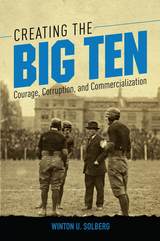 Creating the Big Ten: Courage, Corruption, and Commercialization
Winton U Solberg
University of Illinois Press, 2018 Big Ten football fans pack gridiron cathedrals that hold up to 100,000 spectators. The conference's fourteen member schools share a broadcast network and a 2016 media deal worth $2.64 billion. This cultural and financial colossus grew out of a modest 1895 meeting that focused on football's brutality and encroaching professionalism in the game. Winton U. Solberg explores the relationship between higher education and collegiate football in the Big Ten's first fifty years. This formative era saw debates over eligibility and amateurism roil the sport. In particular, faculty concerned with academics clashed with coaches, university presidents, and others who played to win. Solberg follows the conference's successful early efforts to put the best interests of institutions and athletes first. Yet, as he shows, commercial concerns undid such work after World War I as sports increasingly eclipsed academics. By the 1940s, the Big Ten's impact on American sports was undeniable. It had shaped the development of intercollegiate athletics and college football nationwide while serving as a model for other athletic conferences.
 Creating the College Man: American Mass Magazines and Middle-Class Manhood, 1890–1915
Daniel A. Clark
University of Wisconsin Press, 2010 How did a college education become so vital to American notions of professional and personal advancement? Reared on the ideal of the self-made man, American men had long rejected the need for college. But in the early twentieth century this ideal began to change as white men born in the U.S. faced a barrage of new challenges, among them a stultifying bureaucracy and growing competition in the workplace from an influx of immigrants and women. At this point a college education appealed to young men as an attractive avenue to success in a dawning corporate age. Accessible at first almost exclusively to middle-class white males, college funneled these aspiring elites toward a more comfortable and certain future in a revamped construction of the American dream.
In Creating the College Man Daniel A. Clark argues that the dominant mass media of the era—popular magazines such as Cosmopolitan and the Saturday Evening Post—played an integral role in shaping the immediate and long-term goals of this select group of men. In editorials, articles, fiction, and advertising, magazines depicted the college man as simultaneously cultured and scientific, genteel and athletic, polished and tough. Such depictions underscored the college experience in powerful and attractive ways that neatly united the incongruous strains of American manhood and linked a college education to corporate success.
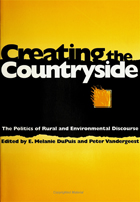 Creating The Countryside
edited by E. Melanie DuPuis and Peter Vandergeest
Temple University Press, 1996 What does it mean to save nature and rural life? Do people know what they are trying to save and what they mean by "save"? As the answers to these questions become more and more unclear, so, too do the concepts of "environment," "wilderness," and "country." From the abuse of the Amazon rain forest to how Vermont has been marketed as the ideal rural place, this collection looks at what the countryside is, should be, or can be from the perspective of people who are actively involved in such debates. Each contributor examines the underlying tendencies–and subsequent policies–that separate country from city, developed land from wilderness, and human activity from natural processes. The editors argue in their introduction that these dualistic categories limit our ability to think about environmental and rural problems and hamper our ability to formulate practical, realistic, and just solutions. This book's interpretive approach to the natural world explores why people make artificial distinctions between nature and culture, and how people can create new forms of sustainable development in terms of real problems and real places. In the series Conflicts in Urban and Regional Development, edited by John R. Logan and Todd Swanstrom.
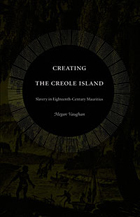 Creating the Creole Island: Slavery in Eighteenth-Century Mauritius
Megan Vaughan
Duke University Press, 2005 The island of Mauritius lies in the middle of the Indian Ocean, about 550 miles east of Madagascar. Uninhabited until the arrival of colonists in the late sixteenth century, Mauritius was subsequently populated by many different peoples as successive waves of colonizers and slaves arrived at its shores. The French ruled the island from the early eighteenth century until the early nineteenth. Throughout the 1700s, ships brought men and women from France to build the colonial population and from Africa and India as slaves. In Creating the Creole Island, the distinguished historian Megan Vaughan traces the complex and contradictory social relations that developed on Mauritius under French colonial rule, paying particular attention to questions of subjectivity and agency. Combining archival research with an engaging literary style, Vaughan juxtaposes extensive analysis of court records with examinations of the logs of slave ships and of colonial correspondence and travel accounts. The result is a close reading of life on the island, power relations, colonialism, and the process of cultural creolization. Vaughan brings to light complexities of language, sexuality, and reproduction as well as the impact of the French Revolution. Illuminating a crucial period in the history of Mauritius, Creating the Creole Island is a major contribution to the historiography of slavery, colonialism, and creolization across the Indian Ocean.
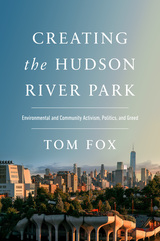 Creating the Hudson River Park: Environmental and Community Activism, Politics, and Greed
Tom Fox
Rutgers University Press, 2024 The 4-mile-long, 550-acre Hudson River Park is nearing completion and is the largest park built in Manhattan since Central Park opened more than 150 years ago. It has transformed a derelict waterfront, protected the Hudson River estuary, preserved commercial maritime activities, created new recreational opportunities for millions of New Yorkers, enhanced tourism, stimulated redevelopment in adjacent neighborhoods, and set a precedent for waterfront redevelopment. The Park attracts seventeen million visitors annually. Creating the Hudson River Park is a first-person story of how this park came to be. Working together over three decades, community groups, civic and environmental organizations, labor, the real estate and business community, government agencies, and elected officials won a historic victory for environmental preservation, the use and enjoyment of the Hudson River, and urban redevelopment. However, the park is also the embodiment of a troubling trend toward the commercialization of America’s public parks.
After the defeat of the $2.4 billion Westway plan to fill 234 acres of the Hudson in 1985, the stage was set for the revitalization of Manhattan’s West Side waterfront. Between 1986 and 1998 the process focused on the basics like designing an appropriate roadway, removing noncompliant municipal and commercial activities from the waterfront, implementing temporary improvements, developing the Park’s first revenue-producing commercial area at Chelsea Piers, completing the public planning and environmental review processes, and negotiating the 1998 Hudson River Park Act that officially created the Park. From 1999 to 2009 planning and construction were funded with public money and focused on creating active and passive recreation opportunities on the Tribeca, Greenwich Village, Chelsea, and Hell’s Kitchen waterfronts. However, initial recommendations to secure long term financial support for the Park from the increase in adjacent real estate values that resulted from the Park’s creation were ignored. City and state politicians had other priorities and public funding for the Park dwindled. The recent phase of the project, from 2010 to 2021, focused on “development” both in and adjacent to the Park. Changes in leadership, and new challenges provide an opportunity to return to a transparent public planning process and complete the redevelopment of the waterfront for the remainder of the 21st-century. Fox’s first-person perspective helps to document the history of the Hudson River Park, recognizes those who made it happen and those who made it difficult, and provides lessons that may help private citizens and public servants expand and protect the public parks and natural systems that are so critical to urban well-being.
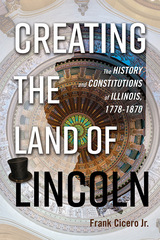 Creating the Land of Lincoln: The History and Constitutions of Illinois, 1778-1870
Frank Cicero Jr.
University of Illinois Press, 2018 In its early days, Illinois seemed destined to extend the American South. Its population of transplants lived an upland southern culture and in some cases owned slaves. Yet the nineteenth century and three constitutions recast Illinois as a crucible of northern strength and American progress. Frank Cicero Jr. provides an appealing new history of Illinois as expressed by the state's constitutions—and the lively conventions that led to each one. In Creating the Land of Lincoln, Cicero sheds light on the vital debates of delegates who, freed from electoral necessity, revealed the opinions, prejudices, sentiments, and dreams of Illinoisans at critical junctures in state history. Cicero simultaneously analyzes decisions large and small that fostered momentous social and political changes. The addition of northern land in the 1818 constitution, for instance, opened up the state to immigrant populations that reoriented Illinois to the north. Legislative abuses and rancor over free blacks influenced the 1848 document and the subsequent rise of a Republican Party that gave the nation Abraham Lincoln as its president. Cicero concludes with the 1870 constitution, revealing how its dialogues and resolutions set the state on the modern course that still endures today.
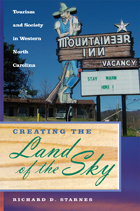 Creating the Land of the Sky: Tourism and Society in Western North Carolina
Richard D. Starnes
University of Alabama Press, 2005 A sophisticated inquiry into tourism's social and economic power across the South.
In the early 19th century, planter families from South Carolina, Georgia, and eastern North Carolina left their low-country estates during the summer to relocate their households to vacation homes in the mountains of western North Carolina. Those unable to afford the expense of a second home relaxed at the hotels that emerged to meet their needs. This early tourist activity set the stage for tourism to become the region's New South industry. After 1865, the development of railroads and the bugeoning consumer culture led to the expansion of tourism across the whole region.
Richard Starnes argues that western North Carolina benefited from the romanticized image of Appalachia in the post-Civil War American consciousness. This image transformed the southern highlands into an exotic travel destination, a place where both climate and culture offered visitors a myriad of diversions. This depiction was futher bolstered by partnerships between state and federal agencies, local boosters, and outside developers to create the atrtactions necessary to lure tourists to the region.
As tourism grew, so did the tension between leaders in the industry and local residents. The commodification of regional culture, low-wage tourism jobs, inflated land prices, and negative personal experiences bred no small degree of animosity among mountain residents toward visitors. Starnes's study provides a better understanding of the significant role that tourism played in shaping communities across the South.
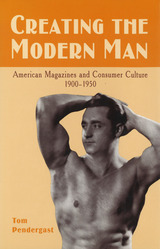 Creating the Modern Man: American Magazines and Consumer Culture, 1900-1950
Tom Pendergast
University of Missouri Press, 2000
In the late nineteenth century, general-interest magazines began to reach an unprecedented number of readers and conveyed to those readers diverse messages about the meaning of masculinity in America. Over the next fifty years, these messages narrated a shift from Victorian masculinity, which valued character, integrity, hard work, and duty, to modern masculinity, which valued personality, self-realization, and image. In Creating the Modern Man, Tom Pendergast studies the multifaceted ways that masculinity is represented in magazines published during this transitional period.
Pendergast focuses on the rise of mass consumer culture, demonstrating that consumerism was a key factor in reshaping American notions of masculinity as presented in popular magazines. Whereas much scholarship has decried the effects of consumerism, Pendergast treats consumer culture as an energizing force in the American magazine market. He suggests that such magazines offered men new and meaningful visions of masculine identity and argues that men actively participated in restructuring the masculine ideal. Engaging a wide range of magazines from American Magazine to Esquire to True, Pendergast demonstrates how these publications presented masculinity in ways that reflected the magazines' relationship to advertisers, contributors, and readers.
This fascinating study includes such African American magazines as the Colored American, Crisis, Opportunity, and Ebony. Pendergast reasons that the rise of modern masculinity opened the way for African American men to identify with normative masculine values. As white men reinvented the idea of the "self-made man" for a new era, black men struggled to negotiate a meaningful place for black masculinity in a culture intent on denying them access.
The first complete investigation of the representation of men in American magazines, Creating the Modern Man makes an important contribution to our understanding of these publications, both as elements of mass culture and as interesting institutions in their own right. Pendergast takes readers inside the complex world of magazine publishing, demonstrating how magazines slowly yet surely help create the cultural images that shape societal gender roles.
 Creating the New Woman: The Rise of Southern Women's Progressive Culture in Texas, 1893-1918
Judith N. McArthur
University of Illinois Press, 1998 Regionally distinct yet influenced by national trends, women's progressive culture in Texas offers a valuable opportunity to analyze the evolution of women's voluntary associations, their challenges to southern conventions of race and class, and their quest for social change and political power. Judith McArthur traces how general concerns of national progressive organizations about pure food, prostitution, and education reform shaped programs at the state and local levels. Southern women differed from their Northern counterparts by devising new approaches to settlement work and taking advantage of World War I to challenge southern gender and racial norms. McArthur's original analysis details how women in Texas succeeded in securing partial voting rights before passage of the Nineteenth Amendment. She also provides valuable comparisons between North and South, among various southern states, and between black and white, and male and female, progressives.
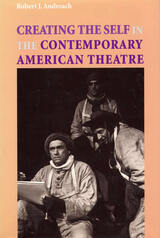 Creating the Self in the Contemporary American Theatre
Robert J. Andreach
Southern Illinois University Press, 1998 Combining his skills as both a professional reviewer of theatre and a literary critic, Robert J. Andreach finds himself in a unique position to provide coherence to what most observers perceive as an unrelated welter of contemporary theatrical experiences. Exploring the theatre from the 1960s to the present, he shows the various ways in which the contemporary American theatre creates a personal, theatrical, and national self. Andreach argues that the contemporary American theatre creates multiple selves that reflect and give voice to the many communities within our multicultural society. These selves are fragmented and enclaved, however, which makes necessary a counter movement that seeks, through interaction among the various parts, to heal the divisions within, between, and among them. In his examination of the contemporary theatre, Andreach demonstrates that the plays and the performance art of the feminist, African-American, Hispanic-American, Asian-American, and Native American theatres are equal to the works created within the dominant Eurocentric culture. He then turns to comparable works created within the culture of what performance artist Karen Finley calls the "one male god," works that reflect the breakup of an old order. He discusses the experimental theatre, which turns to the imagination to reveal the nature of the self, and concludes with an examination of recent American works, pointing out in each either the presence or absence of resolution within the divisions of self.
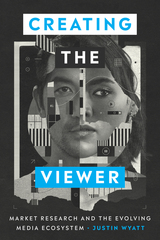 Creating the Viewer: Market Research and the Evolving Media Ecosystem
Justin Wyatt
University of Texas Press, 2024 A study of the largely hidden world of primary media market research and the different methods used to understand how the viewer is pictured in the industry. The first book on the intersection between market research and media, Creating the Viewer takes a critical look at media companies’ studies of television viewers, the assumptions behind these studies, and the images of the viewer that are constructed through them. Justin Wyatt examines various types of market research, including talent testing, pilot testing, series maintenance, brand studies, and new show “ideation,” providing examples from a range of programming including news, sitcoms, reality shows, and dramas. He looks at brand studies for networks such as E!, and examines how the brands of individuals such as showrunner Ryan Murphy can be tested. Both an analytical and practical work, the book includes sample questionnaires and paths for study moderators and research analysts to follow. Drawn from over fifteen years of experience in research departments at various media companies, Creating the Viewer looks toward the future of media viewership, discussing how the concept of the viewer has changed in the age of streaming, how services such as Netflix view market research, and how viewers themselves can shift the industry through their media choices, behaviors, and activities.
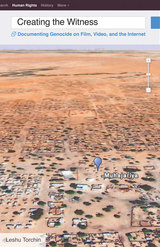 Creating the Witness: Documenting Genocide on Film, Video, and the Internet
Leshu Torchin
University of Minnesota Press, 2012 Since the beginning of the conflict in 2003, more than 300,000 lives have been lost in Darfur. Players of the video game Darfur Is Dying learn this sobering fact and more as they work to ensure the survival of a virtual refugee camp. The video game not only puts players in the position of a struggling refugee, it shows them how they can take action in the real world. Creating the Witness examines the role of film and the Internet in creating virtual witnesses to genocide over the last one hundred years. The book asks, how do visual media work to produce witnesses—audiences who are drawn into action? The argument is a detailed critique of the notion that there is a seamless trajectory from observing an atrocity to acting in order to intervene. According to Leshu Torchin, it is not enough to have a camera; images of genocide require an ideological framework to reinforce the messages the images are meant to convey. Torchin presents wide-ranging examples of witnessing and genocide, including the Armenian genocide, the Holocaust (engaging film as witness in the context of the Nuremburg trials), and the international human rights organization WITNESS and its sustained efforts to use video to publicize human rights advocacy and compel action. From a historical and comparative approach, Torchin’s broad survey of media and the social practices around it investigates the development of popular understandings of genocide to achieve recognition and response—both political and judicial—ultimately calling on viewers to act on behalf of human rights.
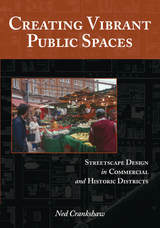 Creating Vibrant Public Spaces: Streetscape Design in Commercial and Historic Districts
By Ned Crankshaw
Island Press, 2008 Public space and street design in commercial districts can dictate the success or failure of walkable community centers. Instead of focusing our efforts on designing new “compact town centers,” many of which are located in the suburbs, we should instead be revitalizing existing authentic town centers. This informative, practical book describes methods for restoring the health and vibrancy of the streets and public spaces of our existing commercial districts in ways that will make them positive alternatives to suburban sprawl while respecting their historic character.
Clearly written and with numerous photos to enhance the text, Creating Vibrant Public Spaces uses examples from communities across the United States to illustrate the potential for restoring the balance provided by older urban centers between automobile access and “walkability.” In advice that can be applied to a variety of settings and scales, Crankshaw describes the tenets of contemporary design theory, how to understand the physical evolution of towns, how to analyze existing conditions, and how to evaluate the feasibility of design recommendations.
Good design in commercial centers, Crankshaw contends, facilitates movement and access, creates dynamic social spaces, and contributes to the sense of a “center”—a place where social, commercial, and institutional interaction is more vibrant than in surrounding districts. For all the talk of creating new “green” urban spaces, the ingredients of environmentally aware design, he points out, can often be found in the deteriorating cores and neighborhoods of towns and cities across the United States. With creativity, planning, and commitment, these centers can thrive again, adding to the quality of local life and contributing to the local economy, too.
 Creating with Roots: Contemporary Chinese National Folk Dance Choreography
Rui Xu
University of Michigan Press, 2025 Creating with Roots is a critical introduction to the history, theory, and creative practice of Chinese national folk dance, the Chinese-speaking world’s most popular contemporary dance form. A complex cultural and artistic phenomenon that resists simple categorization, Chinese national folk dance merges folkloric material with contemporary stage aesthetics and blends rural folk dances of the Han majority with dances representing China’s minoritized ethnic communities, bridging cultural differences of geography, economic class, and ethnicity. As such, Chinese national folk dance has become a lightning rod for current debates in the arts worldwide—how to balance local heritage with artistic innovation, how to maintain cultural integrity amid commercialization and Eurocentrism, and the ethics of representation in contemporary multiculturalism. Chinese national folk dance is increasingly a globalized phenomenon: schools, classes, competitions, and performances of professionals and amateurs now exist all across the world. Originally published in Chinese and authored by prominent Chinese dance scholar, Rui Xu, this English translation will be an essential resource for the global conversation about how dancers and choreographers navigate tradition and innovation in contemporary national folk dance choreography.
Creating with Roots offers a detailed breakdown of key terms and concepts necessary for understanding Chinese national folk dance and analyzes 37 examples of choreography dating from the 1940s to 2000. The author situates these explanations within the longer history of cultural practice and theory in China and in relation to the international dance discourses of the former Soviet Union, Eastern Europe, Western Europe, and North America.
 Creating Worlds Otherwise: Art, Collective Action, and (Post)Extractivism
Paula Serafini
Vanderbilt University Press, 2022 Honorable Mention, Best Book in Latin American Visual Culture Studies, Latin American Studies Association–Visual Culture Studies Section, 2023
Extractivism has increasingly become the ground on which activists and scholars in Latin America frame the dynamics of ecological devastation, accumulation of wealth, and erosion of rights. These maladies are the direct consequences of long-standing extraction-oriented economies, and more recently from the expansion of the extractive frontier and the implementation of new technologies in the extraction of fossil fuels, mining, and agriculture. But the fields of sociology, political ecology, anthropology, and geography have largely ignored the role of art and cultural practices in studies of extractivism and post-extractivism.
The field of art theory, on the other hand, has offered a number of texts that put forward insightful analyses of artwork addressing extraction, environmental devastation, and the climate crisis. However, an art theory perspective that does not engage firsthand and in depth with collective action remains limited and fails to provide an account of the role, processes, and politics of art in anti- and post-extractivist movements.
Creating Worlds Otherwise examines the narratives that subaltern groups generate around extractivism, and how they develop, communicate, and mobilize these narratives through art and cultural practices. It reports on a six-year project on creative resistance to extractivism in Argentina and builds on long-term engagement working on environmental justice projects and campaigns in Argentina and the UK.
It is an innovative contribution to the fields of Latin American studies, political ecology, cultural studies, and art theory, and addresses pressing questions regarding what post-extractivist worlds might look like as well as how such visions are put into practice.
 Creation and Creativity in Medieval Art: Illustrating Genesis
Beate Fricke
Amsterdam University Press, 2025 Creation imagery in manuscripts made in the Middle Ages became a locus for visual experimentation as well as the expression of ideas about creativity. By examining representations of divine creation and illustrations of the creation stories in Genesis, this book links medieval ideas about creation, the characteristic of the Divine Creator, and the act of creation with themes in medieval thought about the work of medieval artists.
Case studies from manuscripts illuminating the creation dating from the eleventh to the fourteenth century (Junius 11/The Cædmon Manuscript, Roda Bible & Ripoll Bible, Bible moralisées, Hamburg Bible, Holkhalm Bible) reveal self-reflective moments; where medieval artists relate artistic invention and theological debates about creation. This book traces the artists’ thinking in their own work and then contextualizes those visual cues within the context of philosophical arguments about the creation of the world. It also considers how Western medieval artists, in inventing original illuminations and experimenting with new representational modes, suggest potential analogies between their own work, God’s acts of creation, and nature’s generative force.
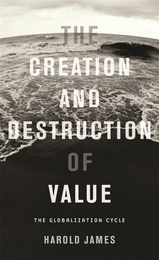 The Creation and Destruction of Value: The Globalization Cycle
Harold James
Harvard University Press, 2012 Harold James examines the vulnerability and fragility of processes of globalization, both historically and in the present. This book applies lessons from past breakdowns of globalization—above all in the Great Depression—to show how financial crises provoke backlashes against global integration: against the mobility of capital or goods, but also against flows of migration. By a parallel examination of the financial panics of 1929 and 1931 as well as that of 2008, he shows how banking and monetary collapses suddenly and radically alter the rules of engagement for every other type of economic activity.
Increased calls for state action in countercyclical fiscal policy bring demands for trade protection. In the open economy of the twenty-first century, such calls are only viable in very large states—probably only in the United States and China. By contrast, in smaller countries demand trickles out of the national container, creating jobs in other countries. The international community is thus paralyzed, and international institutions are challenged by conflicts of interest. The book shows the looming psychological and material consequences of an interconnected world for people and the institutions they create.
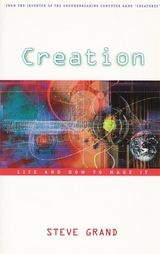 Creation: Life and How to Make It
Steve Grand
Harvard University Press, 2001 Working mostly alone, almost single-handedly writing 250,000 lines of computer code, Steve Grand produced Creatures®, a revolutionary computer game that allowed players to create living beings complete with brains, genes, and hormonal systems—creatures that would live and breathe and breed in real time on an ordinary desktop computer. Enormously successful, the game inevitably raises the question: What is artificial life? And in this book—a chance for the devoted fan and the simply curious onlooker to see the world from the perspective of an original philosopher-engineer and intellectual maverick—Steve Grand proposes an answer.
From the composition of the brains and bodies of artificial life forms to the philosophical guidelines and computational frameworks that define them, Creation plumbs the practical, social, and ethical aspects and implications of the state of the art. But more than that, the book gives readers access to the insights Grand acquired in writing Creatures—insights that yield a view of the world that is surprisingly antireductionist, antimaterialist, and (to a degree) antimechanistic, a view that sees matter, life, mind, and society as simply different levels of the same thing. Such a hierarchy, Grand suggests, can be mirrored by an equivalent one that exists inside a parallel universe called cyberspace.
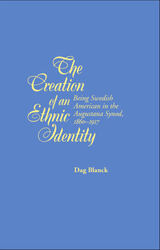 The Creation of an Ethnic Identity: Being Swedish American in the Augustana Synod, 1860-1917
Dag Blanck
Southern Illinois University Press, 2006 Analyzing the development of a Swedish American identity The Creation of an Ethnic Identity: Being Swedish American in the Augustana Synod, 1860–1917 analyzes how Swedish American identity was constructed, maintained, and changed in the late nineteenth and early twentieth centuries. The Augustana Synod, the largest religious-based organization created by Swedish immigrants in the United States, played an important role in establishing what it meant to be Swedish American. In this study, author Dag Blanck poses three fundamental questions: How did an ethnic identity develop in the Augustana Synod? What was that identity? Why was an ethnic identity formed? Based on primary sources formerly unknown or neglected, The Creation of an Ethnic Identity examines the Lutheran Augustana Synod, Augustana College, and the Augustana Book Concern to provide insights into how ethnic identity is constructed within a major religious body, a central educational institution, and a major publishing house. Starting from the concept of ethnicity as something created or invented, Blanck goes on to explore how it was possible for a white European immigrant group like the Swedes to use its ethnicity as a tool of integration into American society. The nature of their ethnicity, says Blanck, was both determined by their cultural origins and also the values and nature of American society as they perceived it. Becoming Swedish American was also a way of becoming American. The volume, which is augmented by illustrations, integrates the most critical scholarship on immigration and ethnicity over the past half century and provides a strong argument about how ethnicity is shaped over time within an immigrant group.
The Creation of Dangerous Violent Criminals
Lonnie H. Athens
University of Illinois Press, 1992 Lonnie Athens examines a problem that has long baffled experts and lay people alike: How does a person become a dangerous violent criminal? He explains how those who commit brutal crimes begin as relatively benign individuals who undergo lengthy, at times tortuous. development leading them to malevolence. The process that Athens labels "violentization" encompasses four stages: brutalization, belligerency, violent performance, and virulency. Athens uses vivid first-person accounts gleaned from in-depth interviews with nascent and hardened violent criminals to back up his theory, producing a book that will appeal to a wide variety of readers interested in criminal justice, law, and sociology.
 The Creation of Inequality: How Our Prehistoric Ancestors Set the Stage for Monarchy, Slavery, and Empire
Kent Flannery and Joyce Marcus
Harvard University Press, 2012 Our early ancestors lived in small groups and worked actively to preserve social equality. As they created larger societies, however, inequality rose, and by 2500 bce truly egalitarian societies were on the wane. In The Creation of Inequality, Kent Flannery and Joyce Marcus demonstrate that this development was not simply the result of population increase, food surplus, or the accumulation of valuables. Instead, inequality resulted from conscious manipulation of the unique social logic that lies at the core of every human group.
A few societies allowed talented and ambitious individuals to rise in prestige while still preventing them from becoming a hereditary elite. But many others made high rank hereditary, by manipulating debts, genealogies, and sacred lore. At certain moments in history, intense competition among leaders of high rank gave rise to despotic kingdoms and empires in the Near East, Egypt, Africa, Mexico, Peru, and the Pacific.
Drawing on their vast knowledge of both living and prehistoric social groups, Flannery and Marcus describe the changes in logic that create larger and more hierarchical societies, and they argue persuasively that many kinds of inequality can be overcome by reversing these changes, rather than by violence.
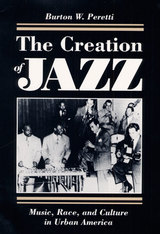 The Creation of Jazz: Music, Race, and Culture in Urban America
Burton W. Peretti
University of Illinois Press, 1992 The story of jazz is more than a history of the music. The racial and cultural dynamics of American cities created the music, life, and business that was jazz. Burton W. Peretti's classic study charts the life of jazz culture from its origins in the jook joints of sharecroppers and the streets and dance halls of 1890s New Orleans to the eve of bebop and World War II. As Perett shows, jazz was the epic story of players who transitioned from childhood spasm bands to Carnegie Hall and worldwide touring and fame. It became the music of the Twenties, a decade of Prohibition, of adolescent discontent, of Harlem pride, and of Americans hoping to preserve cultural traditions in an urban, commercial age. Finally, jazz was where black and white musicians performed together, as uneasy partners, in the big bands of Artie Shaw and Benny Goodman. Drawing on archives and the firsthand testimony of more than seventy musicians and singers (among them Benny Carter, Bud Freeman, Kid Ory, and Mary Lou Williams), The Creation of Jazz offers a comprehensive analysis of the role of early jazz in American social history.
 The Creation of Nikolai Gogol
Donald Fanger
Harvard University Press, 1979 Nikolai Gogol, Russia’s greatest comic writer, is a literary enigma. His masterworks—“The Nose,” “The Overcoat,” The Inspector General, Dead Souls—have attracted contradictory labels over the years, even as the originality of his achievement continues to defy exact explanation.
Donald Fanger begins by considering why this should be so, and goes onto survey what Gogol created, step by step: an extraordinary body of writing, a model for the writer in Russian society, a textual identity that eclipses his scanty biography, and a kind of fiction unique in its time.
Drawing on a wealth of contemporary sources, as well as on everything Gogol wrote, including journal articles, letters, drafts, and variants, Fanger explains Gogol’s eccentric genius and makes clear how it opened the way to the great age of Russian fiction. The method is an innovative mixture of literary history and literary sociology with textual criticism and structural interrogation. What emerges is not only a framework for understanding Gogol’s writing as a whole, but fresh and original interpretation of individual works.
A concluding section, “The Surviving Presence,” probes the fundamental nature of Gogol’s creation to explain its astonishing vitality. In the process a major contribution is made to our understanding of comedy, irony, and satire, and ultimately to the theory of fiction itself.
 The Creation of Psychopharmacology
David Healy
Harvard University Press, 2004 David Healy follows his widely praised study, The Antidepressant Era, with an even more ambitious and dramatic story: the discovery and development of antipsychotic medication. Healy argues that the discovery of chlorpromazine (more generally known as Thorazine) is as significant in the history of medicine as the discovery of penicillin, reminding readers of the worldwide prevalence of insanity within living memory.
But Healy tells not of the triumph of science but of a stream of fruitful accidents, of technological discovery leading neuroscientific research, of fierce professional competition and the backlash of the antipsychiatry movement of the 1960s. A chemical treatment was developed for one purpose, and as long as some theoretical rationale could be found, doctors administered it to the insane patients in their care to see if it would help. Sometimes it did, dramatically. Why these treatments worked, Healy argues provocatively, was, and often still is, a mystery. Nonetheless, such discoveries made and unmade academic reputations and inspired intense politicking for the Nobel Prize.
Once pharmaceutical companies recognized the commercial potential of antipsychotic medications, financial as well as clinical pressures drove the development of ever more aggressively marketed medications. With verve and immense learning, Healy tells a story with surprising implications in a book that will become the leading scholarly work on its compelling subject.
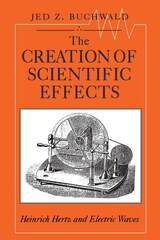 The Creation of Scientific Effects: Heinrich Hertz and Electric Waves
Jed Z. Buchwald
University of Chicago Press, 1994 This book is an attempt to reconstitute the tacit knowledge—the shared, unwritten assumptions, values, and understandings—that shapes the work of science. Jed Z. Buchwald uses as his focus the social and intellectual world of nineteenth-century German physics.
Drawing on the lab notes, published papers, and unpublished manuscripts of Heinrich Hertz, Buchwald recreates Hertz's 1887 invention of a device that produced electromagnetic waves in wires. The invention itself was serendipitous and the device was quickly transformed, but Hertz's early experiments led to major innovations in electrodynamics. Buchwald explores the difficulty Hertz had in reconciling the theories of other physicists, including Hermann von Helmholtz and James Clerk Maxwell, and he considers the complex and often problematic connections between theory and experiment.
In this first detailed scientific biography of Hertz and his scientific community, Buchwald demonstrates that tacit knowledge can be recovered so that we can begin to identify the unspoken rules that govern scientific practice.
 Creation of the Sacred: Tracks of Biology in Early Religions
Walter Burkert
Harvard University Press, 1996 Sacrifice—ranging from the sacrifice of virgins to circumcision to giving up what is most valued—is essential to all religions. Could there be a natural, even biological, reason for these practices? Something that might explain why religions of so many different cultures share so many rituals and concepts? In this extraordinary book, one of the world’s leading authorities on ancient religions explores the possibility of natural religion—a religious sense and practice naturally proceeding from biological imperatives.
Because they lack later refinements, the earliest religions from the Near East, Israel, Greece, and Rome may tell us a great deal about the basic properties and dynamics of religion, and it is to these cultures that Walter Burkert looks for answers. His book takes us on an intellectual adventure that begins some 5,000 years ago and plunges us into a fascinating world of divine signs and omens, offerings and sacrifices, rituals and beliefs unmitigated by modern science and sophistication. Tracing parallels between animal behavior and human religious activity, Burkert suggests natural foundations for sacrifices and rituals of escape, for the concept of guilt and punishment, for the practice of gift exchange and the notion of a cosmic hierarchy, and for the development of a system of signs for negotiating with an uncertain environment. Again and again, he returns to the present to remind us that, for all our worldliness, we are not so far removed from the first Homo religiosus.
A breathtaking journey, as entertaining as it is provocative, Creation of the Sacred brings rich new insight on religious thought past and present and raises serious questions about the ultimate reasons for, and the ultimate meaning of, human religiousness.
 Creation through Evolution: New Perspectives from Thomistic Theology and Philosophy
Nicanor Pier Giorgio Austriaco
Catholic University of America Press, 2025 Written and revised over the past three years, Creation through Evolution contains ten new essays that directly respond to the most common philosophical and theological objections put forward by Catholics who are skeptical about evolutionary theory.
Significantly, the authors use the conceptual framework of St. Thomas Aquinas as a starting point to engage in the faith and science dialogue and they take the Catechism of the Catholic Church as their starting point. The contributors believe that the solutions proposed by these essays to the disputed questions raised by skeptics are novel and robust. The contents of the essays were presented at colloquia at the University of Oxford and Providence College and were revised in response to criticisms and comments raised by the other participants at these meetings.
The chapters were written to respond to Catholic skeptics of Darwinian evolution. They are meant to be read not only by scholars but also by graduate and undergraduate students. Creation through Evolution will be of interest to the informed Catholic reader who is struggling to reconcile evolutionary theory with the claims of the Catechism of the Catholic Church.
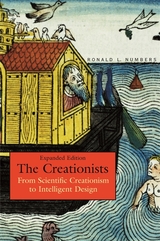 The Creationists: From Scientific Creationism to Intelligent Design, Expanded Edition
Ronald L. Numbers
Harvard University Press, 2006 In light of the embattled status of evolutionary theory, particularly as "intelligent design" makes headway against Darwinism in the schools and in the courts, this now classic account of the roots of creationism assumes new relevance. Expanded and updated to account for the appeal of intelligent design and the global spread of creationism, The Creationists offers a thorough, clear, and balanced overview of the arguments and figures at the heart of the debate.
Praised by both creationists and evolutionists for its comprehensiveness, the book meticulously traces the dramatic shift among Christian fundamentalists from acceptance of the earth's antiquity to the insistence of present-day scientific creationists that most fossils date back to Noah's flood and its aftermath. Focusing especially on the rise of this "flood geology," Ronald L. Numbers chronicles the remarkable resurgence of antievolutionism since the 1960s, as well as the creationist movement's tangled religious roots in the theologies of late-nineteenth- and early-twentieth-century Baptists, Presbyterians, Lutherans, and Adventists, among others. His book offers valuable insight into the origins of various "creation science" think tanks and the people behind them. It also goes a long way toward explaining how creationism, until recently viewed as a "peculiarly American" phenomenon, has quietly but dynamically spread internationally--and found its expression outside Christianity in Judaism and Islam.
Creative Alaska: A Ten-Year Retrospective of Support for Alaska Artists, 2004-2013
Edited by Sven Haakanson and Amy Steffian
University of Alaska Press, 2016 Alaska has long been a nurturing home for artists, with its stunning natural beauty, rich cultural life, and unique communities. In recent years, artists in Alaska have had an additional source of support: the awarding of annual grants to craftsmen, musicians, performers, visual artists, and writers by the Rasmuson Foundation.
Creative Alaska profiles the award winners from 2004 to 2013 in three categories: Distinguished Artists, Fellowships, and Project Awards. Richly illustrated accounts of each of the artists and their work illuminate the challenges and opportunities of the artistic life in Alaska and the powerful impact of the Rasmuson Foundation’s support.
 Creative Belonging: The Qiang and Multiethnic Imagination in Modern China
Yanshuo Zhang
University of Michigan Press, 2026 China is a multicultural country home to fifty-five ethnic minority groups, yet due to linguistic and cultural barriers many of these groups remain understudied or unknown in the West. The Qiang, one of modern China’s officially recognized ethnic minorities, is also China’s longest-standing ethnoracial identity marker that has existed since the earliest recorded history of China. Creative Belonging investigates the formation and evolution of the Qiang as a people, a concept, and a cultural history in China. It further examines how the contemporary Qiang ethnic group interacts strategically with mainstream Chinese society, challenging the historically entrenched hierarchies between the sociocultural “centers” of China and its ethnic “peripheries.” This book is based on years of ethnographic and textual-archival research in the Himalayan regions of southwest China, where the contemporary Qiang group resides. Drawing on a diverse range of official and local political discourses and previously unstudied literary, historiographical, and cinematic works, Yanshuo Zhang illuminates how the Qiang have carved out spaces of “creative belonging” within the parameters of multiculturalism in contemporary China. Rooted in ethnographic and textual-archival research, the book presents original materials produced by Qiang indigenous writers, scholars, artists, grassroots village cultural activists, and entrepreneurs at both the local and the global levels. Creative Belonging invites readers to rethink ethnicity and national belonging in China by centering minority groups’ efforts to expand the meanings and implications of “Chinese culture.”
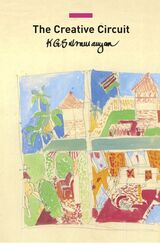 The Creative Circuit
K. G. Subramanyan
Seagull Books, 2024 An exploration of the weight of history and the demand for originality on the contemporary artist, written by one of India’s best-known artists.
What conception does a modern artist or critic have of contemporary art activity? How do modern artists react to their environment and cultural inheritance? And what general norms of achievement can we think of in the highly heterogeneous art scene of today? In Creative Circuit, K. G. Subramanyan, one of India's most celebrated artists, draws upon his considerable experience as a practicing artist and theoretician to engage with these concerns from a modern Indian perspective.
Through a series of five lectures, Subramanyan critically examines key concepts such as modernity, eclecticism, and nostalgia, which have become integral to contemporary art discourse. He provocatively questions the perceptions, illusions, and emotional motivations driving artistic expression in today's heterogeneous art scene, prompting readers to reconsider established norms of achievement in the context of evolving artistic practices. With over one hundred color illustrations complementing Subramanyan's insightful discourse, Creative Circuit offers a visually engaging exploration of the interplay between tradition and innovation in contemporary art.
Subramanyan played a pivotal role in shaping India’s artistic identity after Independence. Mani-da, as he was fondly called, seamlessly blended elements of modernism with folk expression in his works, spanning paintings, murals, sculptures, prints, set designs, and toys. Beyond his visual artistry, his writings have laid a solid foundation for understanding the demands of art on the individual. In the year of his centenary, Seagull is proud to publish his writings in special new editions.
Creative Communities: Regional Inclusion and the Arts
Edited by Janet McDonald and Robert Mason
Intellect Books, 2015 This is the first major collection to reimagine and analyze the role of the creative arts in building resilient and inclusive regional communities. Bringing together Australia’s leading theorists in the creative industries, as well as case studies from practitioners working in the creative and performing arts and new material from targeted research projects, the book reconceptualizes the very meaning of regionalism and the position—and potential—of creative spaces in nonmetropolitan centers.
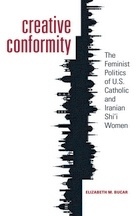 Creative Conformity: The Feminist Politics of U.S. Catholic and Iranian Shi'i Women
Elizabeth M. Bucar
Georgetown University Press, 2011 Much feminist scholarship has viewed Catholicism and Shi'i Islam as two religious traditions that, historically, have greeted feminist claims with skepticism or outright hostility. Creative Conformity demonstrates how certain liberal secular assumptions about these religious traditions are only partly correct and, more importantly, misleading. In this highly original study, Elizabeth Bucar compares the feminist politics of eleven US Catholic and Iranian Shi'i women and explores how these women contest and affirm clerical mandates in order to expand their roles within their religious communities and national politics. Using scriptural analysis and personal interviews, Creative Conformity demonstrates how women contribute to the production of ethical knowledge within both religious communities in order to expand what counts as feminist action, and to explain how religious authority creates an unintended diversity of moral belief and action. Bucar finds that the practices of Catholic and Shi‘a women are not only determined by but also contribute to the ethical and political landscape in their respective religious communities. She challenges the orthodoxies of liberal feminist politics and, ultimately, strengthens feminism as a scholarly endeavor.
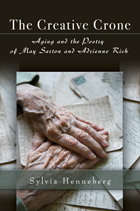 The Creative Crone: Aging and the Poetry of May Sarton and Adrienne Rich
Sylvia Henneberg
University of Missouri Press, 2010 Too often the elderly suffer “death by invisibility” long before their physical demise, but what can we learn from creative individuals when they grow old? This book examines the work of two major contemporary women poets to show how they confront aging in a deliberate and constructive way. Sylvia Henneberg reveals how May Sarton and Adrienne Rich have critically evaluated and embraced their roles as elder poets and “creative crones”—and in doing so offer a powerful resistance to age discrimination. The Creative Crone highlights new dimensions in the works of both writers: one deeply engaged with aging but often overlooked by scholars, the other a prominent poet and feminist but not generally thought of in the context of aging. Henneberg shows how these writers offer radically different but richly complementary strategies for breaking the silence surrounding age. Rich provides an approach to aging so strongly intertwined with other political issues that its complexity may keep us from immediately identifying age as one of her chief concerns. On the other hand, Sarton’s direct treatment of aging sensitizes us to its importance and helps us see its significance in such writings as Rich’s. Meanwhile, Rich’s efforts to politicize age create stimulating contexts for Sarton’s work. Henneberg explores elements of these writers’ individual poems that develop themes of aging, including imagery and symbol, the construction of a persona, and the uses of rhythms to reinforce the themes. She also includes analyses of their fiction and nonfiction works and draws ideas from age studies by scholars such as Margaret Morganroth Gullette, Kathleen Woodward, and Thomas Cole. The lasting impression of these poets is that any evaluation of their writings—and any serious study of personal or political identity —will benefit from including a critique of aging. Together, Sarton and Rich establish a literary symbiosis that suggests strategies for reassessing and radicalizing our notions about aging, senescence, and literature. This new perspective on their work shows that creative and crone are far from mutually exclusive; considered in tandem, they renew the discourse on late-life creativity.
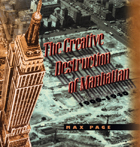 The Creative Destruction of Manhattan, 1900-1940
Max Page
University of Chicago Press, 1999 Winner of the 2001 Spiro Kostof Book Award from the Society of Architectural Historians.
"It'll be a great place if they ever finish it," O. Henry wrote about New York City. This laconic remark captures the relentlessly transitory character of New York, and it points toward Max Page's synthetic perspective. Against the prevailing motif of a naturally expanding metropolis, Page argues that the early-twentieth-century city was dominated by the politics of destruction and rebuilding that became the hallmark of modern urbanism.
The oxymoron "creative destruction" suggests the tensions that are at the heart of urban life: between stability and change, between particular places and undifferentiated spaces, between market forces and planning controls, and between the "natural" and "unnatural" in city growth. Page investigates these cultural counterweights through case studies of Manhattan's development, with depictions ranging from private real estate development along Fifth Avenue to Jacob Riis's slum clearance efforts on the Lower East Side, from the elimination of street trees to the efforts to save City Hall from demolition.
In these examples some New Yorkers celebrate planning by destruction or marvel at the domestication of the natural environment, while others decry the devastation of their homes and lament the passing of the city's architectural heritage. A central question in each case is the role of the past in the shaping of collective memory—which buildings are preserved? which trees are cut down? which fragments are enshrined in museums? Contrary to the popular sense of New York as an ahistorical city, the past—as recalled by powerful citizens—was, in fact, at the heart of defining how the city would be built.
Beautifully illustrated and written in clear, engaging prose, The Creative Destruction of Manhattan offers a new way of viewing the development of the American city.
"An excellent, multifaceted analysis of the process of urban development-not the inevitability of development but the choices individuals, organizations, and developers made that transformed Manhattan. The politics of place was, Max Page convincingly argues, an ongoing battle to define and thereby control the evolving shape of the city."—David Schuyler, author of Apostle of Taste: Andrew Jackson Downing 1815-1852
"Max Page transcends the usual dichotomy between those who glorify destruction for the sake of change and those who would avoid both at all cost. The sizeable borderland between architecture and preservation reveals new dimensions about science and history, innovation and memory, the cities that have been, and those yet to come."—Gwendolyn Wright, author of The Politics of Design in French Colonial Urbanism
"A sober, humane explanation of how and why New York City became a place of continuous rebuilding. . . . For real or armchair New Yorkers, the whole package is a treat."—Kirkus Reviews
 Creative Industries: Contracts between Art and Commerce
Richard E. Caves
Harvard University Press, 2000 This book explores the organization of creative industries, including the visual and performing arts, movies, theater, sound recordings, and book publishing. In each, artistic inputs are combined with other, "humdrum" inputs. But the deals that bring these inputs together are inherently problematic: artists have strong views; the muse whispers erratically; and consumer approval remains highly uncertain until all costs have been incurred.
To assemble, distribute, and store creative products, business firms are organized, some employing creative personnel on long-term contracts, others dealing with them as outside contractors; agents emerge as intermediaries, negotiating contracts and matching creative talents with employers. Firms in creative industries are either small-scale pickers that concentrate on the selection and development of new creative talents or large-scale promoters that undertake the packaging and widespread distribution of established creative goods. In some activities, such as the performing arts, creative ventures facing high fixed costs turn to nonprofit firms.
To explain the logic of these arrangements, the author draws on the analytical resources of industrial economics and the theory of contracts. He addresses the winner-take-all character of many creative activities that brings wealth and renown to some artists while dooming others to frustration; why the "option" form of contract is so prevalent; and why even savvy producers get sucked into making "ten-ton turkeys," such as Heaven's Gate. However different their superficial organization and aesthetic properties, whether high or low in cultural ranking, creative industries share the same underlying organizational logic.
 Creative Infrastructures: Artists, Money and Entrepreneurial Action
Linda Essig
Intellect Books, 2022 Essays on the relationship between artists and entrepreneurship.
As in sports, business, and other sectors, the top 1% of artists have disproportionately influenced public expectations for what it means to be successful. In Creative Infrastructures, Linda Essig takes an unconventional approach and looks at the quotidian artist—and at what they do, not what they make. All too often, artists who are attentive to the business side of their creative practice are accused of selling out. But for many working artists, that attention to business is what enables them not just to survive but to thrive. When artists follow their mission, Essig contends that they don’t sell out, they spiral up by keeping mission at the forefront. Through illustrative case studies from culturally and racially diverse communities, Essig examines the relationships between art, innovation, entrepreneurship, and money while offering a theory for arts entrepreneurship that places more emphasis on means than ends.
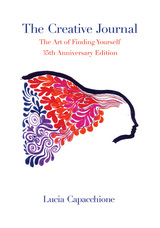 The Creative Journal: The Art of Finding Yourself: 35th Anniversary Edition
Lucia Capacchione
Ohio University Press, 2015 Originally released in 1980, Lucia Capacchione’s The Creative Journal has become a classic in the fields of art therapy, memoir and creative writing, art journaling, and creativity development. Using more than fifty prompts and vibrantly illustrated examples, Capacchione guides readers through drawing and writing exercises to release feelings, explore dreams, and solve problems creatively. Topics include emotional expression, healing the past, exploring relationships, self-inventory, health, life goals, and more. The Creative Journal introduced the world to Capacchione’s groundbreaking technique of writing with the nondominant hand for brain balancing, finding innate wisdom, and developing creative potential. This thirty-fifth anniversary edition includes a new introduction and an appendix listing the many venues that have adopted Capacchione’s methods, including public schools, recovery programs, illness support groups, spiritual retreats, and prisons. The Creative Journal has become a mainstay text for college courses in psychology, art therapy, and creative writing. It has proven useful for journal keepers, counselors, and teachers. Through doodles, scribbles, written inner dialogues, and letters, people of all ages have discovered vast inner resources.
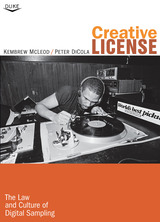 Creative License: The Law and Culture of Digital Sampling
Kembrew McLeod and Peter DiCola
Duke University Press, 2011 How did the Depression-era folk-song collector Alan Lomax end up with a songwriting credit on Jay-Z’s song “Takeover”? Why doesn’t Clyde Stubblefield, the primary drummer on James Brown recordings from the late 1960s such as “Funky Drummer” and “Cold Sweat,” get paid for other musicians’ frequent use of the beats he performed on those songs? The music industry’s approach to digital sampling—the act of incorporating snippets of existing recordings into new ones—holds the answers. Exploring the complexities and contradictions in how samples are licensed, Kembrew McLeod and Peter DiCola interviewed more than 100 musicians, managers, lawyers, industry professionals, journalists, and scholars. Based on those interviews, Creative License puts digital sampling into historical, cultural, and legal context. It describes hip-hop during its sample-heavy golden age in the 1980s and early 1990s, the lawsuits that shaped U.S. copyright law on sampling, and the labyrinthine licensing process that musicians must now navigate. The authors argue that the current system for licensing samples is inefficient and limits creativity. For instance, by estimating the present-day licensing fees for the Beastie Boys’ Paul’s Boutique (1989) and Public Enemy’s Fear of a Black Planet (1990), two albums from hip-hop’s golden age, the authors show that neither album could be released commercially today. Observing that the same dynamics that create problems for remixers now reverberate throughout all culture industries, the authors conclude by examining ideas for reform. Interviewees include David Byrne, Cee Lo Green, George Clinton, De La Soul, DJ Premier, DJ Qbert, Eclectic Method, El-P, Girl Talk, Matmos, Mix Master Mike, Negativland, Public Enemy, RZA, Clyde Stubblefield, T.S. Monk.
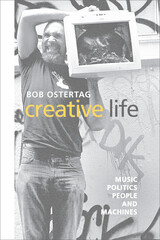 Creative Life: Music, Politics, People, and Machines
Bob Ostertag
University of Illinois Press, 2008 In this eloquent and passionate volume, Bob Ostertag explores the common ground and points of friction among music, creativity, politics, culture, and technology. In terrain ranging from the guerrilla underground in El Salvador's civil war to the drag queen underground in San Francisco and New York, these essays combine journalism and autobiography to explore fundamental questions of what art is and what role it can occupy in a violent and fragmented world, a world in which daily events compromise the universality toward which art strives. Drawing on his intimate engagement with political conflict in Latin America and the Balkans, Ostertag identifies an art of "insurgent politics" that struggles to expand the parameters of the physical and social world. He also discusses his innovative collaborations with major modern performers, filmmakers, and artists around the world. Part memoir, part journalism, and part aesthetic manifesto, Creative Life is a dazzling set of writings from a musical artist who has worked on the cutting edge of new music for thirty years.
The Creative Mind in Coleridge’s Poetry
Kathleen M. Wheeler
Harvard University Press, 1981 Five of Coleridge's major poems are given fresh scrutiny in this arresting study. One of its unusual features is the attention given the Preface to “Kubla Khan,” the Gloss to The Ancient Mariner, and other prose accompaniments to the poems usually dismissed as extraneous. Devices such as these, the author argues, are strategically employed by Coleridge in an effort to engage the reader in a fully imaginative response.
Kathleen Wheeler elucidates the texts in terms of aesthetic experience and also in terms of the philosophical principles that inform them, showing how Coleridge's theories of mind and imagination function within the poems and shape their design. A subtle and gifted reader of poetry, she enriches our understanding of poems we thought we knew well, and provides insights along the way into the creative process.
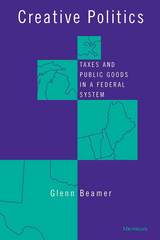 Creative Politics: Taxes and Public Goods in a Federal System
Glenn Beamer
University of Michigan Press, 2000 State legislators are constantly making tradeoffs between changing taxes and providing public services. Not only must they reconcile their own policy preferences with the preferences of their constituents, but they must consider the impact of actions taken by both the federal government and competing states. Glenn Beamer uses a series of in-depth case studies in eleven states to show how legislators made decisions dealing with taxation, economic development, education financing, and Medicaid.
Beamer identifies six factors that influence legislators' decisions: accountability, dependability, equity, obscurability, and horizontal and vertical transferability. Within the context created by citizen demands, intergovernmental politics, policy histories, court interventions, and state constitutions, this study analyzes how legislators employ these principles to develop and enact policies.
In addition to modeling state politics within the context of federalism, Creative Politics, reflecting the author's extensive interviews with legislators, is novel in its focus on politicians' views about public services, the strategies to finance them, and efforts to develop and maintain political support for them.
This book will be of interest to students and scholars of political science, economics, and public administration, and, more specifically, of federalism, state politics and policy, and legislative decision-making.
Glenn Beamer is Robert Wood Johnson Scholar in Health Policy Research, University of California, Berkeley, and Assistant Professor of Government, University of Virginia.
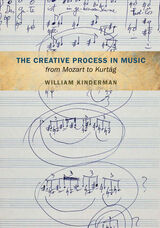 The Creative Process in Music from Mozart to Kurtag
William Kinderman
University of Illinois Press, 2012 Great music arouses wonder: how did the composer create such an original work of art? What was the artist's inspiration, and how did that idea become a reality? Cultural products inevitably arise from a context, a submerged landscape that is often not easily accessible. To bring such things to light, studies of the creative process find their cutting edge by probing beyond the surface, opening new perspectives on the apparently familiar. In this intriguing study, William Kinderman opens the door to the composer's workshop, investigating not just the final outcome but the process of creative endeavor in music. Focusing on the stages of composition, Kinderman maintains that the most rigorous basis for the study of artistic creativity comes not from anecdotal or autobiographical reports, but from original handwritten sketches, drafts, revised manuscripts, and corrected proof sheets. He explores works of major composers from the eighteenth century to the present, from Mozart's piano music and Beethoven's Piano Trio in F to Kurtág's Kafka Fragments and Hommage à R. Sch. Other chapters examine Robert Schumann's Fantasie in C, Mahler's Fifth Symphony, and Bartók's Dance Suite. Kinderman's analysis takes the form of "genetic criticism," tracing the genesis of these cultural works, exploring their aesthetic meaning, and mapping the continuity of a central European tradition that has displayed remarkable vitality for over two centuries, as accumulated legacies assumed importance for later generations. Revealing the diversity of sources, rejected passages and movements, fragmentary unfinished works, and aborted projects that were absorbed into finished compositions, The Creative Process in Music from Mozart to Kurtág illustrates the wealth of insight that can be gained through studying the creative process.
 Creative Spaces: Urban Culture and Marginality in Latin America
Edited by Niall Geraghty and Adriana Laura Massidda
University of London Press, 2019 Creative Spaces: Urban Culture and Marginality is an interdisciplinary exploration of the different ways in which marginal urban spaces have become privileged locations for creativity in Latin America. The essays within the collection reassess dominant theoretical notions of ‘marginality’ in the region and argue that, in contemporary society, it invariably allows for (if not leads to) the production of the new. While Latin American cities have, since their foundation, always included marginal spaces (due, for example, to the segregation of indigenous groups), the massive expansion of informal housing constructed on occupied land in the second half of the twentieth century have brought them into the collective imaginary like never before. Originally viewed as spaces of deprivation, violence, and dangerous alterity, the urban margins were later romanticized as spaces of opportunity and popular empowerment. Instead, this volume analyses the production of new art forms, political organizations and subjectivities emerging from the urban margins in Latin America, neither condemning nor idealizing the effects they produce. To account for the complex nature of contemporary urban marginality, the volume draws on research from a wide spectrum of disciplines, ranging from cultural and urban studies to architecture and sociology. Thus the collection analyzes how these different conceptions of marginal spaces work together and contribute to the imagined and material reality of the wider city.
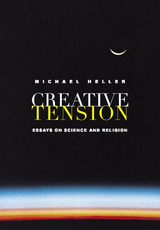 Creative Tension: Essays On Science & Religion
Michael Heller
Templeton Press, 2003 The voice of a renowned professor of philosophy in Poland, who is also a Roman Catholic priest, is introduced to the United States in this collection of his provocative essays on the interplay of science and religion. Michael Heller progressively outlines systematic steps that might lead to a peaceful coexistence of these traditionally separate fields of study. Some essays have their roots in the author's work in physics and cosmology, while others present his theories on the language of God, creation, and transcendence, inspired by his work in the applications of so-called noncommutative geometry, an emerging field of study. The book is organized into four sections, each preceded by a brief introduction explaining the order of the essays and their internal logic. - Part one deals with methodology, evaluate the theological interpretation of scientific theories, and proposes a program for a "theology of science."
- Part two looks at the interaction of science and religion from a historical perspective. Topics include the evolution of ideas connected with the place of man in the Universe and the evolution of matter, among others.
- Part three concentrates on the "creation and science" quandary, including the big bang theory, the role of probability and chance in science, and their impact on theological questions.
- Part four looks for vestiges of transcendence in contemporary science.
Creative Tension joins the Templeton library of resources contributing to the growing global dialogue on science and religion.
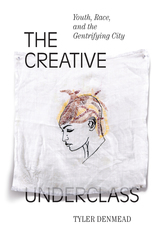 The Creative Underclass: Youth, Race, and the Gentrifying City
Tyler Denmead
Duke University Press, 2019 As an undergraduate at Brown University, Tyler Denmead founded New Urban Arts, a nationally recognized arts and humanities program primarily for young people of color in Providence, Rhode Island. Along with its positive impact, New Urban Arts, under his leadership, became entangled in Providence's urban renewal efforts that harmed the very youth it served. As in many deindustrialized cities, Providence's leaders viewed arts, culture, and creativity as a means to drive property development and attract young, educated, and affluent white people, such as Denmead, to economically and culturally kick-start the city. In The Creative Underclass, Denmead critically examines how New Urban Arts and similar organizations can become enmeshed in circumstances where young people, including himself, become visible once the city can leverage their creativity to benefit economic revitalization and gentrification. He points to the creative cultural practices that young people of color from low-income communities use to resist their subjectification as members of an underclass, which, along with redistributive economic policies, can be deployed as an effective means with which to both oppose gentrification and better serve the youth who have become emblematic of urban creativity.
Creative Understanding
Roberto Torretti
University of Chicago Press, 1990 "A pleasure to read. Gracefully written by a scholar well grounded in the relevant philosophical, historical, and technical background. . . . a helpfully clarifying review and analysis of some issues of importance to recent philosophy of science and a source of some illuminating insights."—Burke Townsend, Philosophy of Science
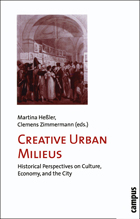 Creative Urban Milieus: Historical Perspectives on Culture, Economy, and the City
Edited by Martina Heßler and Clemens Zimmermann
Campus Verlag, 2008 Fashion Week in Paris and London, the Venice Biennale, and the nineteenth-century Viennese scientific community may seem wildly disparate, but each represent the cultural possibilities of an international metropolis. Creative Urban Milieus is an interdisciplinary examination of the historical relationship between culture and the economy in such cities as Berlin, New York, Helsinki, London, Venice, and many others. This groundbreaking work investigates the contributions of the creative class to the urban renaissance, contextualized by historical examples from the eighteenth century to the present day.
Skeptical of the current euphoria surrounding the commercialization of culture, a distinguished group of contributors apply a comparative and historical perspective to probe how creative works have affected the global economy. Drawing on lessons from urban planning, art history, and cultural spectacles alike, Creative Urban Milieus will change the way we think about the symbiotic relationship between cities and innovation.
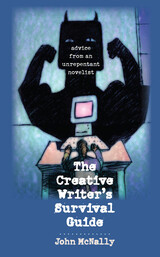 The Creative Writer's Survival Guide: Advice from an Unrepentant Novelist
John McNally
University of Iowa Press, 2010 Beginning with “The Writer’s Wonderland—Or: A Warning” and ending with “You’ve Published a Book—Now What?” The Creative Writer’s Survival Guide is a must-read for creative-writing students and teachers, conference participants, and aspiring writers of every stamp. Directed primarily at fiction writers but suitable for writers of all genres, John McNally’s guide is a comprehensive, take-no-prisoners blunt, highly idiosyncratic, and delightfully subjective take on the writing life. McNally has earned the right to dispense advice on this subject. He has published three novels, two collections of short fiction, and hundreds of individual stories and essays. He has edited six anthologies and worked with editors at university presses, commercial houses, and small presses. He has earned three degrees, including an MFA from the Iowa Writers’ Workshop, and taught writing to thousands of students at nine different universities. But he has received far more rejections than acceptances, has endured years of underpaid adjunct work, and is presently hard at work on a novel for which he has no guarantee of publication. In other words, he’s been at the writing game long enough to rack up plenty of the highs and lows that translate into an invaluable guide for anyone who wants to become a writer or anyone who is already a writer but doesn’t know how to take the next step toward the writing life. In the sections The Decision to Become a Writer, Education and the Writer, Getting Published, Publicity, Employment for Writers, and The Writer’s Life, McNally wrestles with writing degrees and graduate programs, the nuts and bolts of agents and query letters and critics, book signings and other ways to promote your book, alcohol and other home remedies, and jobs for writers from adjunct to tenure-track. Chapters such as “What Have You Ever Done That’s Worth Writing About?” “Can Writing Be Taught?” “Rejection: Putting It in Perspective,” “Writing as a Competitive Sport,” “Seven Types of MLA Interview Committees,” “Money and the Writer,” and the all-important “Talking about Writing vs. Writing” cover a vast range of writerly topics from learning your craft to making a living at it. McNally acts as the writer’s friendly drill sergeant, relentlessly honest but bracingly cheerful as he issues his curmudgeonly marching orders. Alternately cranky and philosophical, full of to-the-point anecdotes and honest advice instead of wonkish facts and figures, The Creative Writer’s Survival Guide is a snarky, truthful, and immensely helpful map to being a writer in today’s complex world.
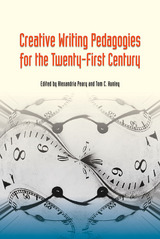 Creative Writing Pedagogies for the Twenty-First Century
Edited by Alexandria Peary and Tom C. Hunley
Southern Illinois University Press, 2015 The creative writing workshop: beloved by some, dreaded by others, and ubiquitous in writing programs across the nation. For decades, the workshop has been entrenched as the primary pedagogy of creative writing. While the field of creative writing studies has sometimes myopically focused on this single method, the related discipline of composition studies has made use of numerous pedagogical models. In Creative Writing Pedagogies for the Twenty-First Century, editors Alexandria Peary and Tom C. Hunley gather experts from both creative writing and composition studies to offer innovative alternatives to the traditional creative writing workshop.
Drawing primarily from the field of composition studies—a discipline rich with a wide range of established pedagogies—the contributors in this volume build on previous models to present fresh and inventive methods for the teaching of creative writing. Each chapter offers both a theoretical and a historical background for its respective pedagogical ideas, as well as practical applications for use in the classroom. This myriad of methods can be used either as a supplement to the customary workshop model or as stand-alone roadmaps to engage and reinvigorate the creative process for both students and teachers alike.
A fresh and inspiring collection of teaching methods, Creative Writing Pedagogies for the Twenty-First Century combines both conventional and cutting-edge techniques to expand the pedagogical possibilities in creative writing studies.
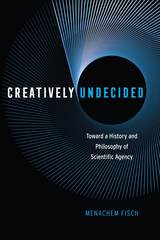 Creatively Undecided: Toward a History and Philosophy of Scientific Agency
Menachem Fisch
University of Chicago Press, 2017 Thomas Kuhn and Karl Popper are believed by many who study science to be the two key thinkers of the twentieth century. Each addressed the question of how scientific theories change, but they came to different conclusions.
By turning our attention to ambiguity and indecision in science, Menachem Fisch, in Creatively Undecided, offers a new way to look at how scientific understandings change. Following Kuhn, Fisch argues that scientific practice depends on the framework in which it is conducted, but he also shows that those frameworks can be understood as the possible outcomes of the rational deliberation that Popper viewed as central to theory change. How can a scientist subject her standards to rational appraisal if that very act requires the use of those standards? The way out, Fisch argues, is by looking at the incentives scientists have to create alternative frameworks in the first place. Fisch argues that while science can only be transformed from within, by people who have standing in the field, criticism from the outside is essential. We may not be able to be sufficiently self-critical on our own, but trusted criticism from outside, even if resisted, can begin to change our perspective—at which point transformative self-criticism becomes a real option.
Creativity
Nancy Falciani-White
American Library Association, 2021
 Creativity and Academic Activism: Instituting Cultural Studies
Meaghan Morris and Mette Hjort, eds.
Duke University Press This work explores in detail how innovative academic activism can transform our everyday workplaces in contexts of considerable adversity. Personal essays by prominent scholars provide critical reflections on their institution-building triumphs and setbacks across a range of cultural institutions. Often adopting narrative approaches, the contributors examine how effective programs and activities are built in varying local and national contexts within a common global regime of university management policy. Here they share experiences based on developing new undergraduate degrees, setting up research centers and postgraduate schools, editing field-shaping book series and journals, establishing international artist-in-residence programs, and founding social activist networks. This book also investigates the impact of managerialism, marketization, and globalization on university cultures, asking what critical cultural scholarship can do in such increasingly adversarial conditions. Experiments in Asian universities are emphasized as exemplary of what can or could be achieved in other contexts of globalized university policy. Contributors. Tony Bennett, Stephen Ching-Kiu Chan, Kuan-Hsing Chen, Douglas Crimp, Dai Jinhua, John Nguyet Erni, Mette Hjort, Josephine Ho, Koichi Iwabuchi, Meaghan Morris, Tejaswini Niranjana, Wang Xiaoming, Audrey Yue
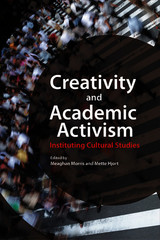 Creativity and Academic Activism: Instituting Cultural Studies
Meaghan Morris and Mette Hjort, eds.
Duke University Press This work explores in detail how innovative academic activism can transform our everyday workplaces in contexts of considerable adversity. Personal essays by prominent scholars provide critical reflections on their institution-building triumphs and setbacks across a range of cultural institutions. Often adopting narrative approaches, the contributors examine how effective programs and activities are built in varying local and national contexts within a common global regime of university management policy. Here they share experiences based on developing new undergraduate degrees, setting up research centers and postgraduate schools, editing field-shaping book series and journals, establishing international artist-in-residence programs, and founding social activist networks. This book also investigates the impact of managerialism, marketization, and globalization on university cultures, asking what critical cultural scholarship can do in such increasingly adversarial conditions. Experiments in Asian universities are emphasized as exemplary of what can or could be achieved in other contexts of globalized university policy. Contributors. Tony Bennett, Stephen Ching-Kiu Chan, Kuan-Hsing Chen, Douglas Crimp, Dai Jinhua, John Nguyet Erni, Mette Hjort, Josephine Ho, Koichi Iwabuchi, Meaghan Morris, Tejaswini Niranjana, Wang Xiaoming, Audrey Yue
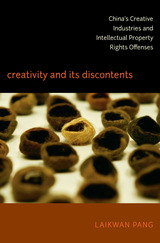 Creativity and Its Discontents: China's Creative Industries and Intellectual Property Rights Offenses
Laikwan Pang
Duke University Press, 2012 Creativity and Its Discontents is a sharp critique of the intellectual property rights (IPR)–based creative economy, particularly as it is embraced or ignored in China. Laikwan Pang argues that the creative economy—in which creativity is an individual asset to be commodified and protected as property—is an intensification of Western modernity and capitalism at odds with key aspects of Chinese culture. Nevertheless, globalization has compelled China to undertake endeavors involving intellectual property rights. Pang examines China’s IPR-compliant industries, as well as its numerous copyright violations. She describes how China promotes intellectual property rights in projects such as the development of cultural tourism in the World Heritage city of Lijiang, the transformation of Hong Kong cinema, and the cultural branding of Beijing. Meanwhile, copyright infringement proliferates, angering international trade organizations. Pang argues that piracy and counterfeiting embody the intimate connection between creativity and copying. She points to the lack of copyright protections for Japanese anime as the motor of China's dynamic anime culture. Theorizing the relationship between knockoffs and appropriation art, Pang offers an incisive interpretation of China’s flourishing art scene. Creativity and Its Discontents is a refreshing rejoinder to uncritical celebrations of the creative economy.
Creativity and Tradition: Studies in Medieval Rabbinic Scholarship, Literature and Thought
Israel Ta-Shma
Harvard University Press, 2006 This volume brings together sixteen of Professor Israel M. Ta-Shma’s outstanding studies that were originally written in English, four of which are being published here for the first time. Set in Germany, northern France, Italy, Poland, and Spain, these essays focus on leading rabbinic scholars and their writings, as well as important issues of Jewish intellectual history, such as the nature of halakhah and aggadah; kabbalah and spirituality; childhood; and popular religion. The richness of these studies is seen not only in their meticulous and innovative textual scholarship but also in the fascinating insights and unanticipated connections that typify all of Ta-Shma’s published work.
 The Creativity Code: Art and Innovation in the Age of AI
Marcus du Sautoy
Harvard University Press, 2020 “A brilliant travel guide to the coming world of AI.”
—Jeanette Winterson
What does it mean to be creative? Can creativity be trained? Is it uniquely human, or could AI be considered creative?
Mathematical genius and exuberant polymath Marcus du Sautoy plunges us into the world of artificial intelligence and algorithmic learning in this essential guide to the future of creativity. He considers the role of pattern and imitation in the creative process and sets out to investigate the programs and programmers—from Deep Mind and the Flow Machine to Botnik and WHIM—who are seeking to rival or surpass human innovation in gaming, music, art, and language. A thrilling tour of the landscape of invention, The Creativity Code explores the new face of creativity and the mysteries of the human code.
“As machines outsmart us in ever more domains, we can at least comfort ourselves that one area will remain sacrosanct and uncomputable: human creativity. Or can we?…In his fascinating exploration of the nature of creativity, Marcus du Sautoy questions many of those assumptions.”
—Financial Times
“Fascinating…If all the experiences, hopes, dreams, visions, lusts, loves, and hatreds that shape the human imagination amount to nothing more than a ‘code,’ then sooner or later a machine will crack it. Indeed, du Sautoy assembles an eclectic array of evidence to show how that’s happening even now.”
—The Times
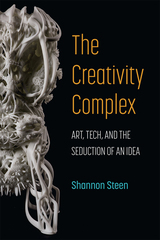 The Creativity Complex: Art, Tech, and the Seduction of an Idea
Shannon Steen
University of Michigan Press, 2023 “Creativity” is a word that excites and dazzles us. It promises brilliance and achievement, a shield against conformity, a channel for innovation across the arts, sciences, technology, and education, and a mechanism for economic revival and personal success. But it has not always evoked these ideas. The Creativity Complex traces the history of how creativity has come to mean the things it now does, and explores the ethical implications of how we use this term today for both the arts and for the social world more broadly. Richly researched, the book explores how creativity has been invoked in arenas as varied as Enlightenment debates over the nature of cognition, Victorian-era intelligence research, the Cold War technology race, contemporary K-12 education, and even modern electoral politics. Ultimately, The Creativity Complex asks how our ideas about creativity are bound up with those of self-fulfillment, responsibility, and the individual, and how these might seduce us into joining a worldview and even a set of social imperatives that we might otherwise find troubling.
Creativity, Culture and Commerce: Producing Australian Children’s Television with Public Value
Anna Potter
Intellect Books, 2015 Since the late 1970s, Australia has nurtured a creative and resilient children’s television production sector with a global reputation for excellence. Providing a systematic analysis of the creative, economic, regulatory, and technological factors that shape the production of contemporary Australian children’s television for digital regimes, Creativity, Culture and Commerce charts the complex new settlements in children’s television that developed from 2001 to 2014 and describes the challenges inherent in producing culturally specific screen content for global markets. It also calls for new public debate around the provision of high-quality screen content for children, arguing that the creation of public value must sit at the center of these discussions.
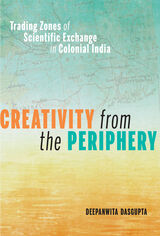 Creativity from the Periphery: Trading Zones of Scientific Exchange in Colonial India
Deepanwita Dasgupta
University of Pittsburgh Press, 2021 Science is usually known by its most successful figures and resource-rich institutions. In stark contrast, Creativity from the Periphery draws our attention to unknown figures in science—those who remain marginalized, even neglected, within its practices. Researchers in early twentieth-century colonial India, for example, have made significant contributions to the stock of scientific knowledge and have provided science with new breakthroughs and novel ideas, but to little acclaim. As Deepanwita Dasgupta argues, sometimes the best ideas in science are born from difficult and resource-poor conditions. In this study, she turns our attention to these peripheral actors, shedding new light on how scientific creativity operates in lesser-known, marginalized contexts, and how the work of self-trained researchers, though largely ignored , has contributed to important conceptual shifts. Her book presents a new philosophical framework for understanding this peripheral creativity in science through the lens of trading zones—where knowledge is exchanged between two unequal communities—and explores the implications for the future diversity of transnational science.
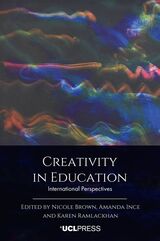 Creativity in Education: International Perspectives
Edited by Nicole Brown, Amanda Ince, and Karen Ramlackhan
University College London, 2024 An international exploration of creativity as a socio-cultural phenomenon, with practical insights for application in educational settings.
Creativity has become a buzzword across all disciplines in education, from early years through to higher education. Although the meaning of creativity might depend on its cultural context, it is impossible to ignore the applicability and relevance of creativity as an educational tool, philosophical framework, and pedagogical approach.
This collection explores the case studies of ground-breaking work undertaken internationally to support and develop learners with, and for, creativity. The chapters are based on empirical research, which provides the scholarly framework for reconceptualizing creativity in the country-specific context of each study. Each case study is supplemented by critical, reflective, and analytical responses from contributors from different countries, which provide a dialogue for educators into how methods and approaches from a certain context can be transferred, translated, and contextually mediated for different environments.
Creativity in Education thus provides practical insights for application in a wide range of educational settings, as well as philosophical approaches to teacher education, leadership for learning, and creativity as a universal phenomenon.
Creativity in the Classroom: Case Studies in Using the Arts in Teaching and Learning in Higher Education
Edited by Paul McIntosh and Digby Warren
Intellect Books, 2013 This volume contests the current higher educational paradigm of using objectives and outcomes as ways to measure learning. Instead, the contributors propose approaches to learning that draw upon the creative arts and humanities, including cinema, literature, dance, drama, and visual art. Such approaches, they argue, can foster deeper learning, even in subjects not normally associated with these forms of creativity. Drawing on their own practical experience in developing new educational methods, the contributors embody a refreshing alternative perspective on teaching, learning, and assessment.
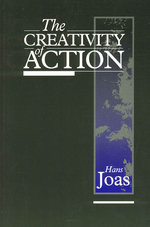 The Creativity of Action
Hans Joas
University of Chicago Press, 1996 Hans Joas is one of the foremost social theorists in Germany today. Based on Joas’s celebrated study of George Herbert Mead, this work reevaluates the contribution of American pragmatism and European philosophical anthropology to theories of action in the social sciences. Joas also establishes direct ties between Mead’s work and approaches drawn from German traditions of philosophical anthropology.
Joas argues for adding a third model of action to the two predominant models of rational and normative action—one that emphasizes the creative character of human action. This model encompasses the other two, allowing for a more comprehensive theory of action. Joas elaborates some implications of his model for theories of social movements and social change and for the status of action theory in sociology in the face of competition from theories advanced by Luhmann and Habermas.
The problem of action is of crucial importance in both sociology and philosophy, and this book—already widely debated in Germany—will add fresh impetus to the lively discussions current in the English-speaking world.
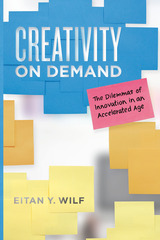 Creativity on Demand: The Dilemmas of Innovation in an Accelerated Age
Eitan Y. Wilf
University of Chicago Press, 2019 Business consultants everywhere preach the benefits of innovation—and promise to help businesses reap them. A trendy industry, this type of consulting generates courses, workshops, books, and conferences that all claim to hold the secrets of success. But what promises does the notion of innovation entail? What is it about the ideology and practice of business innovation that has made these firms so successful at selling their services to everyone from small start-ups to Fortune 500 companies? And most important, what does business innovation actually mean for work and our economy today?
In Creativity on Demand, cultural anthropologist Eitan Wilf seeks to answer these questions by returning to the fundamental and pervasive expectation of continual innovation. Wilf focuses a keen eye on how our obsession with ceaseless innovation stems from the long-standing value of acceleration in capitalist society. Based on ethnographic work with innovation consultants in the United States, he reveals, among other surprises, how routine the culture of innovation actually is. Procedures and strategies are repeated in a formulaic way, and imagination is harnessed as a new professional ethos, not always to generate genuinely new thinking, but to produce predictable signs of continual change. A masterful look at the contradictions of our capitalist age, Creativity on Demand is a model for the anthropological study of our cultures of work.
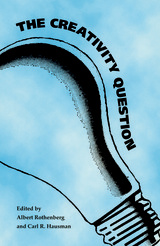 The Creativity Question
Albert Rothenberg and Carl Hausman, eds.
Duke University Press, 1976 Albert Rothenberg, a psychiatrist, and Carl R. Hausman, a philosopher, have prepared a truly comprehensive interdisciplinary book of readings on creativity. This group of selections from the works of writers in psychiatry, philosophy, psychology, psychoanalysis, and education brings together, for the first time, major theoretical works, outstanding empirical findings, and discussions of the definition and nature of creativity.
The organization of The Creativity Question is unique: it illustrates the various approaches and basic assumptions underlying studies of creativity throughout the course of history up to the present time. The main body of selections appears under the categories of descriptions, attempts at explanation, and alternate approaches. As specific orientations to creativity can be traced to particular initiating thinkers and investigators, there is a special chapter on seminal accounts containing selections from the works of Plato, Aristotle, Kant, Galton, and Freud. Another chapter includes recent illustrations of special types of exploratory trends: creativity of women, brain research, synectics, extrasensory perception, behaviorism, and creativity computer programming. This organization highlights the tension between strictly scientific accounts and alternative approaches offering new ways of understanding. The editors have provided for the books as a whole and for each chapter explanation and discussion of the basic issues raised by the various approaches to creativity.
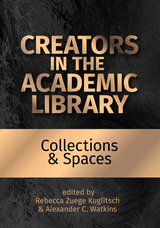 Creators in the Academic Library: Collections and Spaces
Rebecca Zuege Kuglitsch
Association of College & Research Libraries, 2023 Engineering students, designers, studio artists, and other student creators have unique research needs that libraries are well-positioned to meet. They use academic literature to inspire and ground creation, but also seek information from trade literature, patents, technical standards, and how-to manuals. They apply tacit knowledge and need to learn not only how to write within academic discourse but also create objects, designs, and experiences. In four parts, Creators in the Academic Library: Collections and Spaces explores how academic libraries can build collections, spaces, and communities that serve creators. - Tailoring Collections for Creators
- Making in the Academic Library
- Creating Experiences in the Library
- Cultivating Creator Communities
Chapters identify innovative ways the academic library can support creators by building new kinds of collections, resources, and experiences, including the use of rare books and archives; building a comprehensive technology and research equipment lending collection; performing in library spaces; supporting sustainability across disciplines; and creating equitable access to creator spaces, tools, and resources. Creators in the Academic Library documents spaces and collections that strive for equity and authenticity, for playfulness and joy, and offers strategies for creating a library open to all comers seeking a place to create in a liberating environment.
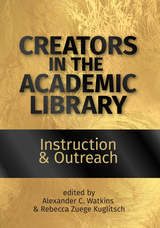 Creators in the Academic Library: Instruction and Outreach
Alexander C. Watkins
Association of College & Research Libraries, 2023 Engineering students, designers, studio artists, and other student creators have unique research needs that libraries are well-positioned to meet. They use academic literature to inspire and ground creation, but also seek information from trade literature, patents, technical standards, and how-to manuals. They apply tacit knowledge and need to learn not only how to write within academic discourse but also create objects, designs, and experiences. In four parts, Creators in the Academic Library: Instruction and Outreach explores how to teach specifically for creator research, motivate learning, and deepen students’ understanding of their own practice. - Technology, Tools, and Techniques for Creation
- Inspiring Creativity through Research
- Creator’s Unique Information Needs
- Grounding Creation in Research
Chapters are grouped by learning objectives rather than discipline to highlight the throughlines that unite creators regardless of their field. They include methods for researching creative technology, tools, and techniques in different settings and disciplines; how to research for inspiration; adapting our tools and teaching to the unique information-seeking behaviors of creator disciplines; and how these skills can be transferred to students’ future careers. Creators in the Academic Library offers learning strategies and objectives that can help you teach all manner of creators.
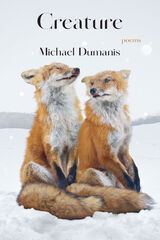 Creature
Michael Dumanis
Four Way Books Creature is a complex poetics of vitality, and it immaculately cleaves: even as it underscores how living in an inherently inhospitable environment will dispossess us of the world and one another, making animal of man, it sutures the rent evolutionary tree, glorifying the interdependence of each extant thing. Michael Dumanis expertly cultivates the multiplicity of language and makes of “creature” a marvelous contronym; we are a creature as in a beast, debased, beholden to nature, and we are creature as in an extension of creation, improbably sentient, mortal, here. In “Autobiography,” the speaker attests to the contradiction at the root of cognizance: “Am, as an animal, // anxious. Appendages always aflutter, / am an amazing accident: alive.” How does the human mammal embody both and neither — communal and itinerant, leaving home to approach it, as an immigrant and a geographic nomad, as someone’s child and another’s parent, as being and thing? How do we negotiate our ouroboric identities while attuned to not just our own fragility, but an impending global extinction event? The answer is the absence of answer. “In the beginning, I thought a great deal / about death and sunlight, et cetera,” Dumanis admits in “Squalor,” but “The Double Dream of Spring” absolves us of outsmarting impermanence. “O what a ball I had, spending the days.” And what should we do in this vernal brevity but exhaust it? We each only have so long to trace our hand “over the stony bones / that, fused together, hold [our] only face.”
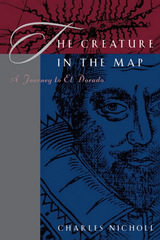 The Creature in the Map: A Journey to El Dorado
Charles Nicholl
University of Chicago Press, 1997 "This brilliantly written reconstruction of Sir Walter Raleigh's 1595 South American journey combines painstaking scholarship, vivid travelogue, and an intuitive sensitivity for the many meanings of the El Dorado myth. . . . Nicholl brings this six-week expedition to life. . . . A rare treat for both intellect and imagination."—Kirkus Reviews
"Walter Raleigh . . . was one of those Elizabethan all-rounders who still seem staggeringly larger than life. . . . Mr. Nicholl's cogent reconstruction of the journey uses Raleigh's own account, 'The Discoverie of Guiana'—part truth, part advertising, part rhapsody—and much well-found ancillary material."—Anthony Bailey, New York Times
"Like The Reckoning, his brilliant account of the murder of Christopher Marlowe, Nicholl's new book might be called an exercise in historical conjuring. The Creature in the Map is an effort not only to analyse but also to call into presence the lived experience of the voyage Raleigh undertook in 1595 to the Orinoco Delta in what is now Venezuela."—Stephen Greenblatt, Times Literary Supplement
"Charles Nicholl belongs to an elite company, that of historians who know how to make research into arcane matters and distant times as engrossing as In Cold Blood or All the President's Men."—Michael Dirda, Washington Post
 Creature Needs: Writers Respond to the Science of Animal Conservation
Christopher Kondrich
University of Minnesota Press, 2024 A kaleidoscopic literary exploration of extinction and conservation, inspired by the latest scientific research
Creature Needs is a polyvocal call to arms about animal extinction and habitat loss that harnesses the power of literature and scientific research to move us, and stir our hearts and minds, toward action and change. A collection of new literary works by prominent writers paired with excerpts from recent scientific articles that inspired and informed them, this innovative anthology engages the collaborative, cross-disciplinary spirit and energy that is necessary to address the impact of humans on all other animals on our planet. Divided into six sections representing the basic needs for survival—air, food, water, shelter, room to move, and each other—the stories and poems in Creature Needs vividly portray how these essential conditions are under assault through climate change, habitat loss, plastic and industrial pollution, and human intervention in natural landscapes. As the dominant species on Earth, humans not only control access to survival resources but we also overconsume and harm them. Rather than surrender to despair, the writers here believe that we have the power, if we choose, to change course and protect these resources. A collaboration with the nonprofit organization Creature Conserve, Creature Needs is a path-setting fusion of literary art and scientific research that deepens our understanding of the interdependence between life and habitat, illuminating the stark choices we face to conserve resources and ensure that the basic needs of all species are met. Contributors: Kazim Ali, Mary-Kim Arnold, Ramona Ausubel, David Baker, Charles Baxter, Aimee Bender, Kimberly Blaeser, Oni Buchanan, Tina Cane, Ching-In Chen, Mónica de la Torre, Tongo Eisen-Martin, Thalia Field, Ben Goldfarb, Annie Hartnett, Sean Hill, Hester Kaplan, Donika Kelly, Robin McLean, Miranda Mellis, Rajiv Mohabir, Kyoko Mori, David Naimon, Craig Santos Perez, Beth Piatote, Rena Priest, Alberto Ríos, Eléna Rivera, Sofia Samatar, Sharma Shields, Eleni Sikelianos, Maggie Smith, Juliana Spahr, Tim Sutton, Jodie Noel Vinson, Asiya Wadud, Claire Wahmanholm, Marco Wilkinson, Jane Wong.
Creature: Poems
Marsha de la O
University of Pittsburgh Press, 2024 Written during the last five years of the poet’s father’s life, Creature is a book about love, destruction, and the self, all standing in relation to family and the natural world. The poems themselves try to move toward what can’t be said by finding connection with other life forms: hawks, hummingbirds, pelicans, lizards, horses, ravens, squid. By moving past linguistic walls into otherness, words become proximate to mystery and inhabit territory where expanses open and embodiment is always on the verge of transformation.
 Creatures
Leonid Tishkov
Duke University Press Leonid Tishkov has been an important figure on the contemporary Moscow arts scene for the past twenty years. Creatures brings Tishkov’s surreal universe to an American audience for the first time. Published in conjunction with an exhibition "Dabloids and Elephants" that originated at the Duke University Museum of Art and that will travel internationally throughout 1994, the book features brilliant color images of the artist’s drawings, paintings, soft sculpture, books, and prints, as well as a play.
The work in Creatures is centered on the imaginative and playful idea of the Dabloids, foot-shaped creatures of all sizes and colors who emerge magically from the Dablus, a sausage-like object that appears one misty morning in the fields of a collective farm. Tishkov’s drawings, paintings, and sculptures recount the history of the Dablus and the Dabloids. These mystical creatures are at once pets and gods, beings immensely wise and yet foolish. They are surreal manifestations of the artistic consciousness even as they are symbols of human isolation. In this sense, Tishkov’s roots in surrealism are charged with humorous social commentary often reminiscent of Hogarth, Red Grooms, and Robert Crumb.
Tishkov explores other mythological and absurdist themes in a series of elephant watercolors in which people live within an elephant trunk. The book also features a translation of the text of Tishkov’s play "Dabloids—A Fantasy," as well as brief essays that provide an introduction to the artist and his work, his mythology, and his roots in Russian folk culture.
Creatures introduces a major contemporary Russian artist to the western world. It should delight all who enter its world and should expand the horizons of all who delight in its artistic merits.
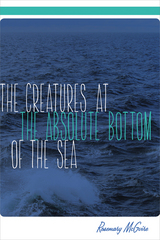 The Creatures at the Absolute Bottom of the Sea
Rosemary McGuire
University of Alaska Press, 2015 A man witnesses a tragic accident that calls his own life into question. A young woman meets her high school sweetheart after many years and seeks to make sense of the separate paths they've taken. A soldier home from Iraq tries to rebuild his life in a remote Alaskan village.
These are fishing stories, told as such stories are meant to be: simple, often coarse, and tinged with the elemental beauty of the sea. They reflect rugged lives lived on the edge of the ocean’s borders, where grief and grace ride the same waves. Rosemary McGuire, a fisherman herself, captures the essential humanity at the heart of each tale. No one comes through unscathed, but all retain a sense of hope and belief in earthly miracles, however humble.
A dazzling debut, The Creatures at the Absolute Bottom of the Sea will leave readers with a sense of the fragility and beauty inherent in eroded lives spent in proximity to danger.
 Creatures Of Habitat: The Changing Nature of Wildlife and Wild Places in Utah and the Intermountain West
Mark Gerard Hengesbaugh
Utah State University Press, 2001 From flying squirrels on high wooded plateaus to hanging gardens in redrock canyons, the Intermountain West is home to some of the world's rarest and most fascinating animals and plants. Creatures of Habitat details many unique but little-known talents of this region's strange and wonderful wild inhabitants and descibes their connections with native environments. For example, readers will learn about the pronghorn antelope's supercharged cardiovascular system, a brine shrimp-powered shorebird that each year flies nonstop from the Great Salt Lake to Central Argentina, and a rare mustard plant recently discovered on Mount Ogden. Emphasizing how increasing loss and degradation of habitat hinders native species' survival, Mark Gerard Hengesbaugh discusses what is happening to wildlife and wild places and what is being done about it.
Well illustrated, this book has habitat maps, pen-and-ink illustrations, and fifty photos of wildlife and wild places selected by photo editor Dan Miller. Also included are guides to wildlife viewing and lists of Utah species, including those considered sensitive, threatened, or endangered.
 Creatures of Reason: John Herschel and the Invention of Science
Stephen Case
University of Pittsburgh Press, 2024 In his lifetime, John Herschel was Britain’s best-known natural philosopher, a world celebrity, and arguably the first modern scientist of the generation in which the term itself was invented. The polymath son of William Herschel, discoverer of Uranus and constructor of the world’s largest telescopes, Herschel took highest honors as a student at Cambridge, conducted groundbreaking work in chemistry and optics, helped establish a mathematical revolution, extended his father’s astronomical surveys to the entire sky, and wrote the popular texts by which a generation of readers learned what it meant to do science. Along the way, Herschel gave to natural philosophy the contours of modern science, defining scientific theories as “creatures of reason rather than of sense.” His creatures of reason could also refer to a new type of scientific practitioner: the natural philosopher beginning to transition into the modern scientist. With this book, Stephen Case encompasses Herschel’s impact on mathematics, chemistry, geology, and optics as well as the organization of science and its relation to government, society, and culture, revealing Herschel’s transformation of the practice of science itself. Drawing on his unpublished manuscripts, correspondence, and notebooks from archives in London, Cambridge, and Austin, this book contributes significantly to our understanding of the early life and career of the nineteenth century’s most influential natural philosopher.
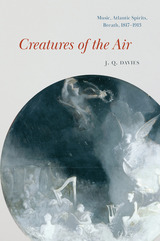 Creatures of the Air: Music, Atlantic Spirits, Breath, 1817–1913
J. Q. Davies
University of Chicago Press, 2023 An account of nineteenth-century music in Atlantic worlds told through the history of the art’s elemental medium, the air.
Often experienced as universal and incorporeal, music seems an innocent art form. The air, the very medium by which music constitutes itself, shares with music a claim to invisibility. In Creatures of the Air, J. Q. Davies interrogates these claims, tracing the history of music’s elemental media system in nineteenth-century Atlantic worlds. He posits that air is a poetic domain, and music is an art of that domain.
From West Central African ngombi harps to the European J. S. Bach revival, music expressed elemental truths in the nineteenth century. Creatures of the Air tells these truths through stories about suffocation and breathing, architecture and environmental design, climate strife, and racial turmoil. Contributing to elemental media studies, the energy humanities, and colonial histories, Davies shows how music, no longer just an innocent luxury, is implicated in the struggle for control over air as a precious natural resource. What emerges is a complex political ecology of the global nineteenth century and beyond.
Credit Crunch Health Care: How Economics Can Save Our Publicly Funded Health Services
Cam Donaldson
Bristol University Press, 2011 World-leading health economist Cam Donaldson defends NHS-type systems on the same basis as their detractors: economic efficiency. However, protecting government funding of health care is not enough: scarcity has to be managed. Donaldson goes on to show how we can get more out of our systems by addressing issues of value for money. In particular, he demonstrates what has been achieved through health care reform but questions how much more this can deliver relative to getting serious about priority setting.The issues addressed in the book have global relevance and this accessible book will therefore appeal to the public, health professionals and health policy specialists.
 The Credit Crunch: Housing Bubbles, Globalisation and the Worldwide Economic Crisis
Graham Turner
Pluto Press, 2008 This book argues that the current financial turmoil signals a crisis in globalisation that will directly challenge the free market economic model.
Graham Turner shows that the housing bubbles in the West were deliberately created to mask the damage inflicted by companies shifting production abroad in an attempt to boost profits. As these bubbles burst, economic growth in many developed countries will inevitably tumble. The Japanese crisis of the 1990s shows that banks and governments may struggle to contain the fallout. The problem has not been limited to the US, UK and Europe: housing bubbles have become endemic across wide swathes of emerging market economies. As the West slides, these countries will see an implosion of their credit bubbles too, shaking their faith in the free market.
Turner is an experienced and successful economic forecaster, whose opinions are sought by large international banks and top financial journalists. Drawing from his first hand experience of the Japanese property crash of the 1990s, he presents his analysis in a clear and persuasive style, showing that the end of housing market growth spells disaster for neoliberal globalisation.
Crédit et débit
Alexander Kluge and Joseph Vogl
Diaphanes, 2013 Les chaînes privées allemandes ne sont pas vraiment réputées pour le niveau élevé des débats qu’elles diffusent; la surprise est d’autant plus grande pour le zappeur qui, aux alentours de minuit, tombe sur ce genre de phrases : « La superstition économique est un peu comme l’éventail des vertus bourgeoises » ou « Les solutions se trouvent toujours dans la rue, dans le trafic. » Aucun doute : il s’agit d’une des émissions culturelles les plus remarquables – au sens plein du mot – d’Alexander Kluge. Kluge a trouvé en Joseph Vogl un partenaire idéal pour sa technique d’interview si caractéristique. Le résultat de cette passion commune, ce sont plus de 40 interviews télévisuelles qui renouvellent le genre en profondeur. La digression, maniée avec un talent particulier, n’y est jamais gratuite.
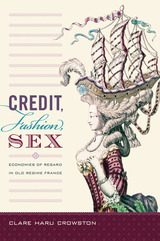 Credit, Fashion, Sex: Economies of Regard in Old Regime France
Clare Haru Crowston
Duke University Press, 2013 In Old Regime France credit was both a central part of economic exchange and a crucial concept for explaining dynamics of influence and power in all spheres of life. Contemporaries used the term credit to describe reputation and the currency it provided in court politics, literary production, religion, and commerce. Moving beyond Pierre Bourdieu's theorization of capital, this book establishes credit as a key matrix through which French men and women perceived their world. As Clare Haru Crowston demonstrates, credit unveils the personal character of market transactions, the unequal yet reciprocal ties binding society, and the hidden mechanisms of political power. Credit economies constituted "economies of regard" in which reputation depended on embodied performances of credibility. Crowston explores the role of fashionable appearances and sexual desire in leveraging credit and reconstructs women's vigorous participation in its gray markets. The scandalous relationship between Queen Marie Antoinette and fashion merchant Rose Bertin epitomizes the vertical loyalties and deep social divides of the credit regime and its increasingly urgent political stakes.
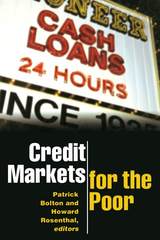 Credit Markets for the Poor
Patrick Bolton
Russell Sage Foundation, 2005 Access to credit is an important means of providing people with the opportunity to make a better life for themselves. Loans are essential for most people who want to purchase a home, start a business, pay for college, or weather a spell of unemployment. Yet many people in poor and minority communities—regardless of their creditworthiness—find credit hard to come by, making the climb out of poverty extremely difficult. How dire are the lending markets in these communities and what can be done to improve access to credit for disadvantaged groups? In Credit Markets for the Poor, editors Patrick Bolton and Howard Rosenthal and an expert team of economists, political scientists, and legal and business scholars tackle these questions with shrewd analysis and a wealth of empirical data. Credit Markets for the Poor opens by examining what credit options are available to poor households. Economist John Caskey profiles how weak credit options force many working families into a disastrous cycle of short-term, high interest loans in order to sustain themselves between paychecks. Löic Sadoulet explores the reasons that community lending organizations, which have been so successful in developing countries, have failed in more advanced economies. He argues the obstacles that have inhibited community lending groups in industrialized countries—such as a lack of institutional credibility and the high cost of establishing lending networks—can be overcome if banks facilitate the community lending process and establish a system of repayment insurance. Credit Markets for the Poor also examines how legal institutions affect the ability of the poor to borrow. Daniela Fabbri and Mario Padula argue that well-meaning provisions making it more difficult for lenders to collect on defaulted loans are actually doing a disservice to the poor in credit markets. They find that in areas with lax legal enforcement of debt agreements, credit markets for the poor are underdeveloped because lenders are unwilling to take risks on issuing credit or will do so only at exorbitant interest rates. Timothy Bates looks at programs that facilitate small-business development and finds that they have done little to reduce poverty. He argues that subsidized business creation programs may lure inexperienced households into entrepreneurship in areas where little profitable investment is possible, hence setting them up for failure. With clarity and insightful analysis, Credit Markets for the Poor demonstrates how weak credit markets are impeding the social and economic mobility of the needy. By detailing the many disadvantages that impoverished people face when seeking to borrow, this important new volume highlights a significant national problem and offers solutions for the future.
 Credit to the Nation: Eastern European Jewish Immigrant Bankers and the Shaping of American Finance, 1873–1930
Rebecca Kobrin
Harvard University Press From a leading historian, the story of how entrepreneurial Jewish immigrants transformed commercial banking and enabled the economic and social advancement of Jews in America.
What are immigrants to do when business opportunities abound in their new home, but banks refuse essential financial support? How could they make the journey in the first place without helping hands? In this lively history, Rebecca Kobrin chronicles the turn-of-the-twentieth-century Jewish immigrants who stepped up by doing the lending themselves. Arriving from the Russian Empire and settling primarily in New York, they made livelihoods by assisting fellow Jews so they could purchase passage to the United States and, after arriving, obtain credit that other lenders would not dare provide.
Credit to the Nation traces the novel practices of bankers who not only enabled the flourishing of American Jewry but also revolutionized the US financial industry. Drawing on previously unexamined archival materials in Russian, Yiddish, German, and English, Kobrin tells a story that is also crucial to the history of New York, as immigrant bankers’ financing of real estate transformed wide swathes of the city. Lenders drove a boom in the prices of tenement buildings, but heavy speculation eventually precipitated the downfall of immigrant banking. Kobrin notes in particular the case of the Bank of United States—a private lender catering primarily to Jewish businessmen—which the Federal Reserve refused to bail out from bankruptcy in 1930.
Immigrants’ grasping for credit, and the rise and fall of immigrant banks, gave way to a contemporary banking industry that, ironically, refuses credit to today’s immigrants. Kobrin reminds us that now, as before, the denial of credit pushes entrepreneurial Americans into unregulated money-lending and the trap of endless debt.
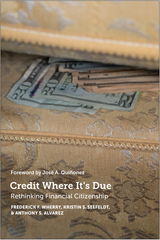 Credit Where It's Due: Rethinking Financial Citizenship
Frederick F. Wherry
Russell Sage Foundation, 2019 An estimated 45 million adults in the U.S. lack a credit score at time when credit invisibility can reduce one’s ability to rent a home, find employment, or secure a mortgage or loan. As a result, individuals without credit—who are disproportionately African American and Latino—often lead separate and unequal financial lives. Yet, as sociologists and public policy experts Frederick Wherry, Kristin Seefeldt, and Anthony Alvarez argue, many people who are not recognized within the financial system engage in behaviors that indicate their credit worthiness. How might institutions acknowledge these practices and help these people emerge from the financial shadows? In Credit Where It’s Due, the authors evaluate an innovative model of credit-building and advocate for a new understanding of financial citizenship, or participation in a financial system that fosters social belonging, dignity, and respect.
Wherry, Seefeldt, and Alvarez tell the story of the Mission Asset Fund, a San Francisco-based organization that assists mostly low- and moderate-income people of color with building credit. The Mission Asset Fund facilitates zero-interest lending circles, which have been practiced by generations of immigrants, but have gone largely unrecognized by mainstream financial institutions. Participants decide how the circles are run and how they will use their loans, and the organization reports their clients’ lending activity to credit bureaus. As the authors show, this system not only helps clients build credit, but also allows them to manage debt with dignity, have some say in the creation of financial products, and reaffirm their sense of social membership. The authors delve into the history of racial wealth inequality in the U.S. to show that for many black and Latino households, credit invisibility is not simply a matter of individual choices or inadequate financial education. Rather, financial marginalization is the result of historical policies that enabled predatory lending, discriminatory banking and housing practices, and the rollback of regulatory protections for first-time homeowners.
To rectify these inequalities, the authors propose common sense regulations to protect consumers from abuse alongside new initiatives that provide seed capital for every child, create affordable short-term loans, and ensure that financial institutions treat low- and moderate-income clients with equal respect. By situating the successes of the Mission Asset Fund in the larger history of credit and debt, Credit Where It’s Due shows how to prioritize financial citizenship for all.
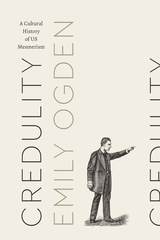 Credulity: A Cultural History of US Mesmerism
Emily Ogden
University of Chicago Press, 2018 From the 1830s to the Civil War, Americans could be found putting each other into trances for fun and profit in parlors, on stage, and in medical consulting rooms. They were performing mesmerism. Surprisingly central to literature and culture of the period, mesmerism embraced a variety of phenomena, including mind control, spirit travel, and clairvoyance. Although it had been debunked by Benjamin Franklin in late eighteenth-century France, the practice nonetheless enjoyed a decades-long resurgence in the United States. Emily Ogden here offers the first comprehensive account of those boom years.
Credulity tells the fascinating story of mesmerism’s spread from the plantations of the French Antilles to the textile factory cities of 1830s New England. As it proliferated along the Eastern seaboard, this occult movement attracted attention from Ralph Waldo Emerson’s circle and ignited the nineteenth-century equivalent of flame wars in the major newspapers. But mesmerism was not simply the last gasp of magic in modern times. Far from being magicians themselves, mesmerists claimed to provide the first rational means of manipulating the credulous human tendencies that had underwritten past superstitions. Now, rather than propping up the powers of oracles and false gods, these tendencies served modern ends such as labor supervision, education, and mediated communication. Neither an atavistic throwback nor a radical alternative, mesmerism was part and parcel of the modern. Credulity offers us a new way of understanding the place of enchantment in secularizing America.
Cree Legends and Narratives from the West Coast of James Bay
Simeon Scott
University of Manitoba Press, 1995 This is the first major body of annotated texts in James Bay Cree, and a unique documentation of Swampy and Moose Cree (Western James Bay) usage of the 1950s and 1960s. Conversations and interviews with 16 different speakers include: legends, reminiscences, historical narratives, stories and conversations, as well as descriptions of technology. The book includes a detailed pronunciation guide, notes on Cree terms, informants' comments, dialect variations, and descriptions of cultural values and customs. The introduction describes and compares the various genres in traditional and popular culture. Cree and English, with full glosssary.
 The Creed As Symbol
Nicholas Ayo
University of Notre Dame Press, 1990 From its probable beginnings as an interrogatory creed for catechumens to its current place in the Sunday liturgy, the Apostoles’ Creed has played an integral role in the sacraments of the church. The symbol of faith, as it was called by generations of Christians, was not only a vehicle of orthodox instruction but a profession of faith of profound beauty and meaning to be memorized and pondered for a lifetime. It is this Creed, a lasting achievement of the Christian tradition that Nicholas Ayo, C.S.C., presents to the general reader in The Creed as Symbol.
A meditative yet thought-provoking study, this volume presents the Apostles’ Creed as more than a basic confession of faith but as a symbol/metaphor of the mystery of God. Ayo holds that the Apostles’ Creed is a sacred poem, an ancient psalm, holy and beautiful in its form as well as in its content. Basic literary criticism and linguistics are used to explicate the figurative body of the Creed—its words—as well as the theological meditation of its soul—the mysteries it seeks to teach. And as Ayo balances the study of the medium with the message, he does so with the conviction that the two are inextricably linked together and can never be separated.
Ayo divides the Apostoles’ Creed into its 12 historically recognized articles, each with its own chapter. In addition to his introduction, Ayo has included a brief history of the Creed’s formation, a full summary of the ideas covered, an appendix containing differing versions of the Creed, a bibliography, and complete notes. This work is an ideal companion piece to any student religious text or standing alone, as a parish renewal source book or primary text for catechumens. The Creed as Symbol will enrich anyone’s understanding of the Creed, the perennial and core doctrine of Christianity
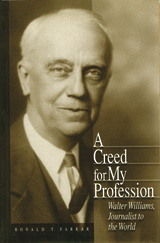 A Creed for My Profession: Walter Williams, Journalist to the World
Ronald T. Farrar
University of Missouri Press, 1998 This superb biography provides for the first time a candid look at the remarkable life of Walter Williams, the man who founded the world's first school of journalism and perhaps contributed more toward the promotion of professional journalism than any other person of his time. Williams, the youngest of six children, was born in Boonville, Missouri, in 1864. Never an athletic child, he always had a love of books and of learning; yet, he scarcely had a high school education. He began his journalistic career as a printer's devil at seventy cents per week and eventually became editor and part- owner of a weekly in Columbia, Missouri. During his time as an editor, Williams became convinced that journalism would never reach its potential until its practitioners had the opportunity for university training in their field. After years of crusading, he established the first journalism school, on the University of Missouri campus. Later, he was chosen president of the University of Missouri, which he led with distinction during the Great Depression. Williams was an unwavering advocate of high professional standards. His Journalist's Creed became one of the most widely circulated codes of professional ethics. Williams inspired the confidence of his fellow journalists, and he carried his message to nearly every country in which newspapers were published. Not only did he invent journalism education, he also created global organizations of journalists and spread the gospel of professionalism throughout the world. His death, in 1935, was mourned throughout the United States, and editorial tributes came from around the world. As one British editor succinctly put it, "Williams was not born to greatness. Neither was it thrust upon him. Literally, he achieved greatness."
The Creed of a Victorian Pagan
Robert Peel
Harvard University Press George Meredith, according to Mr. Chesterton, was perhaps the only man in the modern world who has almost had the high honor of rising out of the low estate of a Pantheist into the high estate of a Pagan. This subtle discrimination forms the starting point for Mr. Peel’s brilliant essay, which points out the spiritual values in Meredith's work and shows how Meredith's eventual compromise offers to most readers of to-day a veritable refuge from which the common level of life can be viewed completely and clearly.
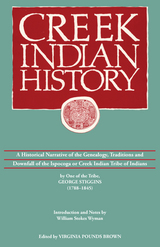 Creek Indian History: A Historical Narrative of the Genealogy, Traditions and Downfall of the Ispocoga or Creek Indian Tribe of Indians by One of the Tribe, George Stiggins (1788-1845)
George Stiggins
University of Alabama Press, 2003 George Stiggins, a Creek Indian half blood living in Alabama, wrote this history more than 150 years ago. Raised in the white culture by his father, an English trader, Stiggins nevertheless lived in close contact with the Creeks because his mother was a full blood of the Natchez tribe, part of the Creek Confederacy.
Stiggins writes with firsthand knowledge of the tribes in the central southeast—the Alabamas, Natchez, Abekas, Uchees, and others. He tells of their origins, their towns and chiefs, and their way of life, he traces critical events leading to the Creek War—the battles of Burnt Corn and Fort Mims—and details the roles of the Indian leaders involved. In “Tecumseh and the Age of Prophecy,” he describes how the powerful influence of prophets, such as Josiah Francis and Jim Boy, who incited the Creeks to civil war as the confederacy split into war and peace factions. Stiggin’s account of William Weatherford’s controversial role in the Creek War has special value because Weatherford was Stiggins’s brother-in-law. His descriptions of religious and social aspects of the Creek lifeways make this work prime source material. William Wyman’s notes and introduction put the Stiggins account into historical perspective and trace its circuitous route to publication. First issued in 1989, Creek Indian History has become an important primary document for the study of Native American history and culture.
The Creek War of 1813 and 1814
H. S. Halbert and T. H. Ball, edited by Frank L. Owsley, Jr.
University of Alabama Press, 1995 The first edition of Halbert and Ball's Creek War was published in 1895, and a new edition containing an introductory essay, supplementary notes, a bibliography, and an index by Frank L. Owsley Jr., was published in 1969. This standard account of one of the most controversial wars in which Americans have fought is again available, with introductory materials and a bibliography revised to reflect the advances in scholarship since the 1969 edition. This facsimile reproduction of the 1895 original provides a full and sympathetic account of the Indians' point of view, from the earliest visit of the great Shawnee chief Tecumseh to the southern tribes in 1811, through the buildup of apprehension and hostilities leading to the fateful battles at Burnt Corn, Fort Mims, and Holy Ground.
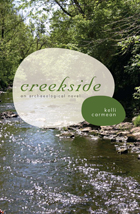 Creekside: An Archaeological Novel
Kelli Carmean
University of Alabama Press, 2010 In Creekside, dedicated archaeologist Meg Harrington guides her students in a race against time to protect the legacy of the past before bulldozers rip it to shreds. The setting is a Kentucky pasture slated for development—the construction of the new Creekside subdivision. Once, that same beautiful stretch of land was home to three generations who experienced love, loss, and tragedy in their log cabin beside the creek. It was here during the late 18th century that Estelle Mullins struggled to build her home on the dangerous frontier. In Meg’s 21st-century world of archaeology we read about excavation techniques, daily experiences at a dig, tight construction deadlines, the use of heavy equipment, report writing, artifact analysis, damage from looters and collectors, and the reality of site destruction in the path of modern development. The depiction of Estelle’s frontier life includes Kentucky’s early Euro-American settlement of the Cumberland Gap, encounters with Shawnee defending their land, Protestant fragmentation, the rise of religious fundamentalism, the immigrant stampede down the Ohio River, and the persistent issue of class-based land ownership. The two partially interwoven story lines link artifact and place, ancestors and descendants, the present and the past, and inspire us to explore the personal connections between them all in fresh and vital ways.
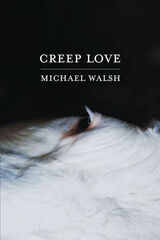 Creep Love
Michael Walsh
Autumn House Press, 2021 Michael Walsh’s poetry collection Creep Love explores a family contending with a complex and ongoing crisis, the aftermath of which creates a shockwave that reverberates through these poems. Stories, half-truths, and lies combine into disturbing fable: A young pregnant woman flees her abusive boyfriend only to discover with terror that he is focused on her younger sister. When her younger sister later gives birth to her abusive ex’s other sons, the unsettling presence of the child’s father becomes unavoidable, and the family soon forces the first son to become a family secret.
We come to find out that the father carries a secret of his own. As tensions rise, attacks within the family escalate and finally culminate in an attempted murder. In Creep Love, Walsh captures the terror of this event, and these poems take us through the surprising outcomes. Near death, rather than floating into light due to hypoxia—a temporary release from the grip of compounding trauma—the speaker sinks into all-encompassing darkness. The anxiety of this moment returns him to his body from the edge of death. These poems give witness to the fallout, demonstrating how love can be charged with something ultimately unknowable.
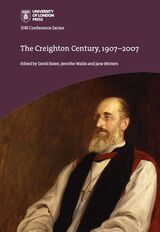 The Creighton Century, 1907–2007
Edited by David Bates, Jennifer Wallis, and Jane Winters
University of London Press, 2020 An edited collection of classic lectures from acclaimed historians.
The Creighton Century, 1907–2007 offers a selection of ten classic lectures on history from the first hundred years of the University of London’s prestigious Creighton Lecture series.
This volume offers a chance to revisit some of the great lectures of our time, including previously unpublished lectures by R. H. Tawney, Lucy Sutherland, Donald Coleman, Eric Hobsbawm, and Keith Thomas, published here with commentaries by Virginia Berridge, Justin Champion, Julian Hoppit, and Jinty Nelson, among others. This volume provides a fascinating insight into the development of the discipline of history over the twentieth and early twenty-first century, with lectures on the meaning of truth and modern mythologies, revealing some significant changes in approach and emphasis as well as some surprising continuities.
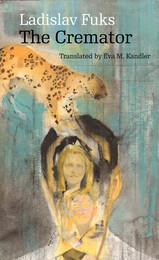 The Cremator
Ladislav Fuks
Karolinum Press, 2016 “The devil’s neatest trick is to persuade us that he doesn’t exist.”—Giovanni Papini
It is a maxim that both rings true in our contemporary world and pervades this tragicomic novel of anxiety and evil set amid the horrors of World War II. As a gay man living in a totalitarian, patriarchal society, noted Czech writer Ladislav Fuks identified with the tragic fate of his Jewish countrymen during the Holocaust. The Cremator arises from that shared experience. Fuks presents a grotesque, dystopian world in which a dutiful father, following the strict logic of his time, liberates the souls of his loved ones by destroying their bodies—first the dead, then the living. As we watch this very human character—a character who never ceases to believe that he is doing good—become possessed by an inhuman ideology, the evil that initially permeates the novel’s atmosphere concretizes in this familiar family man. A study of the totalitarian mindset with stunning resonance for today, The Cremator is a disturbing, powerful work of literary horror.
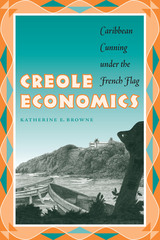 Creole Economics: Caribbean Cunning under the French Flag
By Katherine E. Browne
University of Texas Press, 2004 What do the trickster Rabbit, slave descendants, off-the-books economies, and French citizens have to do with each other? Plenty, says Katherine Browne in her anthropological investigation of the informal economy in the Caribbean island of Martinique. She begins with a question: Why, after more than three hundred years as colonial subjects of France, did the residents of Martinique opt in 1946 to integrate fully with France, the very nation that had enslaved their ancestors? The author suggests that the choice to decline sovereignty reflects the same clear-headed opportunism that defines successful, crafty, and illicit entrepreneurs who work off the books in Martinique today. Browne draws on a decade of ethnographic fieldwork and interview data from all socioeconomic sectors to question the common understanding of informal economies as culture-free, survival strategies of the poor. Anchoring her own insights to longer historical and literary views, the author shows how adaptations of cunning have been reinforced since the days of plantation slavery. These adaptations occur, not in spite of French economic and political control, but rather because of it. Powered by the "essential tensions" of maintaining French and Creole identities, the practice of creole economics provides both assertion of and refuge from the difficulties of being dark-skinned and French. This powerful ethnographic study shows how local economic meanings and plural identities help explain work off the books. Like creole language and music, creole economics expresses an irreducibly complex blend of historical, contemporary, and cultural influences.
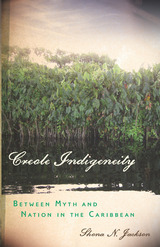 Creole Indigeneity: Between Myth and Nation in the Caribbean
Shona N. Jackson
University of Minnesota Press, 2012 During the colonial period in Guyana, the country’s coastal lands were worked by enslaved Africans and indentured Indians. In Creole Indigeneity, Shona N. Jackson investigates how their descendants, collectively called Creoles, have remade themselves as Guyana’s new natives, displacing indigenous peoples in the Caribbean through an extension of colonial attitudes and policies. Looking particularly at the nation’s politically fraught decades from the 1950s to the present, Jackson explores aboriginal and Creole identities in Guyanese society. Through government documents, interviews, and political speeches, she reveals how Creoles, though unable to usurp the place of aboriginals as First Peoples in the New World, nonetheless managed to introduce a new, more socially viable definition of belonging, through labor. The very reason for bringing enslaved and indentured workers into Caribbean labor became the organizing principle for Creoles’ new identities. Creoles linked true belonging, and so political and material right, to having performed modern labor on the land; labor thus became the basis for their subaltern, settler modes of indigeneity—a contradiction for belonging under postcoloniality that Jackson terms “Creole indigeneity.” In doing so, her work establishes a new and productive way of understanding the relationship between national power and identity in colonial, postcolonial, and anticolonial contexts.
 Creole Medievalism: Colonial France and Joseph Bédier’s Middle Ages
Michelle R. Warren
University of Minnesota Press, 2010 Joseph Bédier (1864-1938) was one of the most famous scholars of his day. He held prestigious posts and lectured throughout Europe and the United States, an activity unusual for an academic of his time. A scholar of the French Middle Ages, he translated Tristan and Isolde as well as France's national epic, The Song of Roland. Bédier was publicly committed to French hegemony, yet he hailed from a culture that belied this ideal-the island of Réunion in the southern Indian Ocean.
In Creole Medievalism, Michelle Warren demonstrates that Bédier's relationship to this multicultural and economically peripheral colony motivates his nationalism in complex ways. Simultaneously proud of his French heritage and nostalgic for the island, Bédier defends French sovereignty based on an ambivalent resistance to his creole culture. Warren shows that in the early twentieth century, influential intellectuals from Réunion helped define the new genre of the "colonial novel," adopting a pro-colonial spirit that shaped both medieval and Francophone studies. Probing the work of a once famous but little understood cultural figure, Creole Medievalism illustrates how postcolonial France and Réunion continue to grapple with histories too varied to meet expectations of national unity.
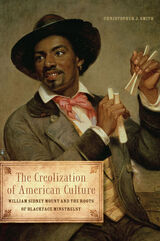 The Creolization of American Culture: William Sidney Mount and the Roots of Blackface Minstrelsy
Christopher J. Smith
University of Illinois Press, 2014 The Creolization of American Culture examines the artworks, letters, sketchbooks, music collection, and biography of the painter William Sidney Mount (1807–1868) as a lens through which to see the multiethnic antebellum world that gave birth to blackface minstrelsy. As a young man living in the multiethnic working-class community of New York's Lower East Side, Mount took part in the black-white musical interchange his paintings depict. An avid musician and tune collector as well as an artist, he was the among the first to depict vernacular fiddlers, banjo players, and dancers precisely and sympathetically. His close observations and meticulous renderings provide rich evidence of performance techniques and class-inflected paths of musical apprenticeship that connected white and black practitioners. Looking closely at the bodies and instruments Mount depicts in his paintings as well as other ephemera, Christopher J. Smith traces the performance practices of African American and Anglo-European music-and-dance traditions while recovering the sounds of that world. Further, Smith uses Mount's depictions of black and white music-making to open up fresh perspectives on cross-ethnic cultural transference in Northern and urban contexts, showing how rivers, waterfronts, and other sites of interracial interaction shaped musical practices by transporting musical culture from the South to the North and back. The "Africanization" of Anglo-Celtic tunes created minstrelsy's musical "creole synthesis," a body of melodic and rhythmic vocabularies, repertoires, tunes, and musical techniques that became the foundation of American popular music. Reading Mount's renderings of black and white musicians against a background of historical sites and practices of cross-racial interaction, Smith offers a sophisticated interrogation and reinterpretation of minstrelsy, significantly broadening historical views of black-white musical exchange.
|
|



